I just came back from Portugal, which was my first ever visit to Western Europe. It’s a cool place; the city of Lisboa has a lot in common with San Francisco, so much that sometimes I almost felt like I hadn’t even left. They both have steep, narrow streets, city traffic, similar scrubland flora, tourists in improbable vehicles, a bay breeze, numerous pigeons and House Sparrows, and even a Golden Gate Bridge (no kidding). Other than that, though, things were different!
If you want really close-up pictures of beautiful birds, skip to the end, as I visited the Lisboa Zoo and took pictures of all their lovely parrots and others. If you’re more interested in the local wildlife, continue on ahead.
Water Birds
While Lisboa is also situated on an estuary–the meeting of the Tagus and the Atlantic–the surrounding area is quite urban and doesn’t attract as many waterbirds. The Sado Estuary is another bay/river to the south that has a few regions designated as nature preserves. However, they’re a bit off the beaten path. Even though my Uber driver didn’t speak English, I could tell he was wondering where the heck I was going.
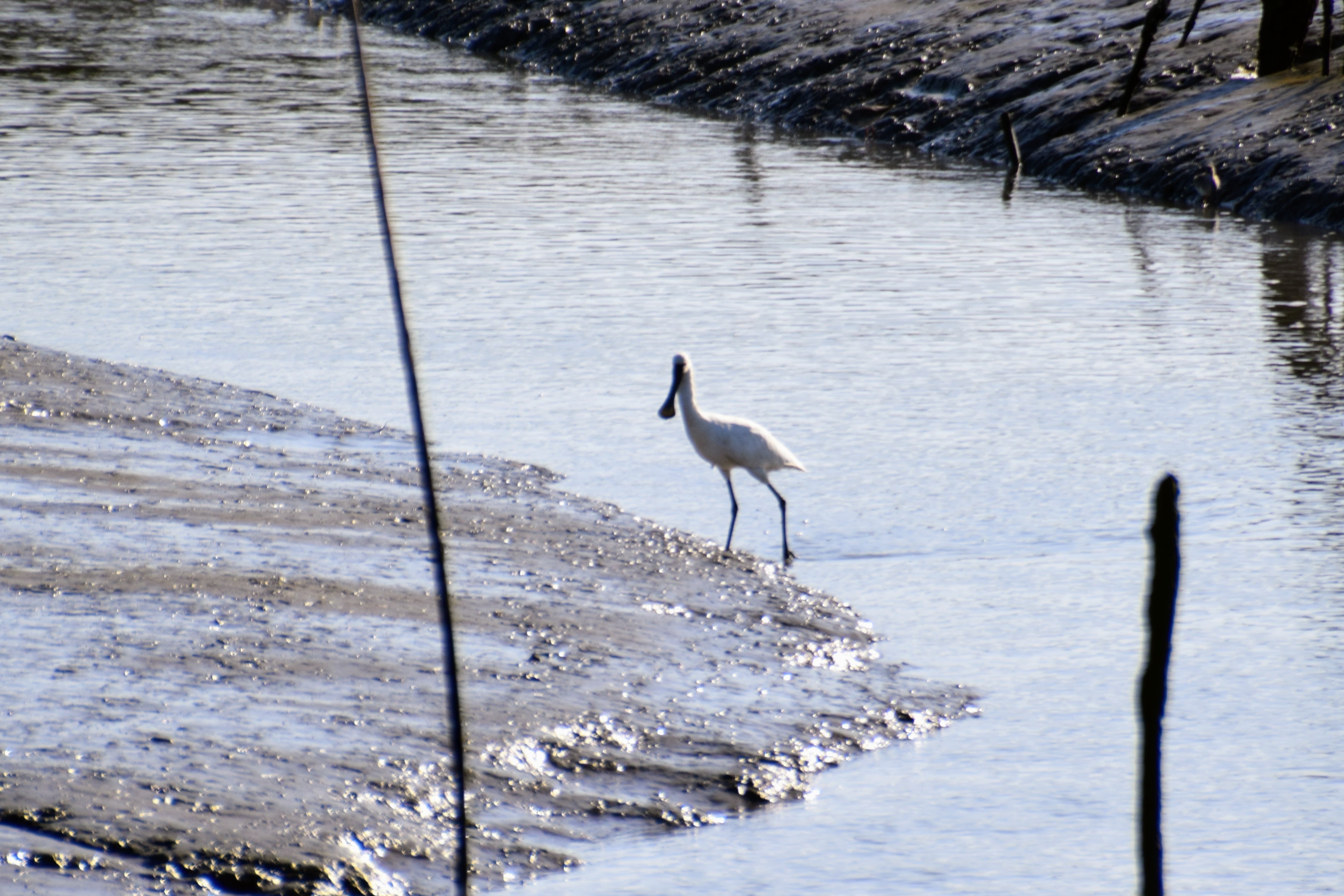
The mudflats were home to lots of wading birds, terns, and gulls. This is a Eurasian Spoonbill, a relative of Florida’s Roseate Spoonbill. The Eurasian variety doesn’t turn pink, but sometimes it gets an orange patch on its neck and chest. It must not be eating as many crustaceans. This was the only spoonbill I saw. I was lucky to encounter one!
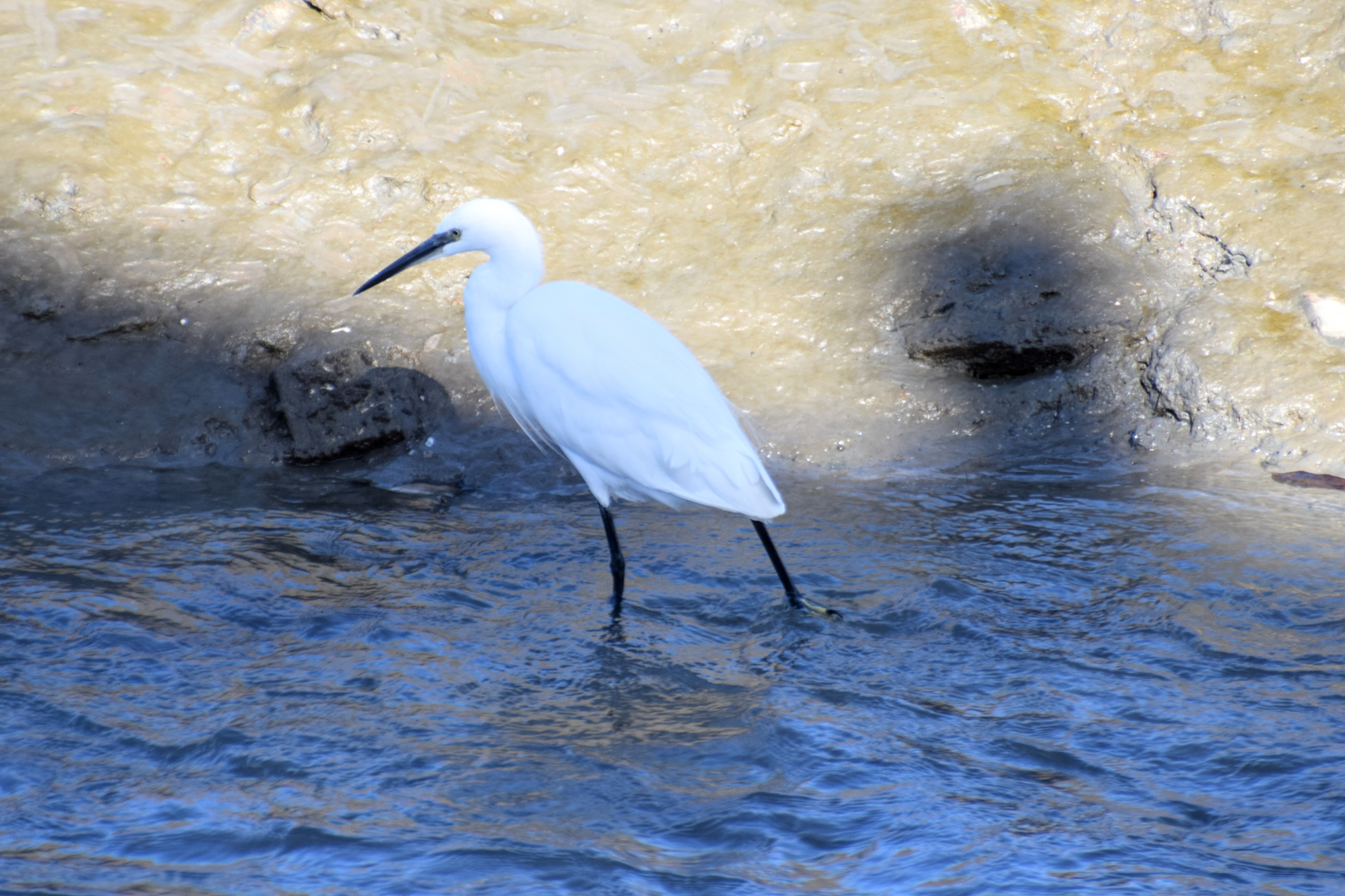
This is a Little Egret, a common sight on the mudflats. It looks like a cross between the Snowy Egrets and Great Egrets we have at home.
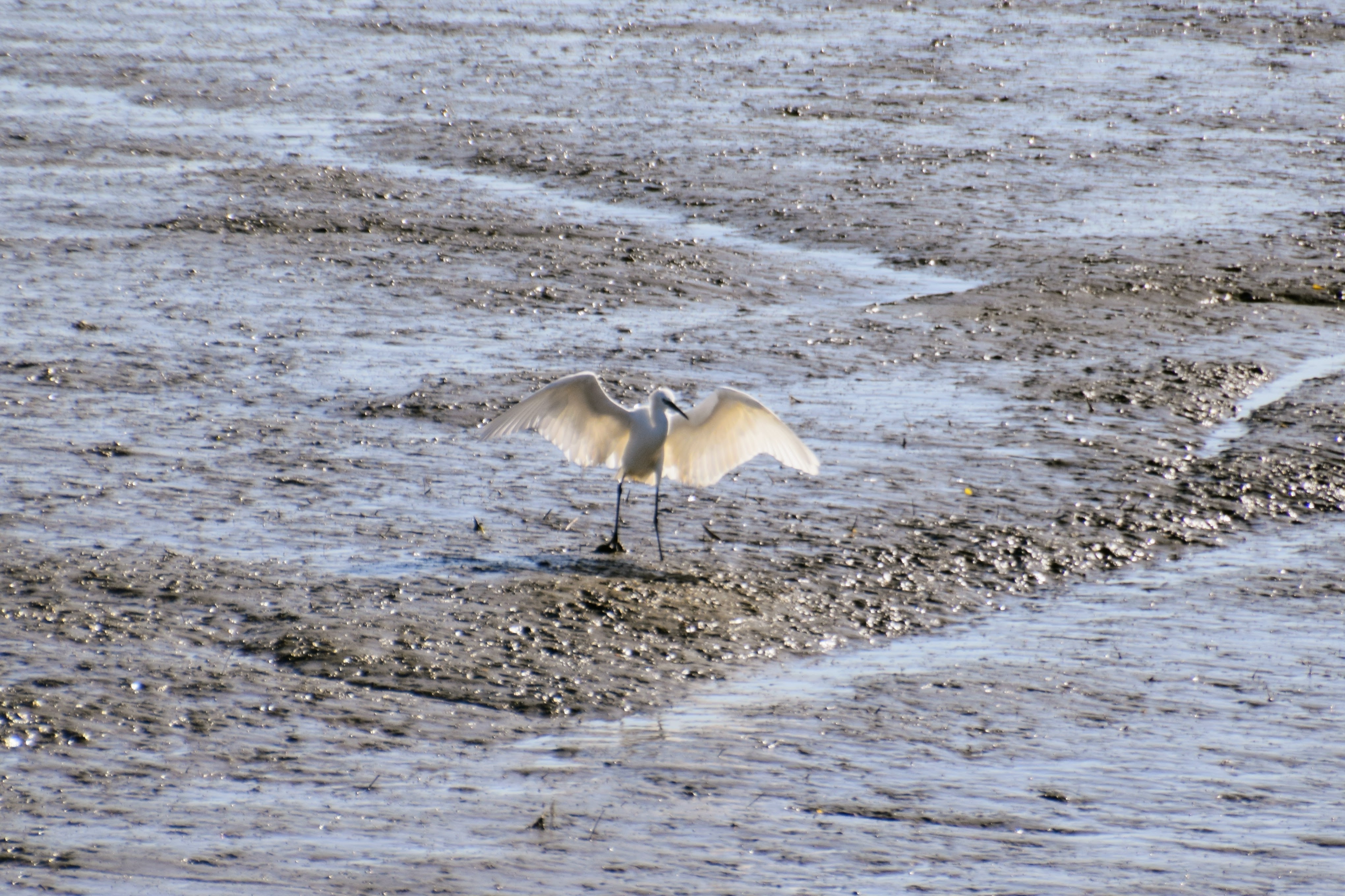
Here, a Little Egret is landing on the mudflat. You can see in his left (our right) wing where his arm actually ends. Some thirty percent of the wing length is just feather!
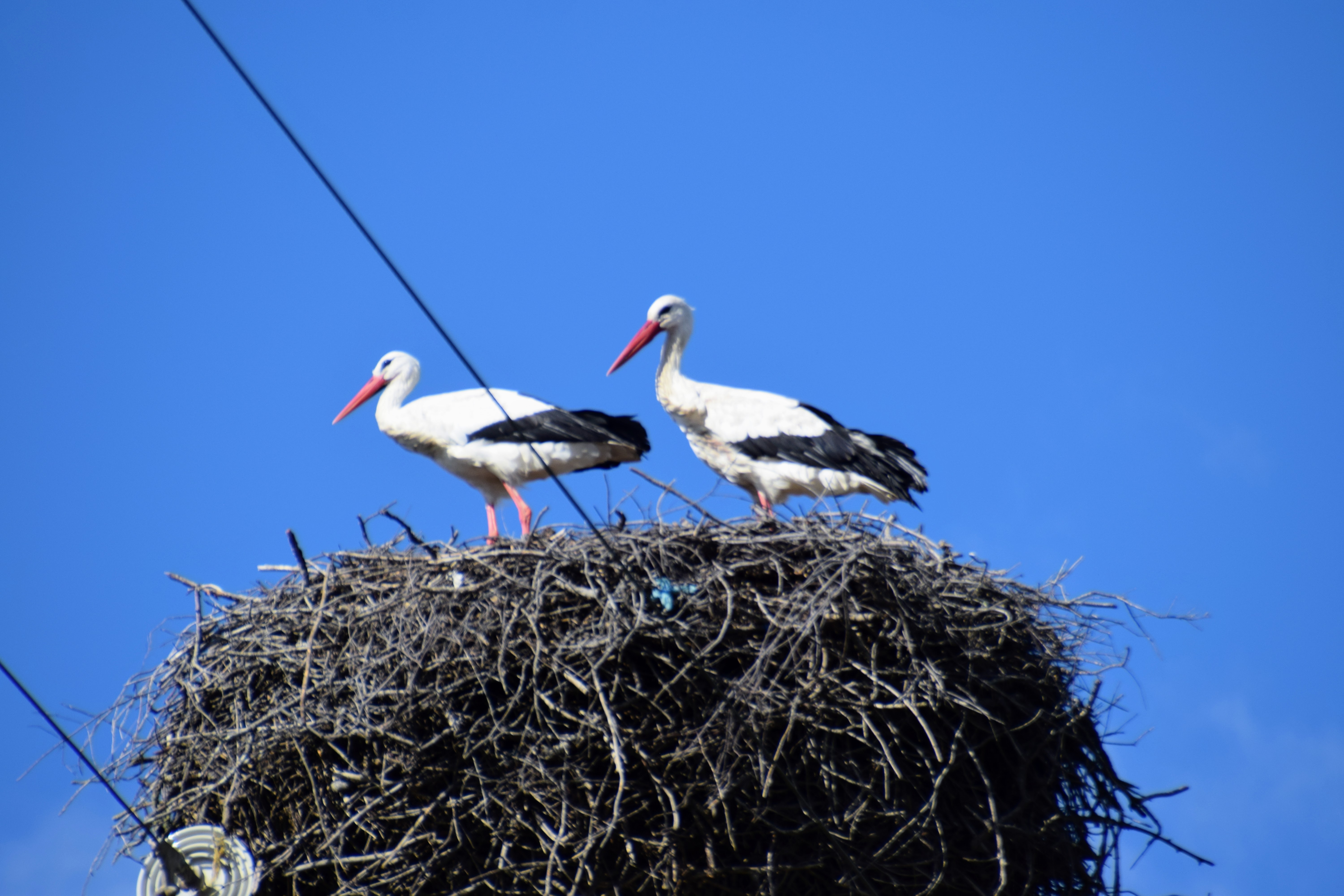
These are White Storks, a very large bird that builds huge nests on top of chimneys and power lines (and presumably trees, but I didn’t see any doing that). There were so many of them–near the estuary, every single chimney and every power pole had a giant nest on it! In some places, you could see six nests without turning your head.
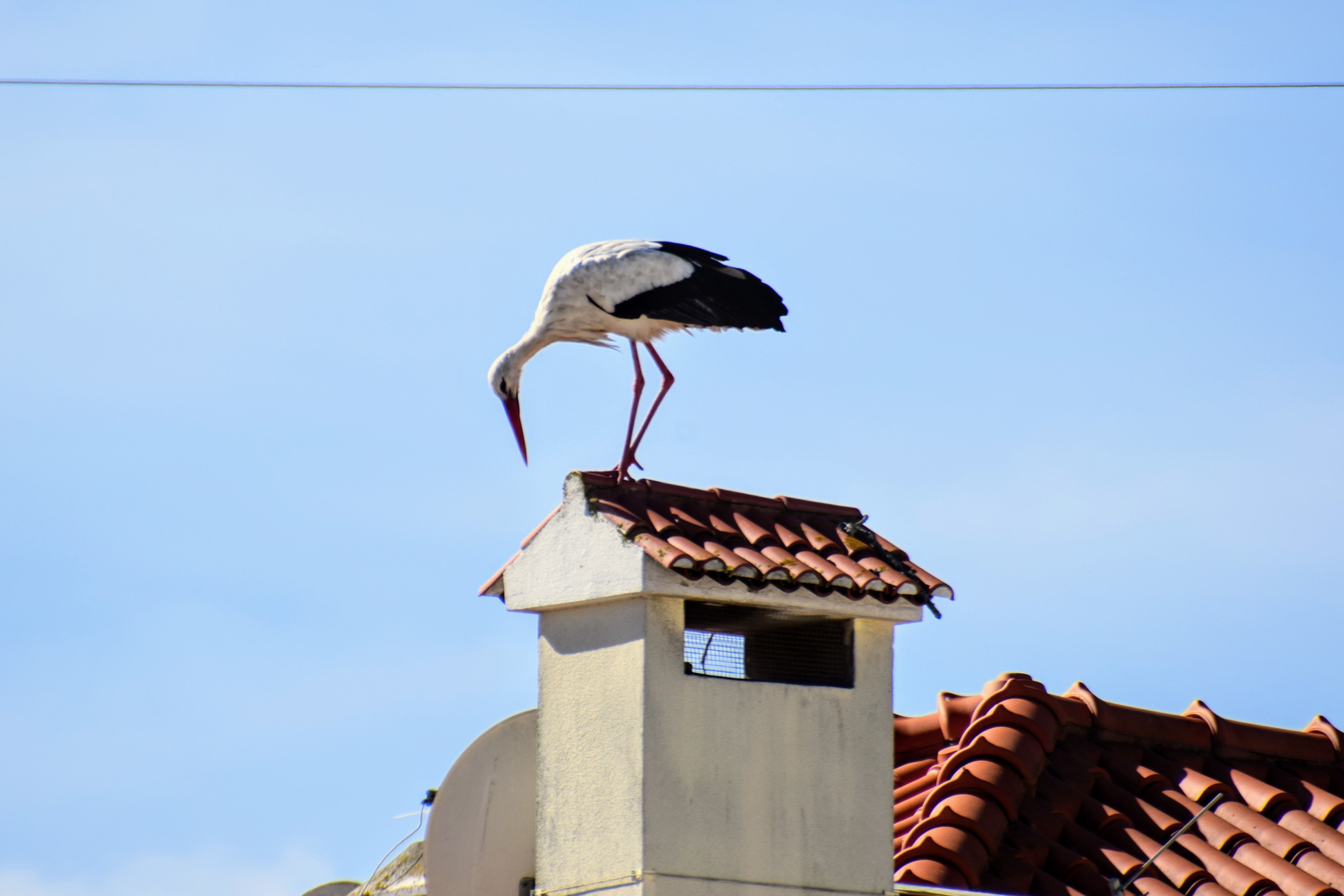
I think this stork was scoping out this chimney to see if it would be suitable for a nest. Maybe a bit more challenging, with the sloped top?
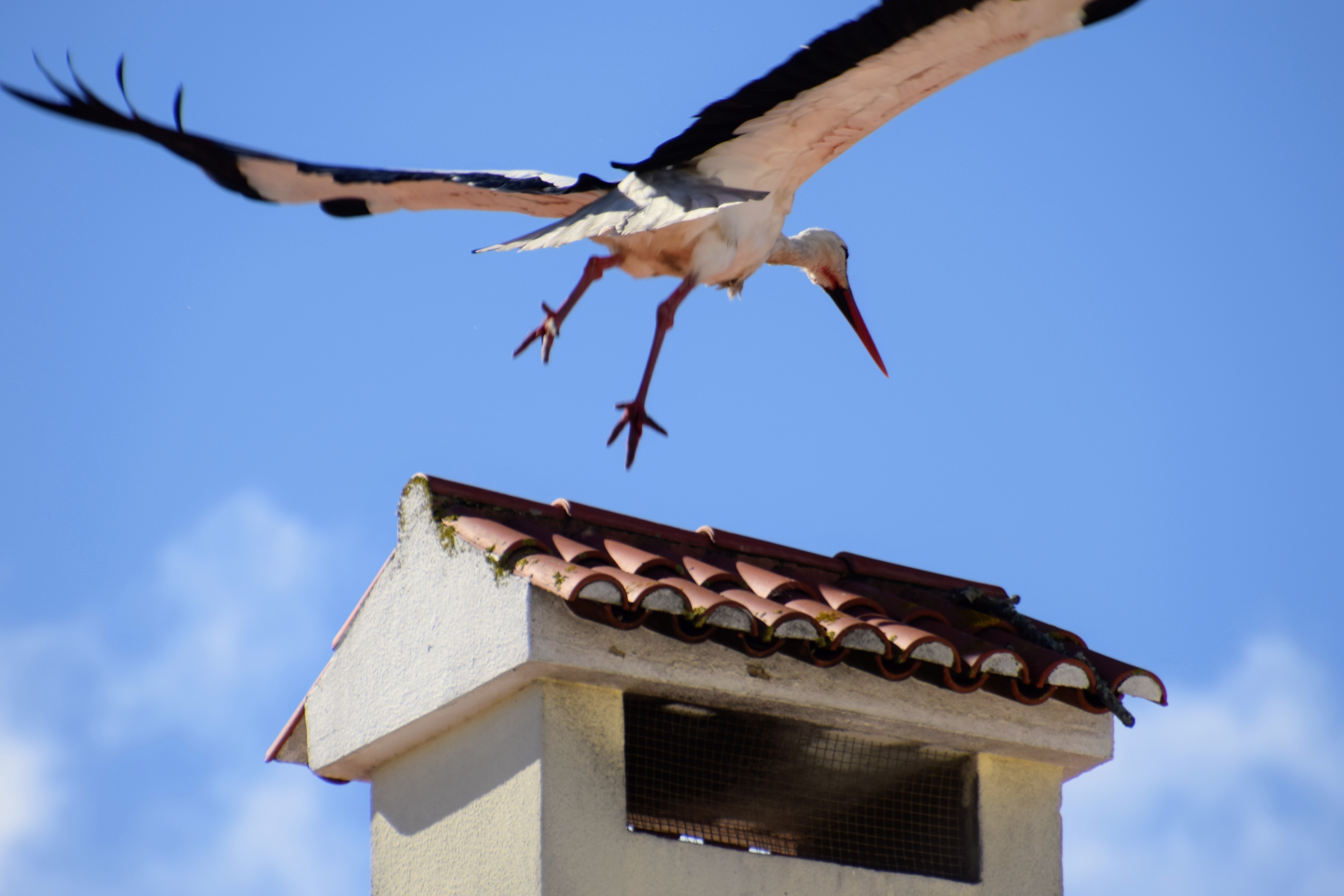
I got too close and scared him off. That’s one big bird!
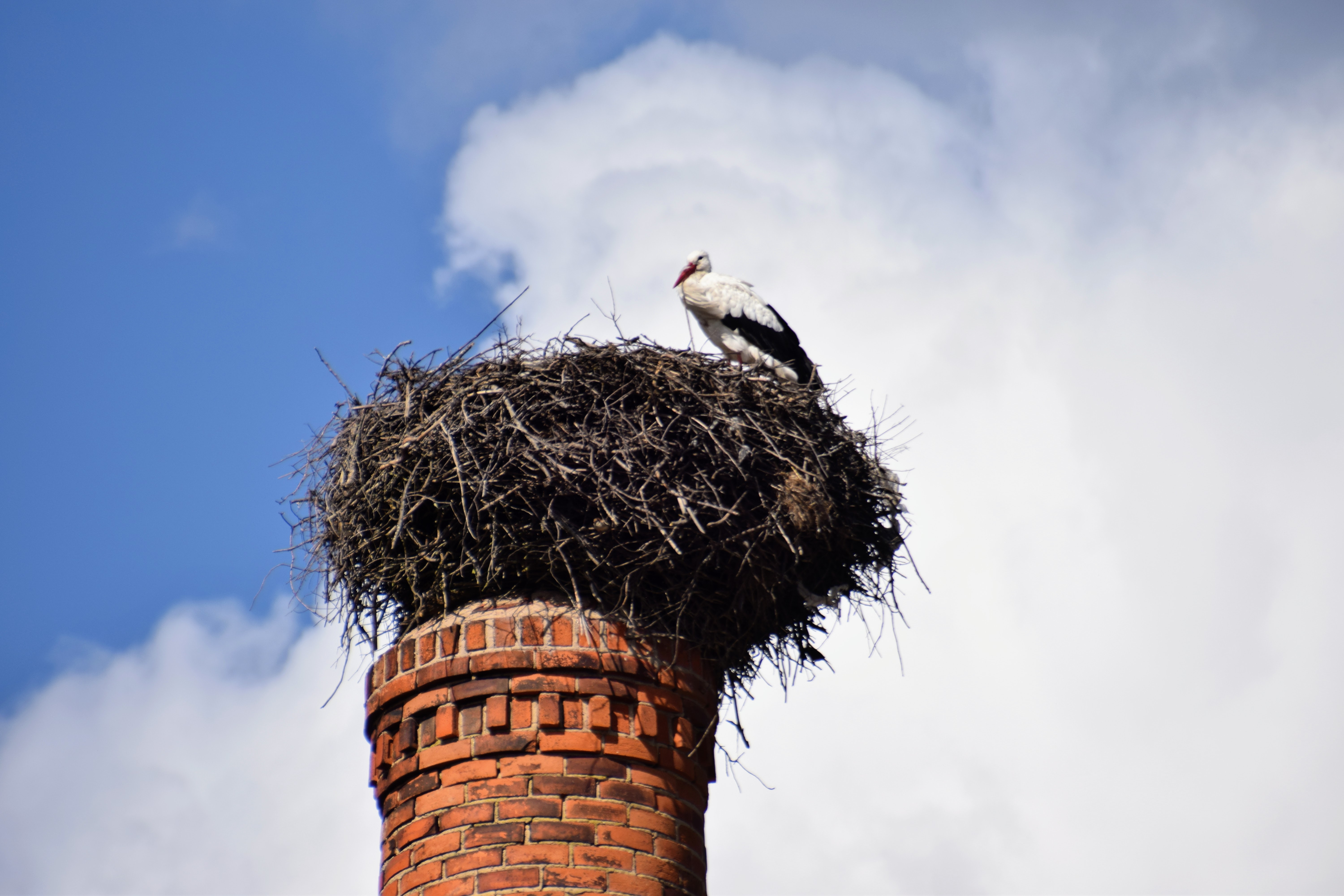
I wonder if the myth about storks bringing babies came from a place where every house’s chimney had a stork nest. It would be easy to point to as the place the baby was found. But I also wonder, what happens when there’s a fire in the fireplace?
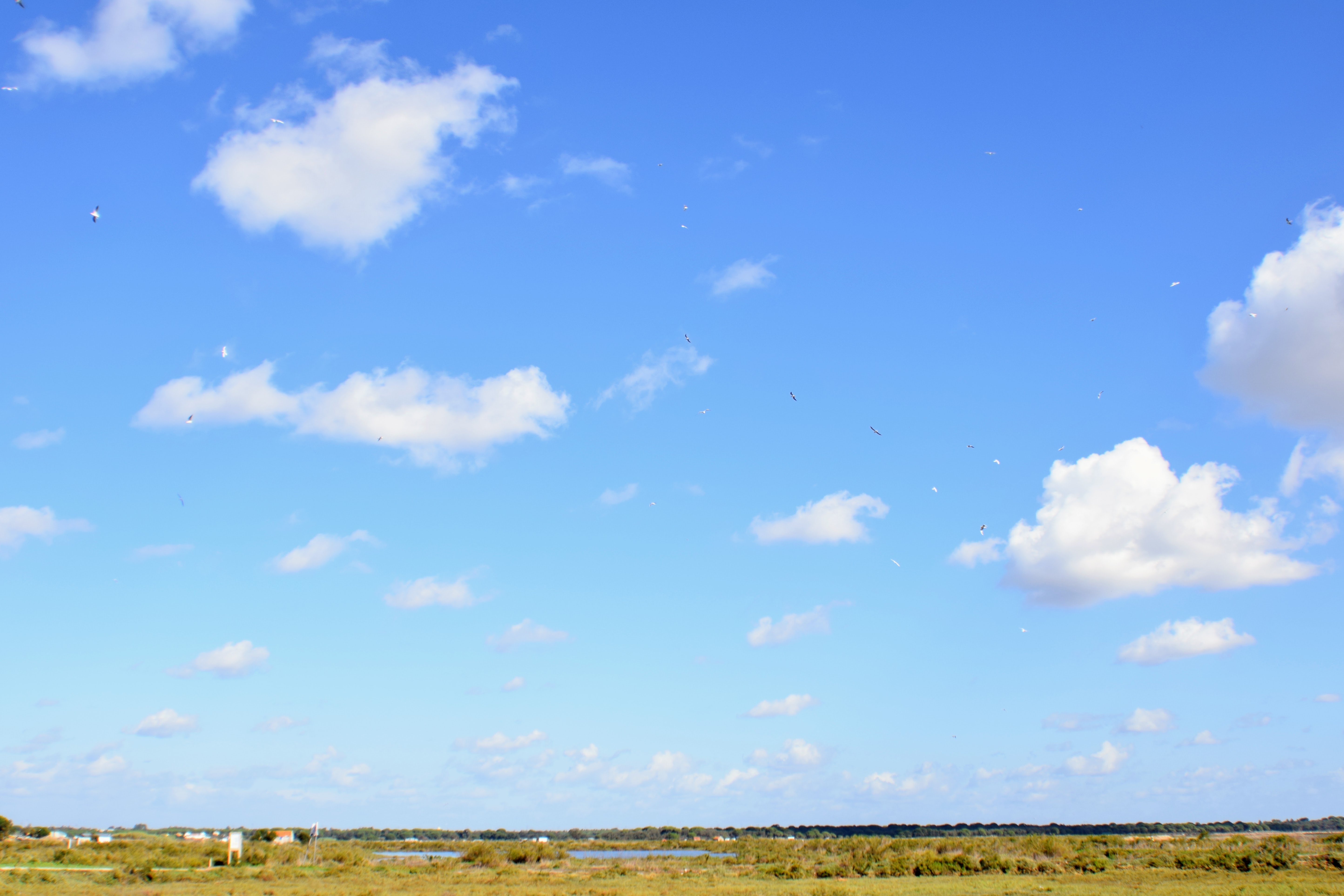
It’s hard to see, but every speck in this picture is a gull. There were large mixed flocks of Lesser Black-Backed Gulls, Yellow-Legged Gulls, Black-Headed Gulls, and Mediterranean Gulls flying around the estuary. In addition to Merlin, my gull identification infographic came in handy!
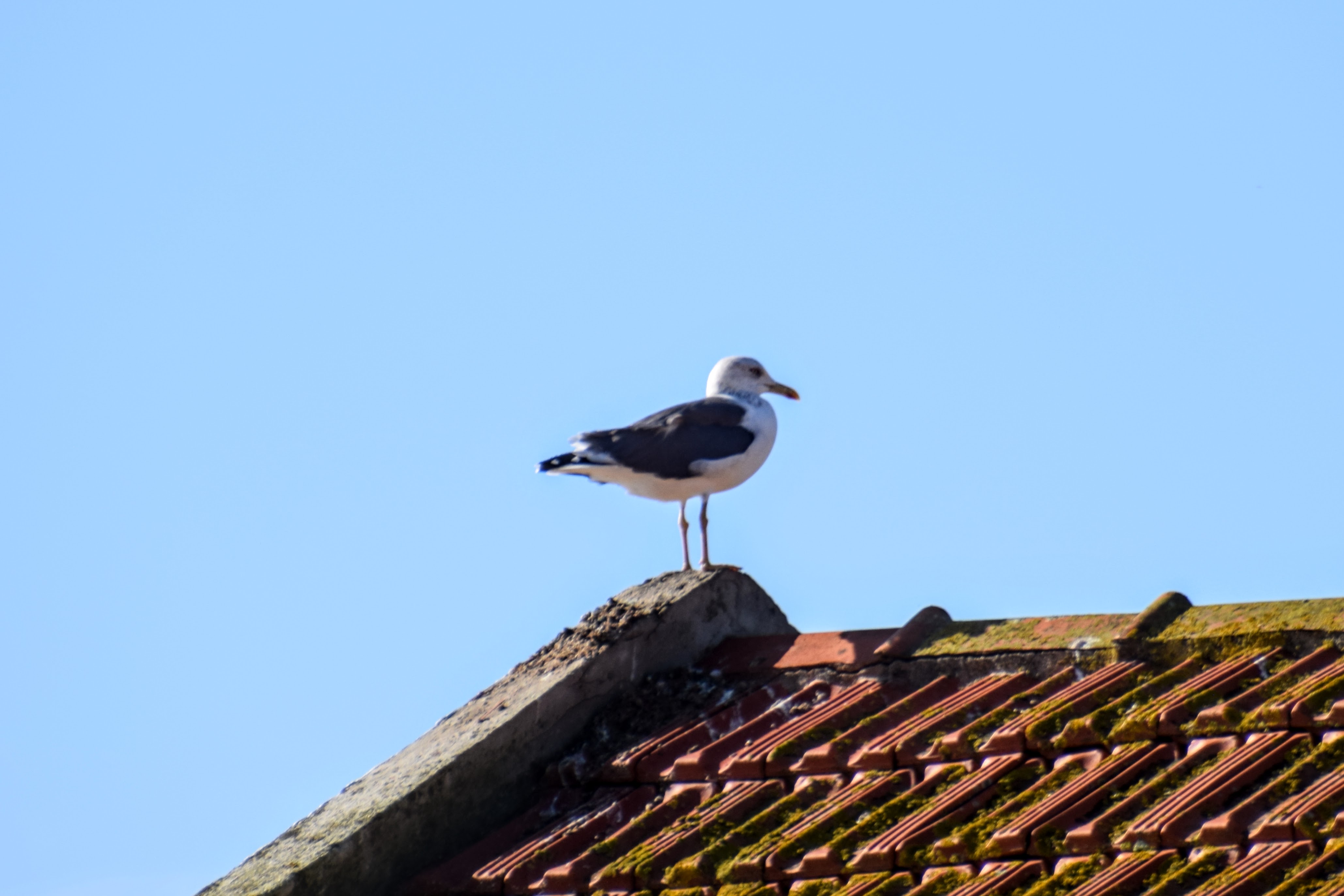
A Lesser Black-backed Gull.
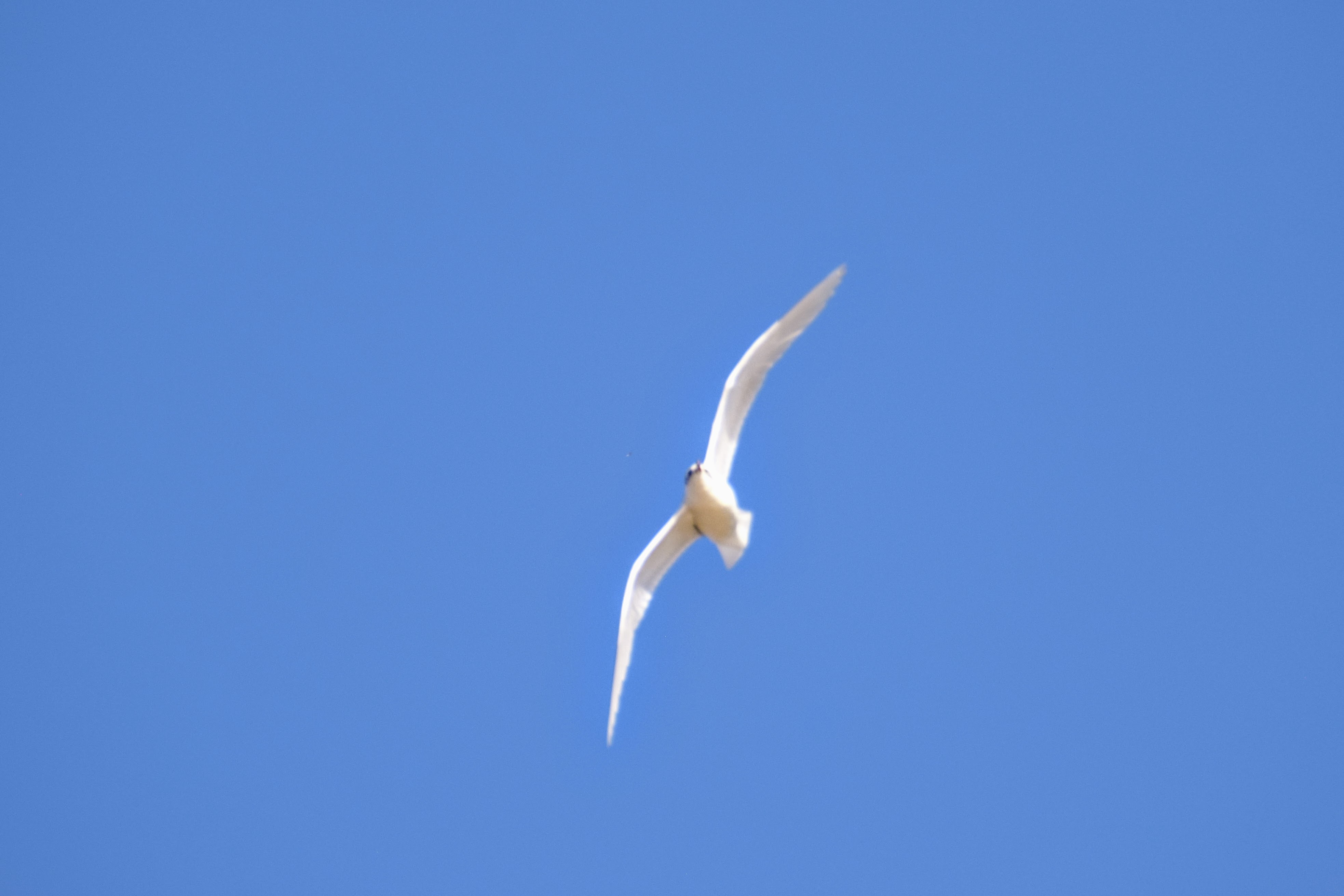
A Mediterranean Gull. This gull is the only one with pure white wing undersides, so it’s easy to tell apart in flight.
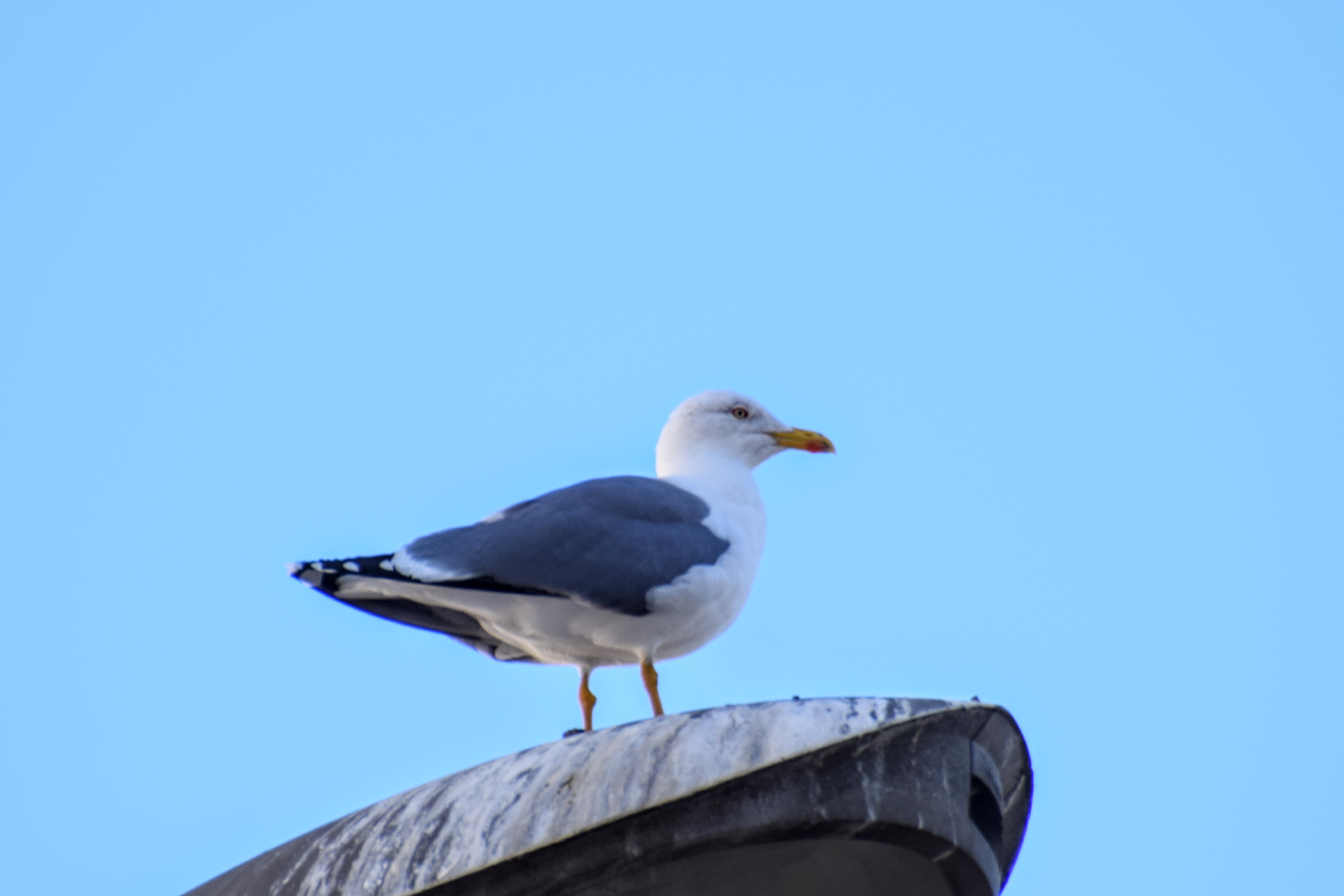
This is most likely a Yellow-Legged Gull. You’d think that since many, many species of gull have yellow legs, they’d have come up with a better name for this one, but no. These are so similar in appearance to Lesser Black-backed Gulls that often it’s impossible to tell them apart, even to experts.
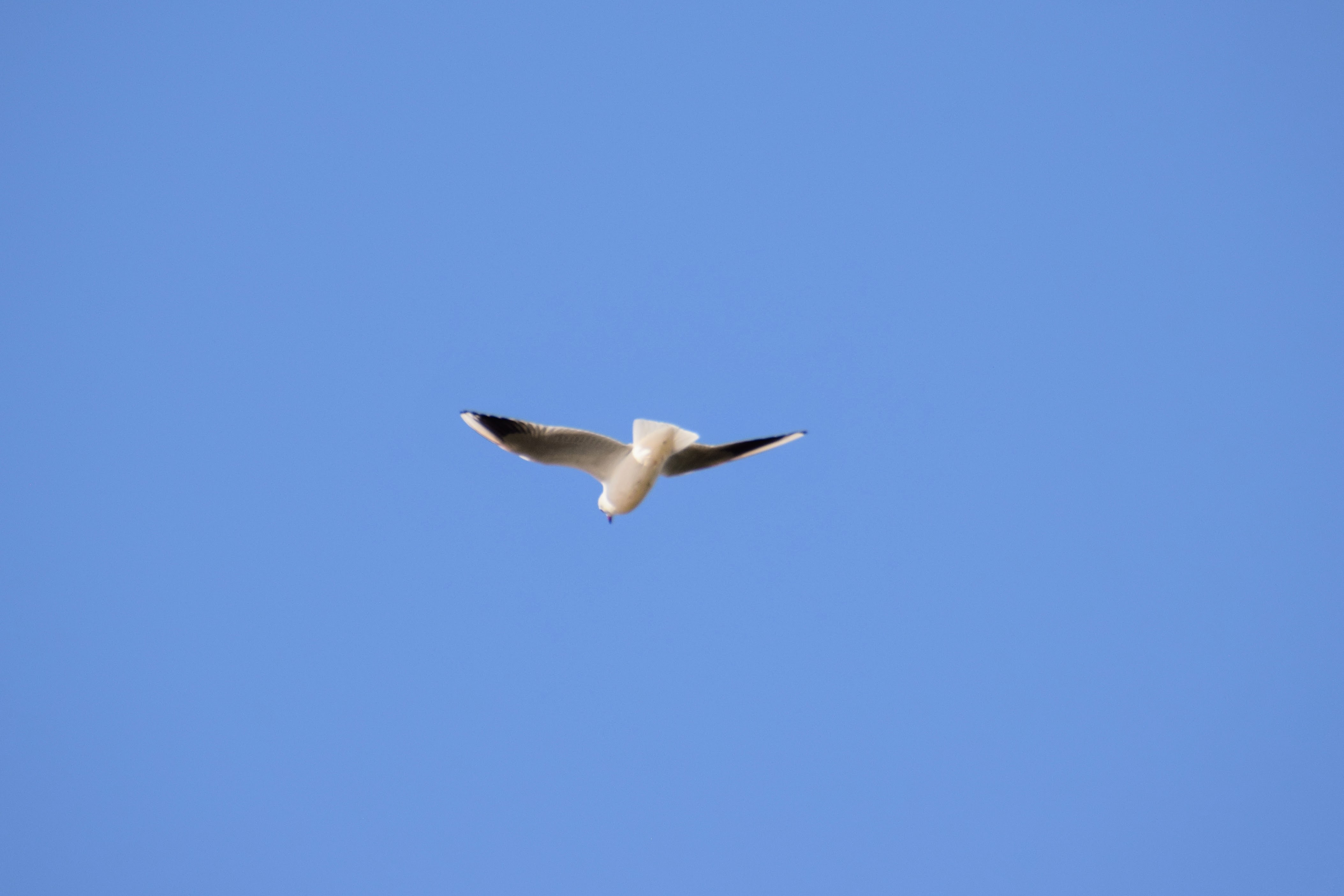
This is a Black-Headed Gull in non-breeding plumage. During the summer, they get a black head, hence the name, but in winter the black feather tips wear off, leaving only a black ear spot. This is generally the way that gulls with black heads operate.
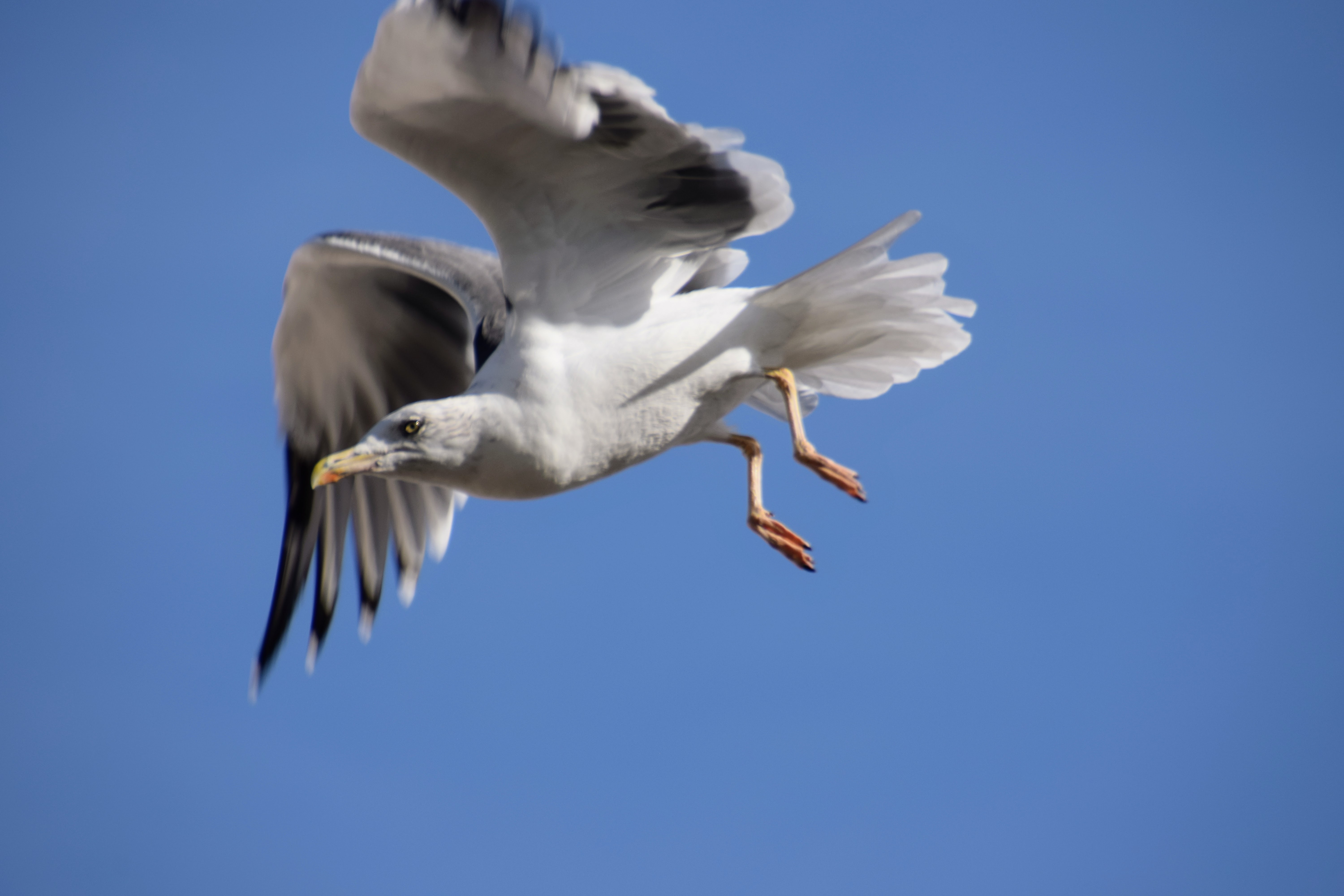
Here’s how you take off if you’re already up on a high place.
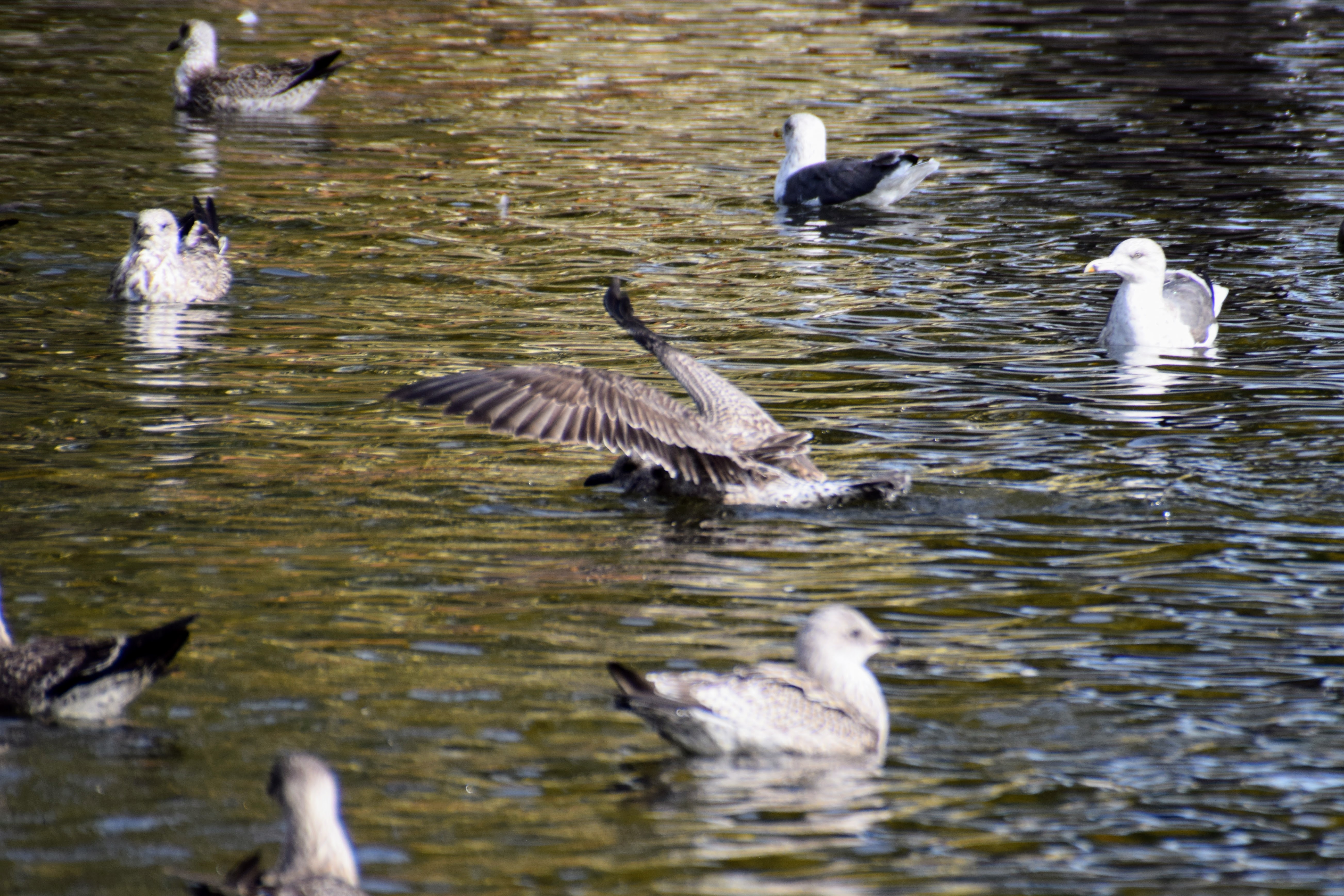
And here’s how you take off from the water. Looks undignified!
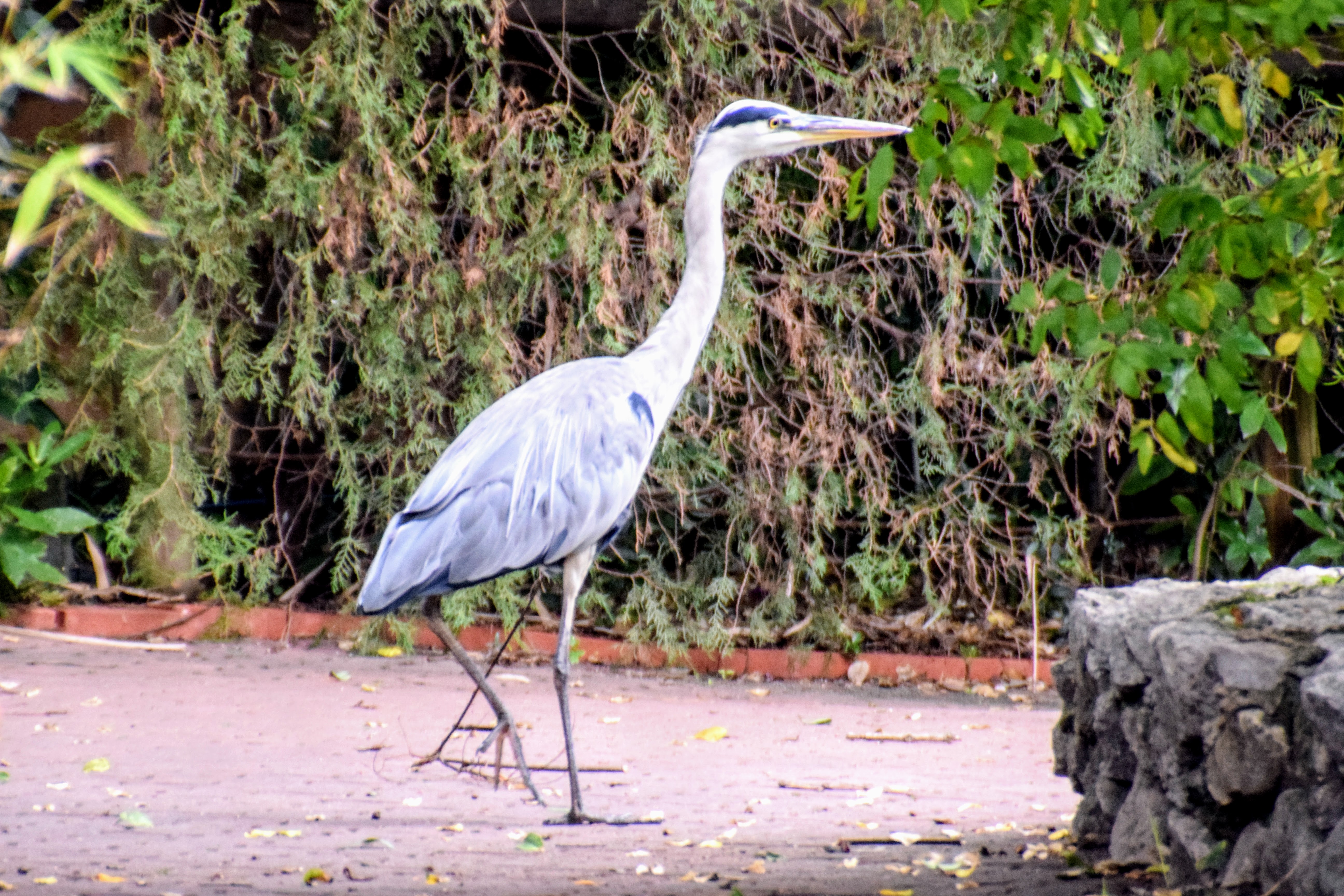
This is a Grey Heron, a close relative of the Great Blue Heron we have at home. I didn’t see any of these at Sado Estuary, but spotted this one taking a stroll at the zoo. Lots of the animal enclosures were surrounded by moats, and it looked like he was scoping those out for potential prey. Or maybe he was just enjoying the zoo.
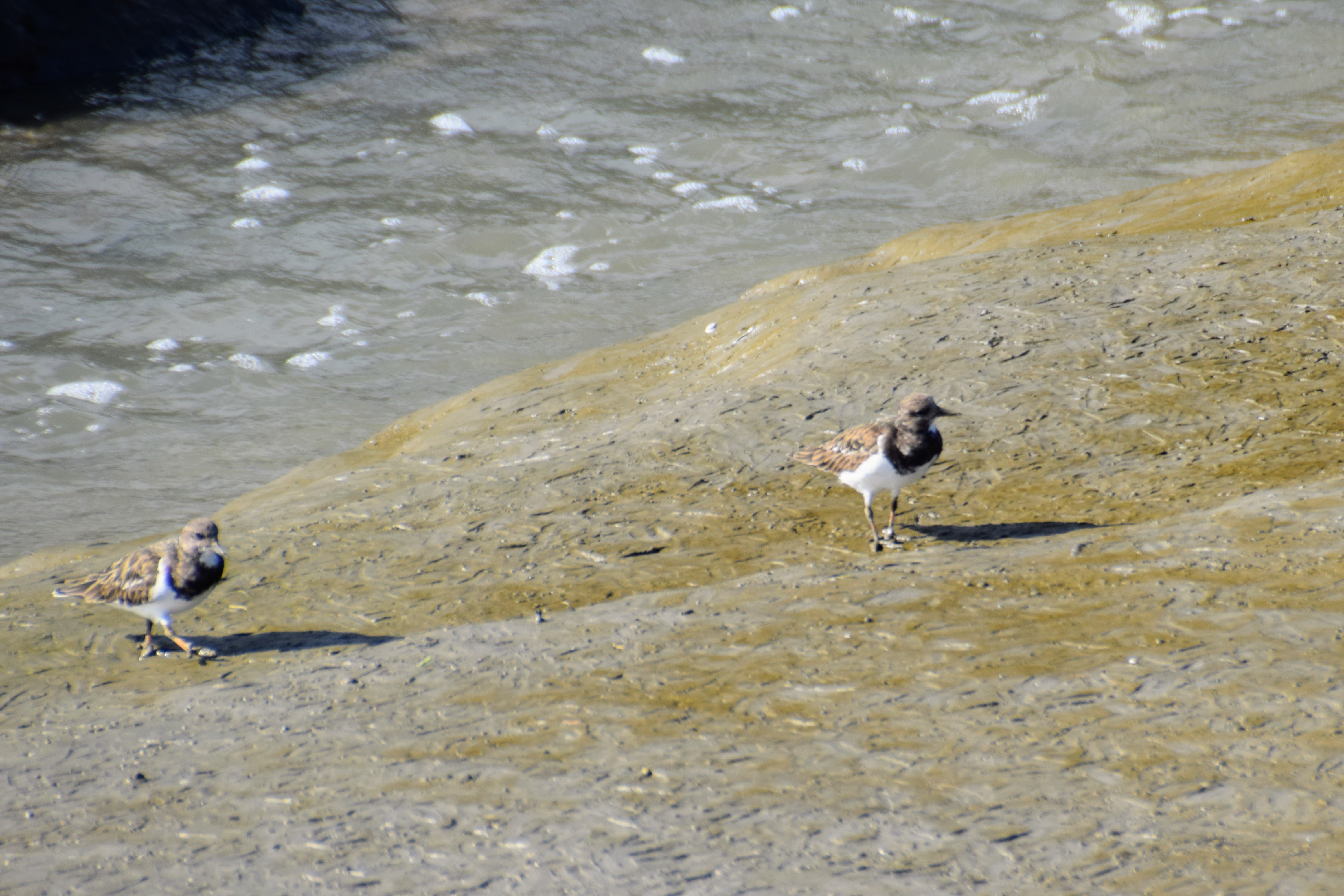
These are Ruddy Turnstones, a bird that frequents coastlines all over the globe. I’ve seen them before in Florida.
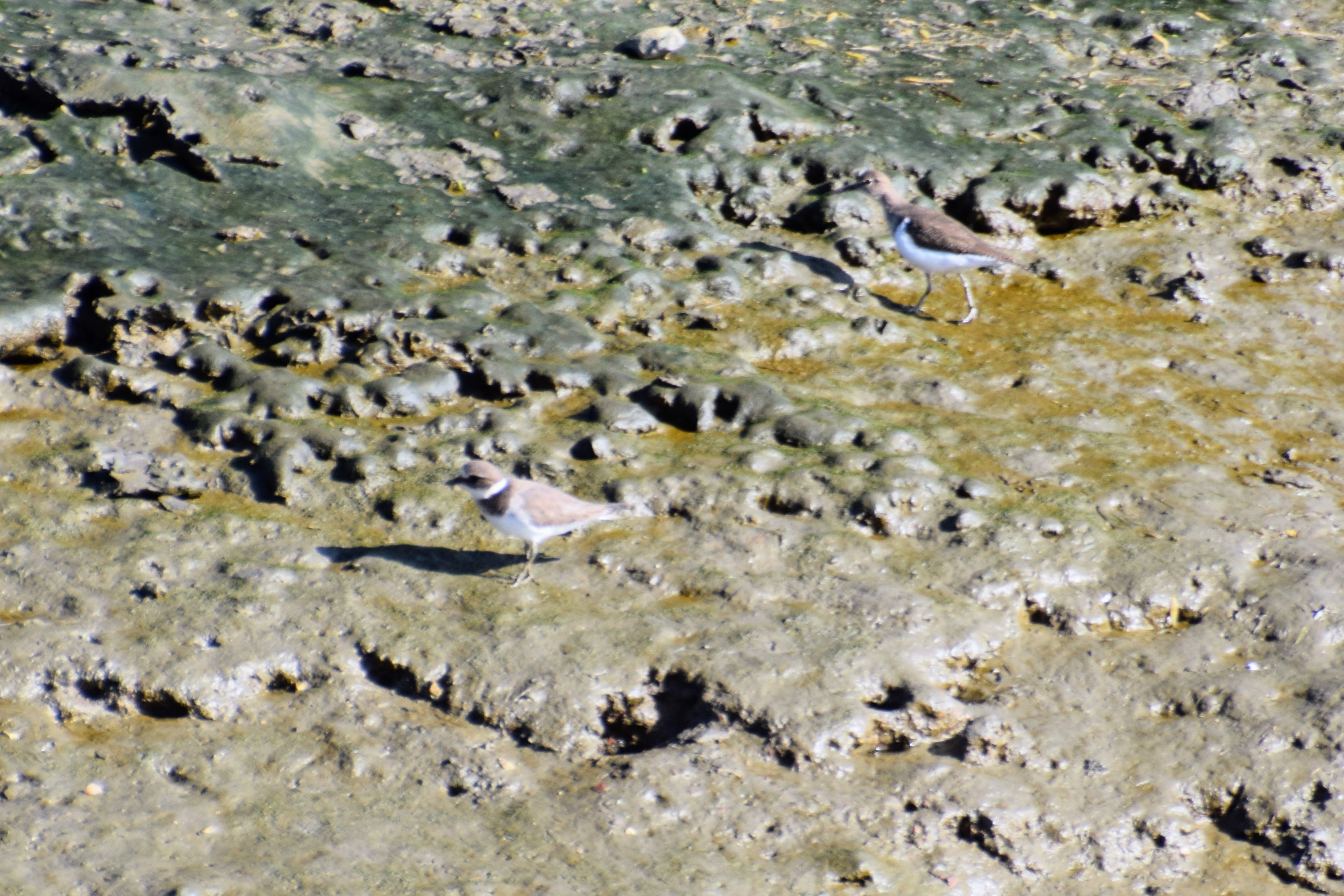
While these look very similar to the Ruddy Turnstone above, it’s actually a Common Ringed Plover (lower) and a Common Sandpiper (upper). I didn’t notice they were different species until I looked at the photo later!

Here’s the Eurasian Spoonbill again, this time with some Common Redshank friends.
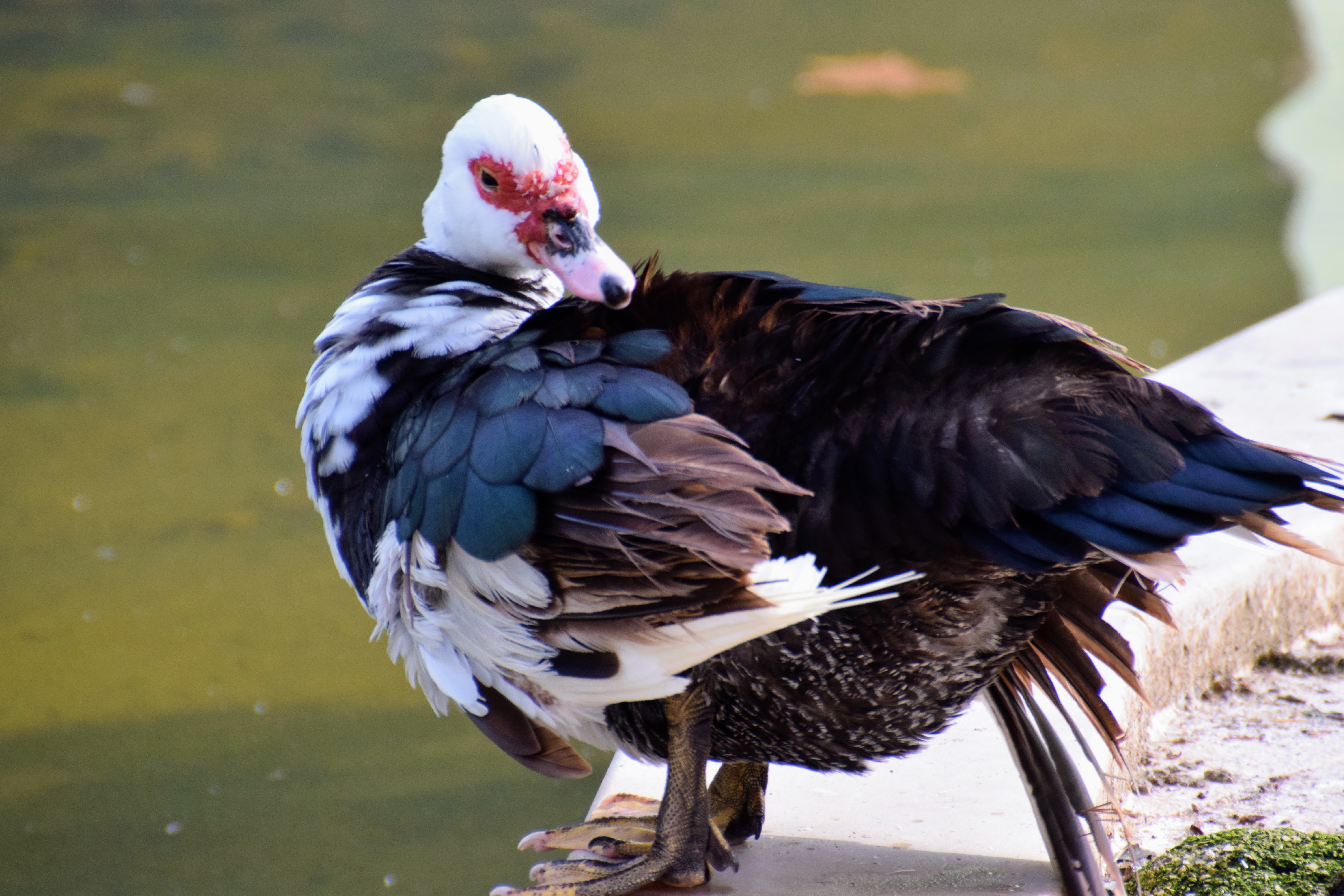
This is a Muscovy Duck, the only other type of domestic duck other than the Mallard. They’re way bigger and cooler than Mallards and come in a variety of colors and patterns.

This Mallard Duck either was experiencing partial albinism, or was a hybrid with a Northern Pintail duck.
Land Birds
After leaving Sado Estuary, I crossed the city of Setúbal and hiked in the Arrabita Nature Park, toward the Forte de São Felipe (Saint Philip’s Fort). It was a lovely day for it!

Don’t bother looking for birds in this photo, because there aren’t any. This weird-looking tree is a cork oak, a special type of tree that isn’t killed when you harvest its bark. Over fifty percent of the world’s cork comes from Portugal, in which these trees grow abundantly. You can see that this tree has had its bark harvested twice, and grown in between harvests, leading to the weird stepped appearance. You can harvest bark approximately once a decade per tree. This particular tree wasn’t part of an orchard or anything, but rather seemed to be wild. Probably since cork is so valuable, regular people just make the effort to harvest all the cork trees that happen to exist on their property.
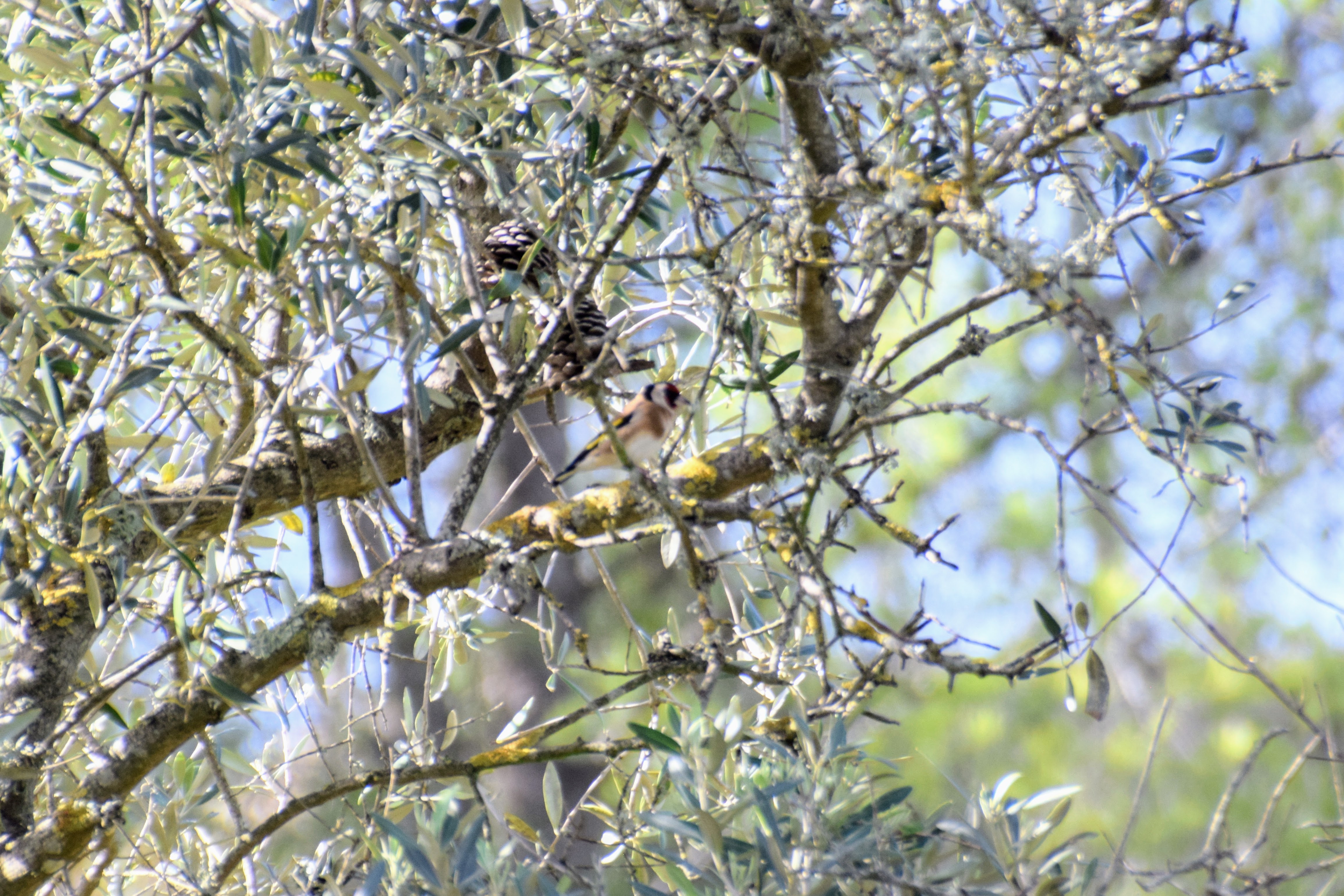
European Goldfinches aren’t very gold, and don’t look much at all like American ones. These guys were very hard to get pictures of, as the area had fairly dense foliage and they never spent too long in the open.
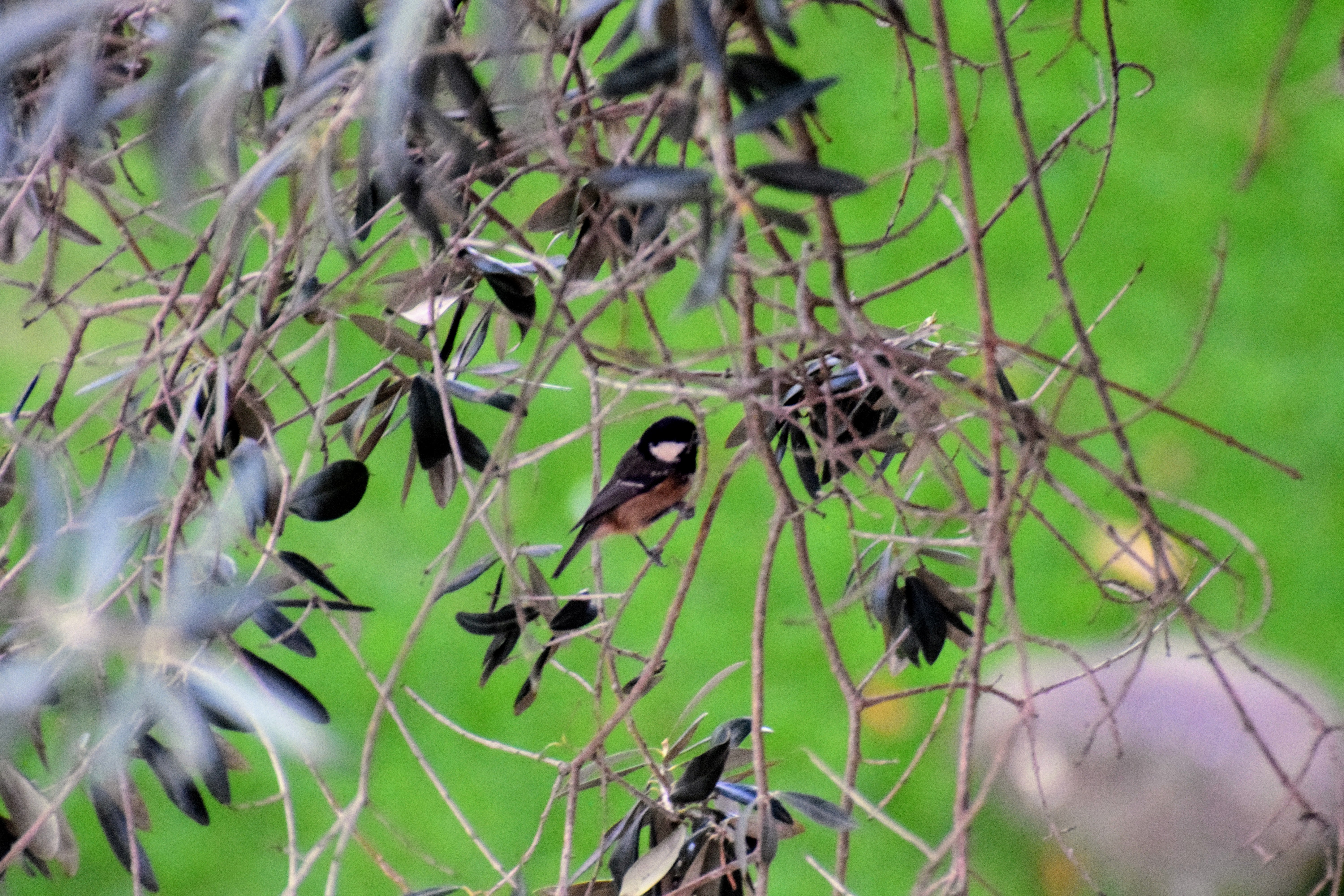
This is a Coal Tit, a bird that acts a lot like Bushtits in the States. They’re super small and occur in flocks of about a dozen, and every time they hop to a new branch they make a “pip” noise. Since they never sit still, they were also quite hard to photograph. This one I spotted in the Castelo de São Jorge (pronounced “cash-TELL-oo duh sow ZHOR-zhuh”, meaning Saint George’s Castle) in Lisboa.
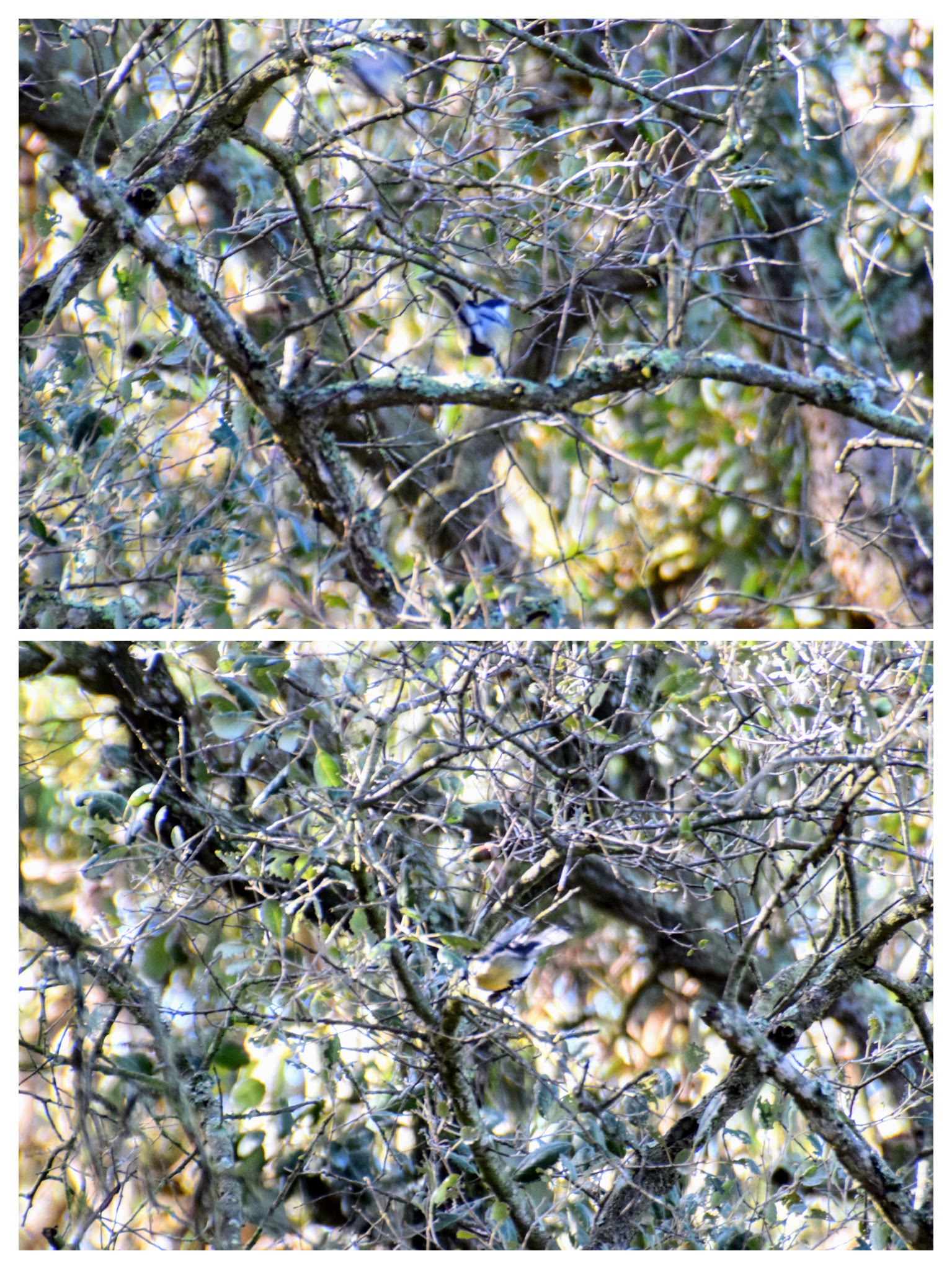
It’s hard to tell, but this is the rear end of a Great Tit (sounds obscene). This was the only one I saw, hence the bad photos.
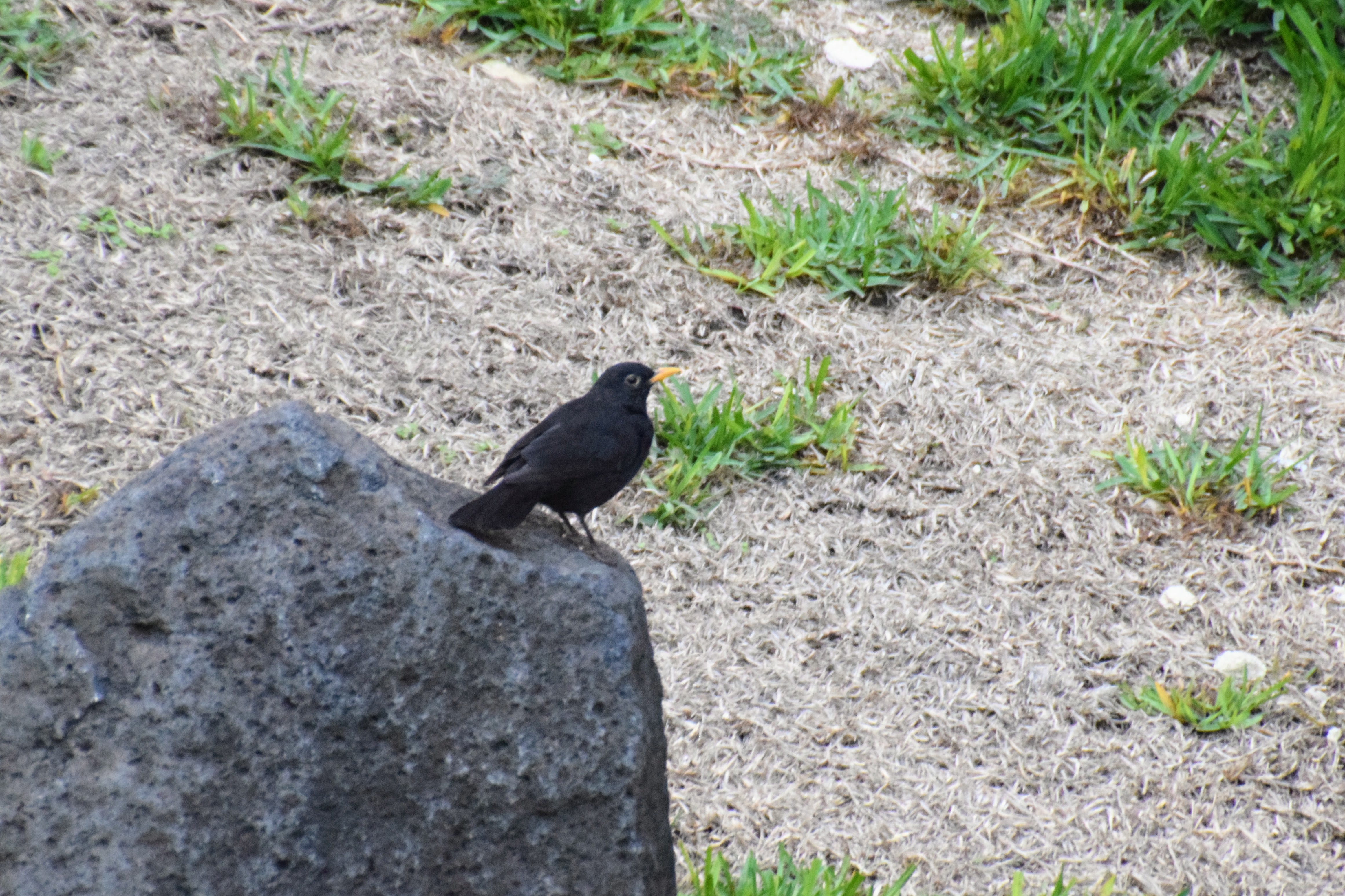
This is a Eurasian Blackbird. While these were fairly common in parks, they were really hard to get a good photo of for some reason.
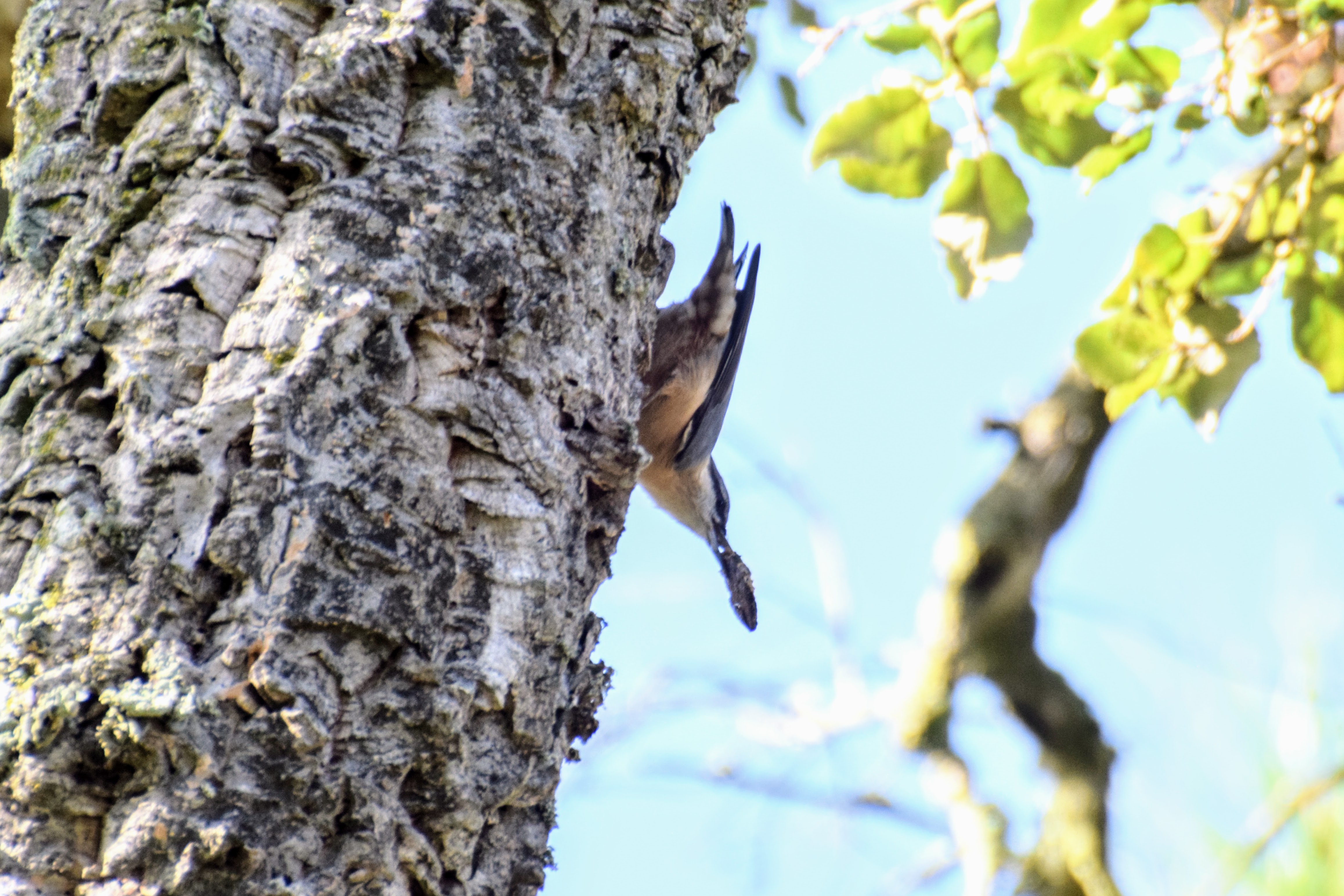
This is a Eurasian Nuthatch, which looks and acts exactly the same as the American White-breasted and Red-breasted Nuthatches. Next to treecreepers (another kind of tree-scaling bird), the closest relatives of nuthatches are the wrens and gnatcatchers.
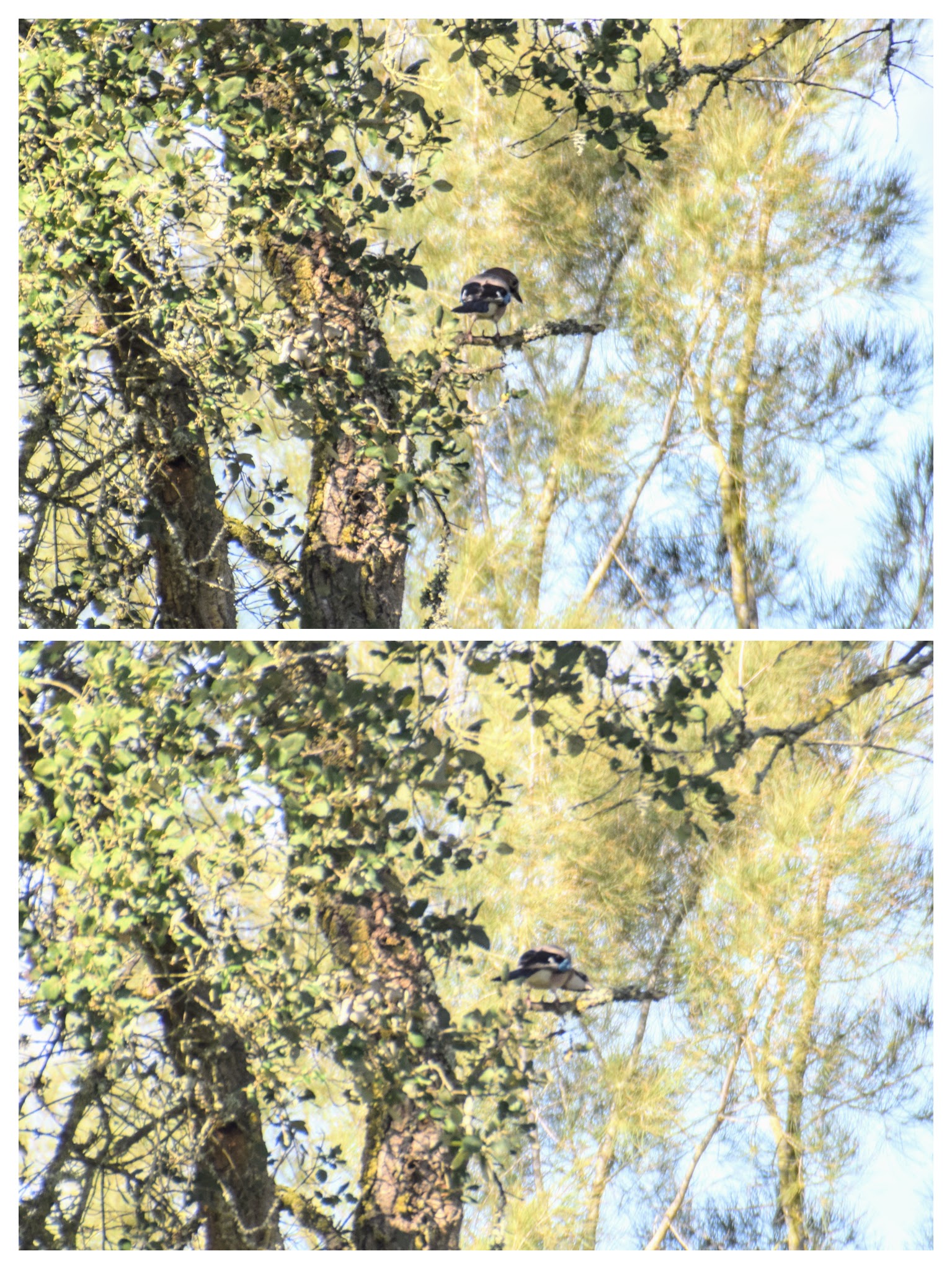
This is a Eurasian Jay, an interesting-looking relative of crows. You can’t really tell from these crappy photos, but it’s mostly gray, with black and white striping on the face and a small patch of blue vermiculated (marked with thin stripes) feathers on each wing. It was the only jay I saw.
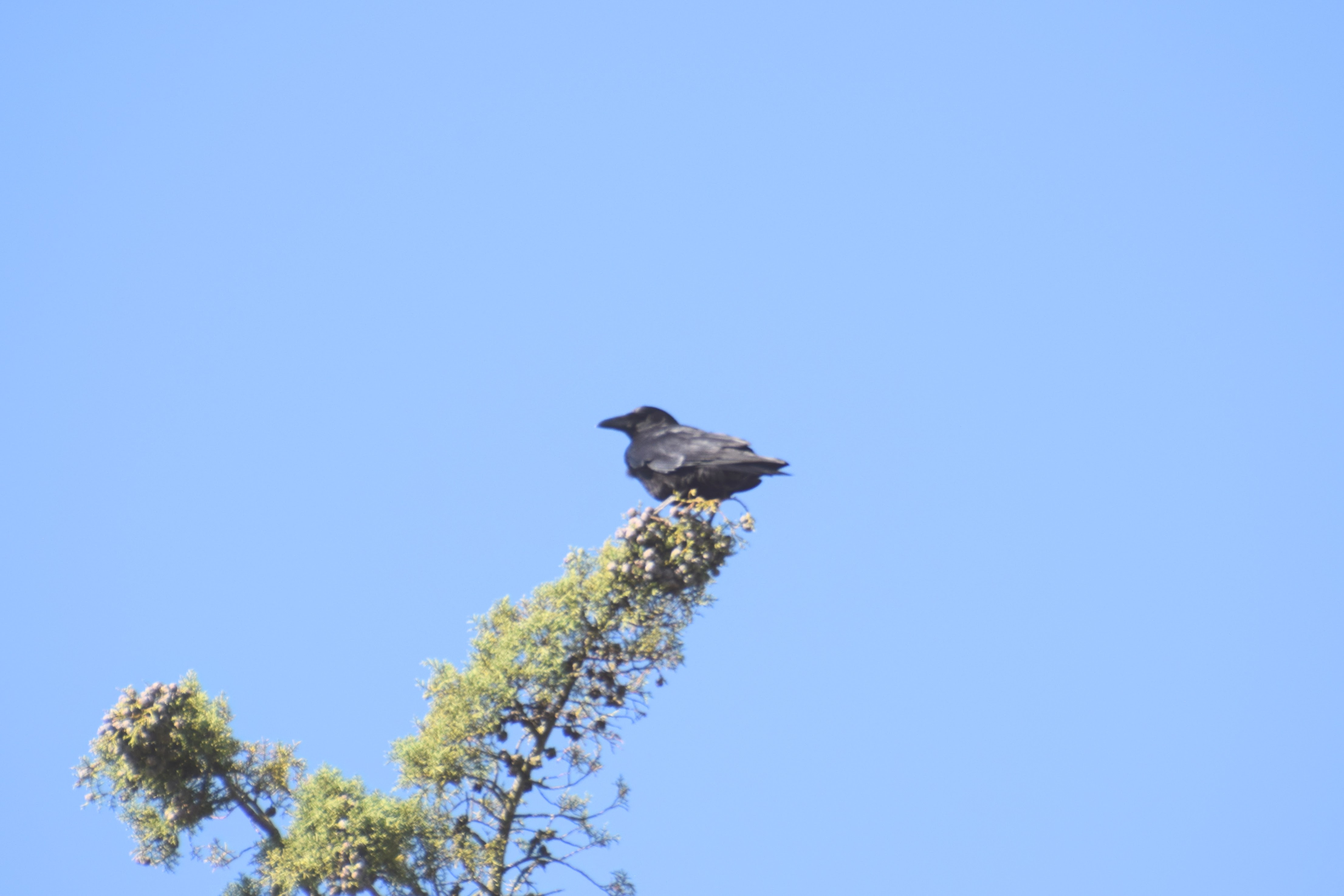
This is a Carrion Crow. Unlike American Crows, these were fairly rare, not found in cities, and skittish.
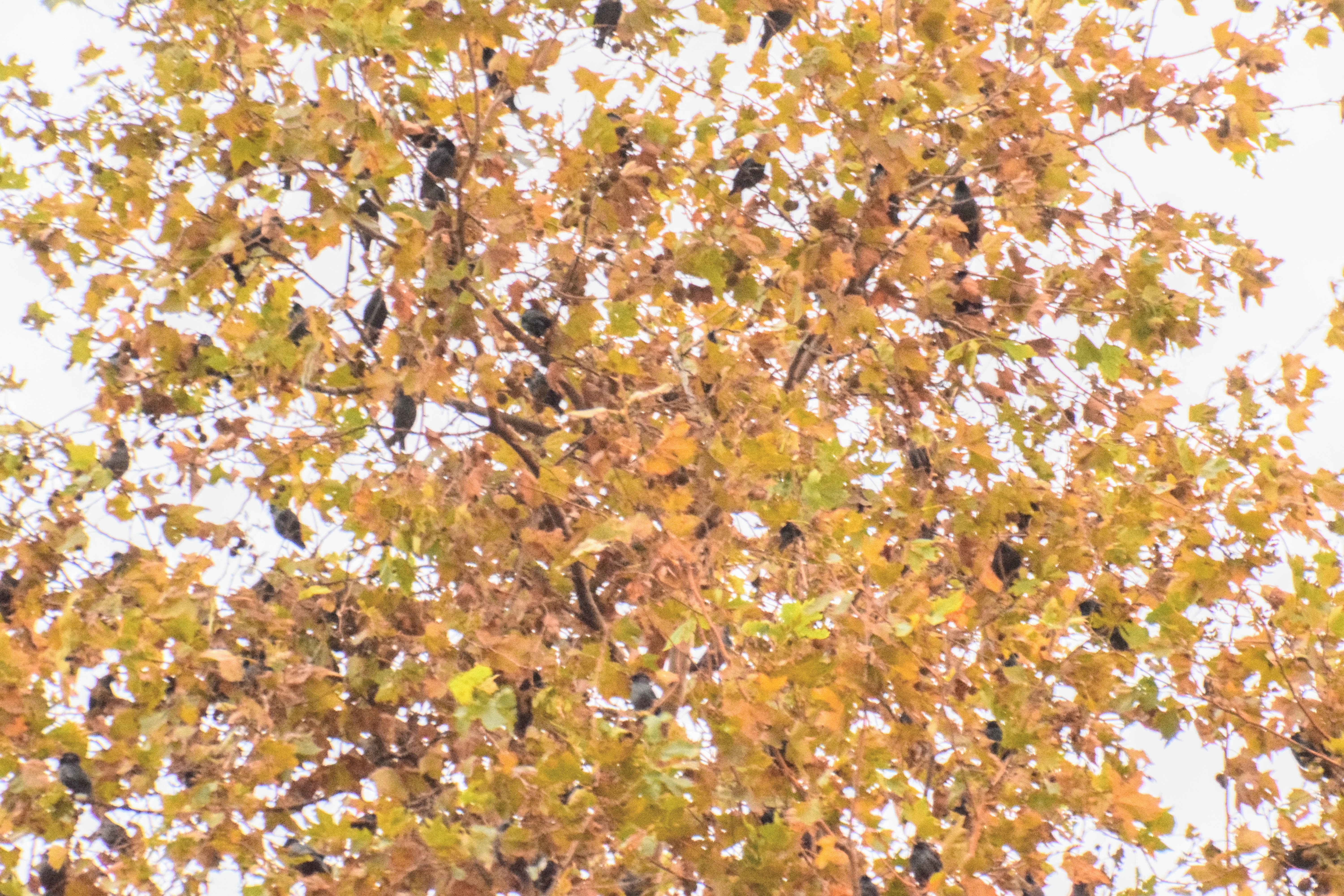
It’s hard to see any birds in this photo, but it’s part of a flock of Spotless Starlings that roosted every night in the big tree right outside my hotel. They only started coming to the tree as it was getting dark, making it really hard to get a good photo. I don’t know where they went during the day, and never got out there early enough to see them leave in the morning. This photo was taken at night, but I brightened it in post enough so you can see the silhouettes of the birds.
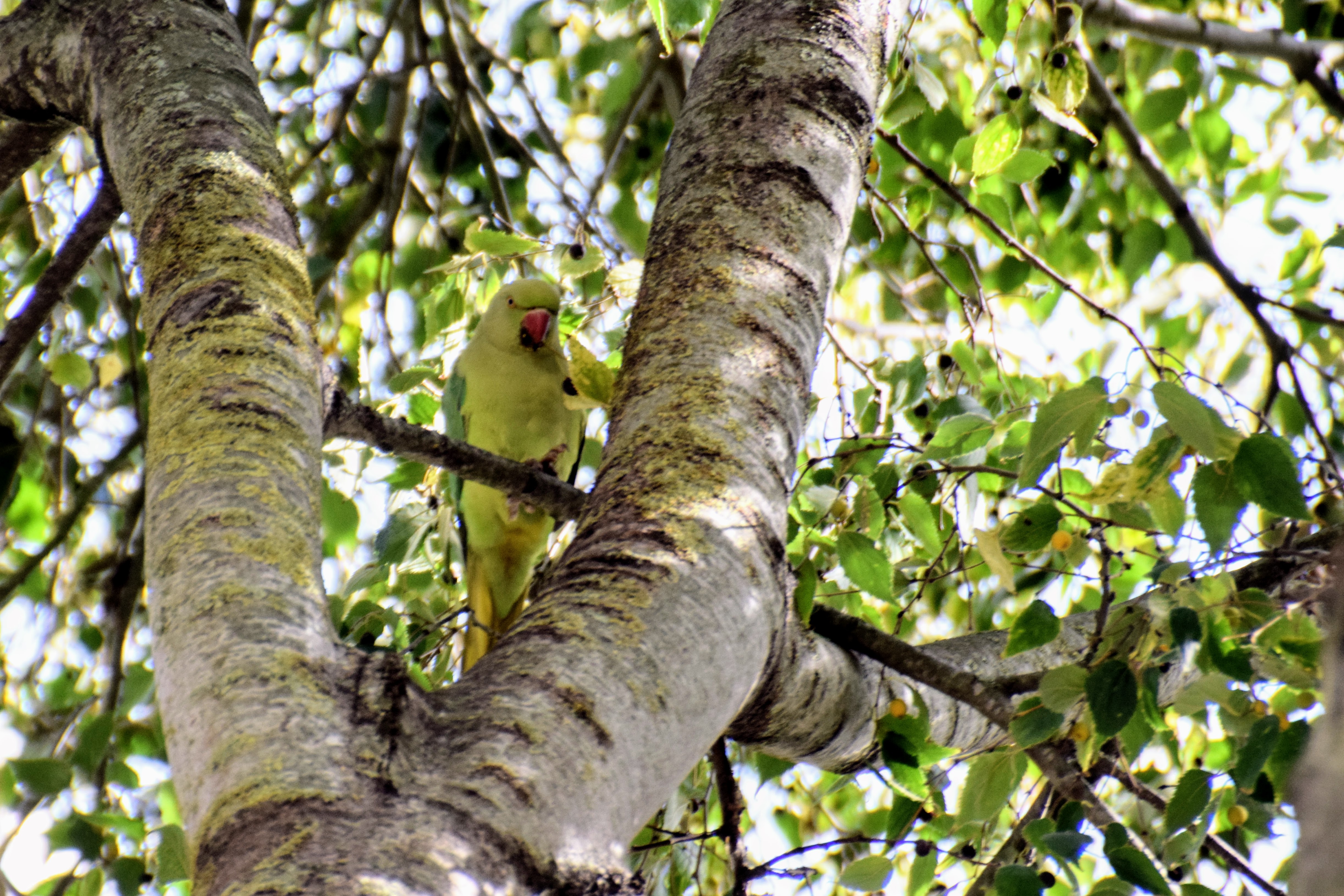
This is a Rose-Ringed Parakeet, also known as an Indian Ringneck in the pet trade. This was the only one I saw, and I was lucky to notice it–it flew into a tree across the street from me as I was walking to the train station, so the movement caught my eye. After crossing the street, it was really difficult to find where in the tree the bird had gone even though I knew what I was looking for. It’s leaf-colored and somewhat leaf-shaped! This bird was futzing with a twig for an unknown reason for quite awhile, giving me time to get a few photos.
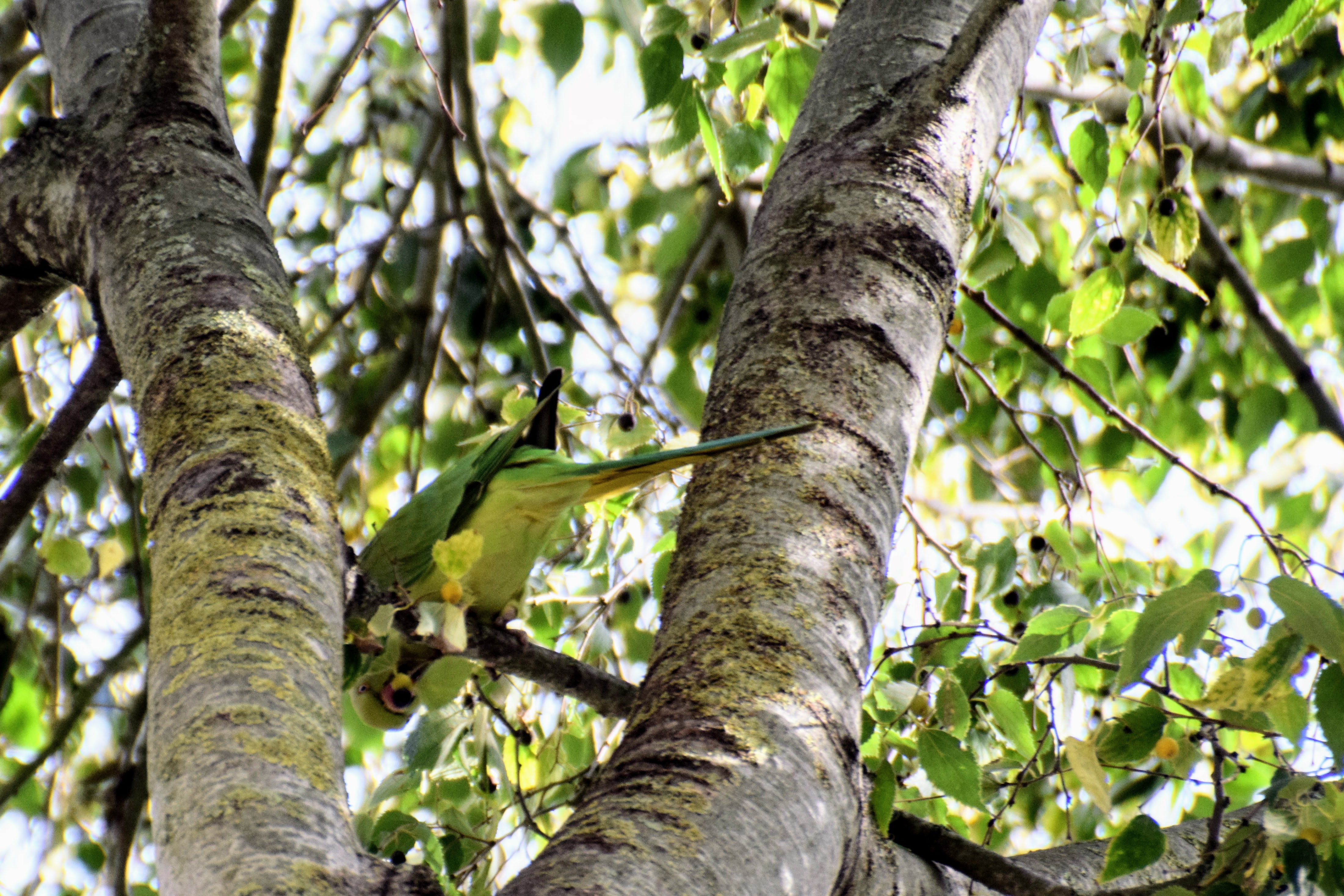
These birds are quite a popular pet, but I think they look too similar to Oscar the Grouch.
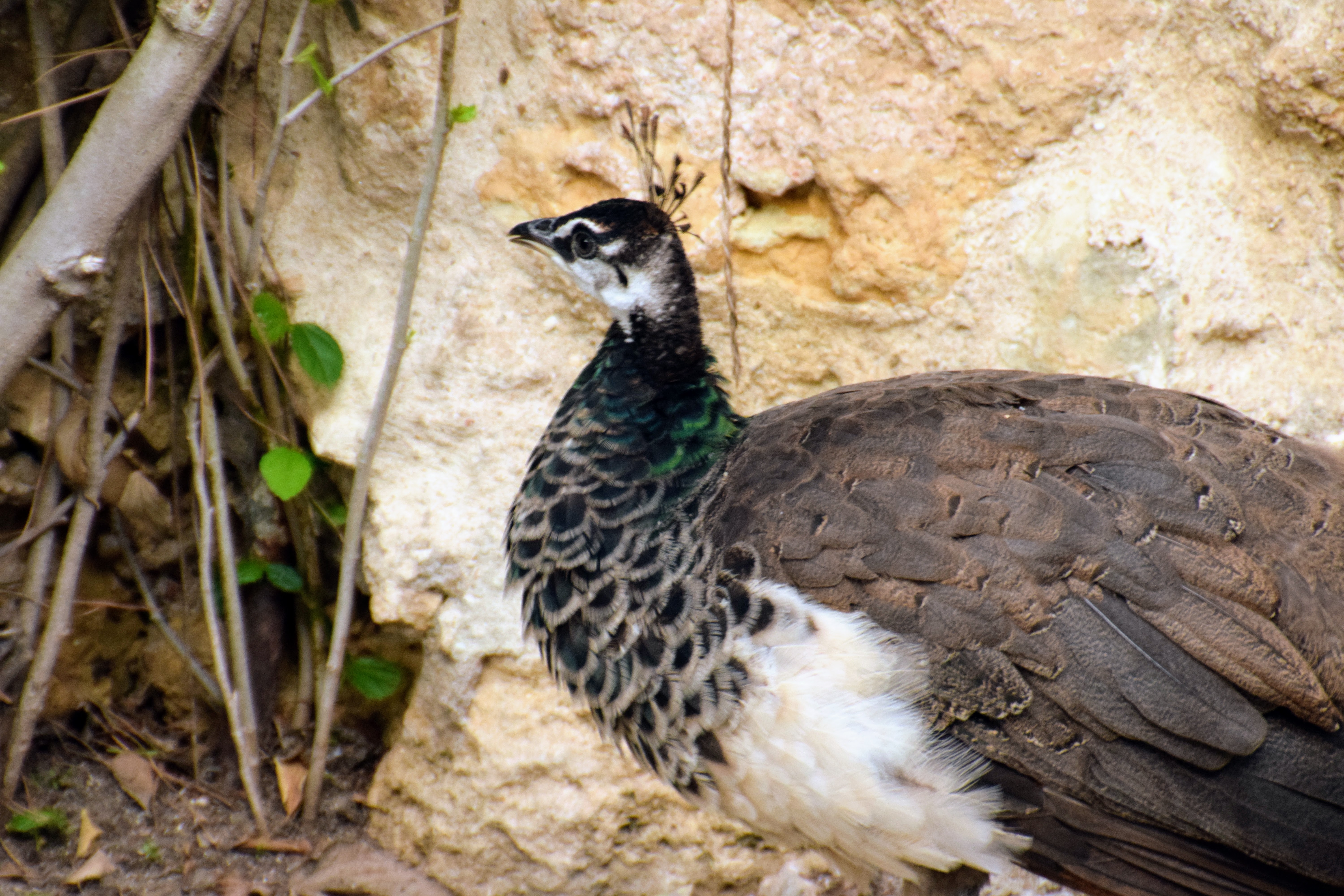
Peacocks and peahens were common in both the Castelo de São Jorge and roaming freely in the zoo. All of them were flighted and roosted in a tree at night, but apparently preferred to hang around where they’d been released.
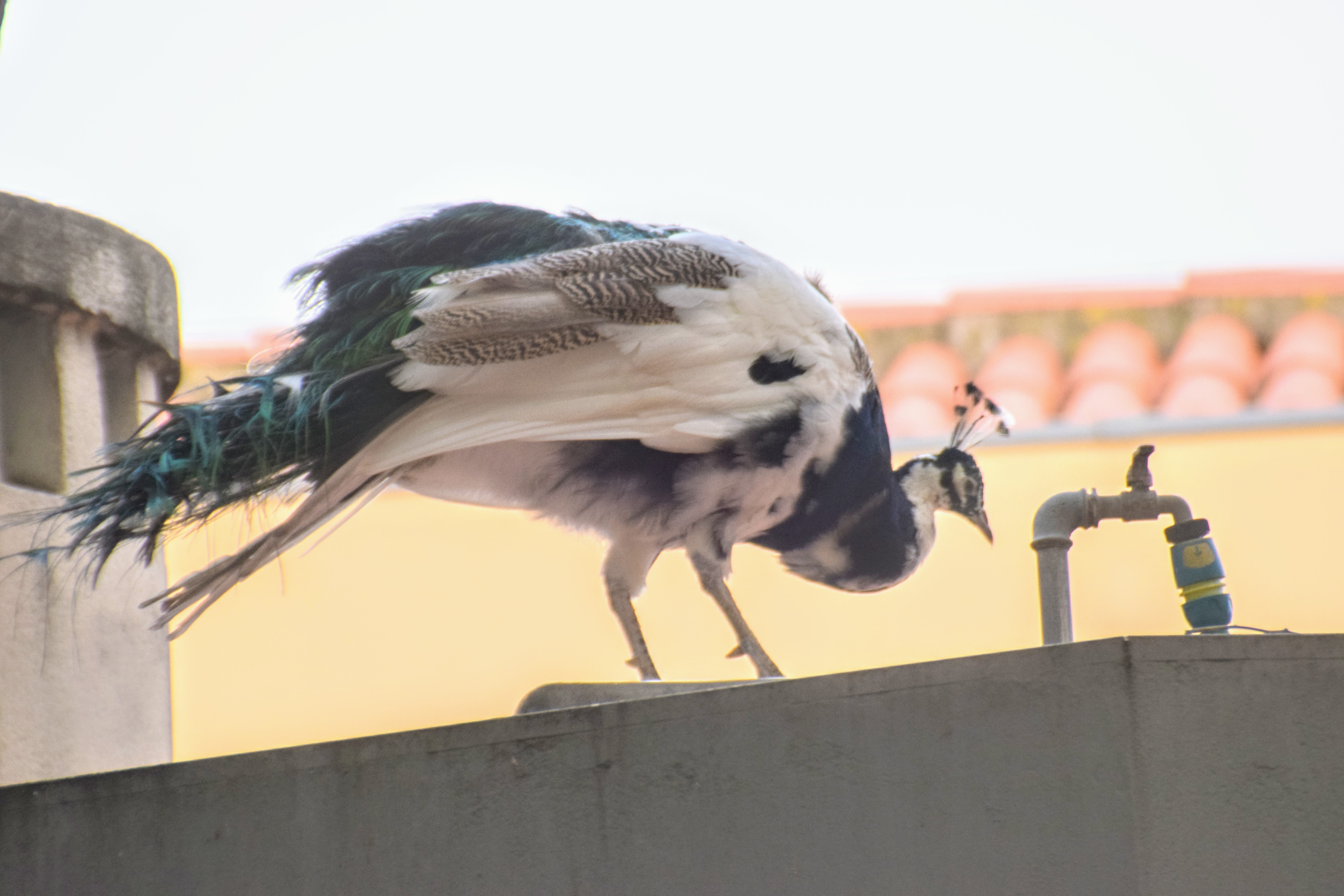
This peacock with partial albinism stood out from the crowd.
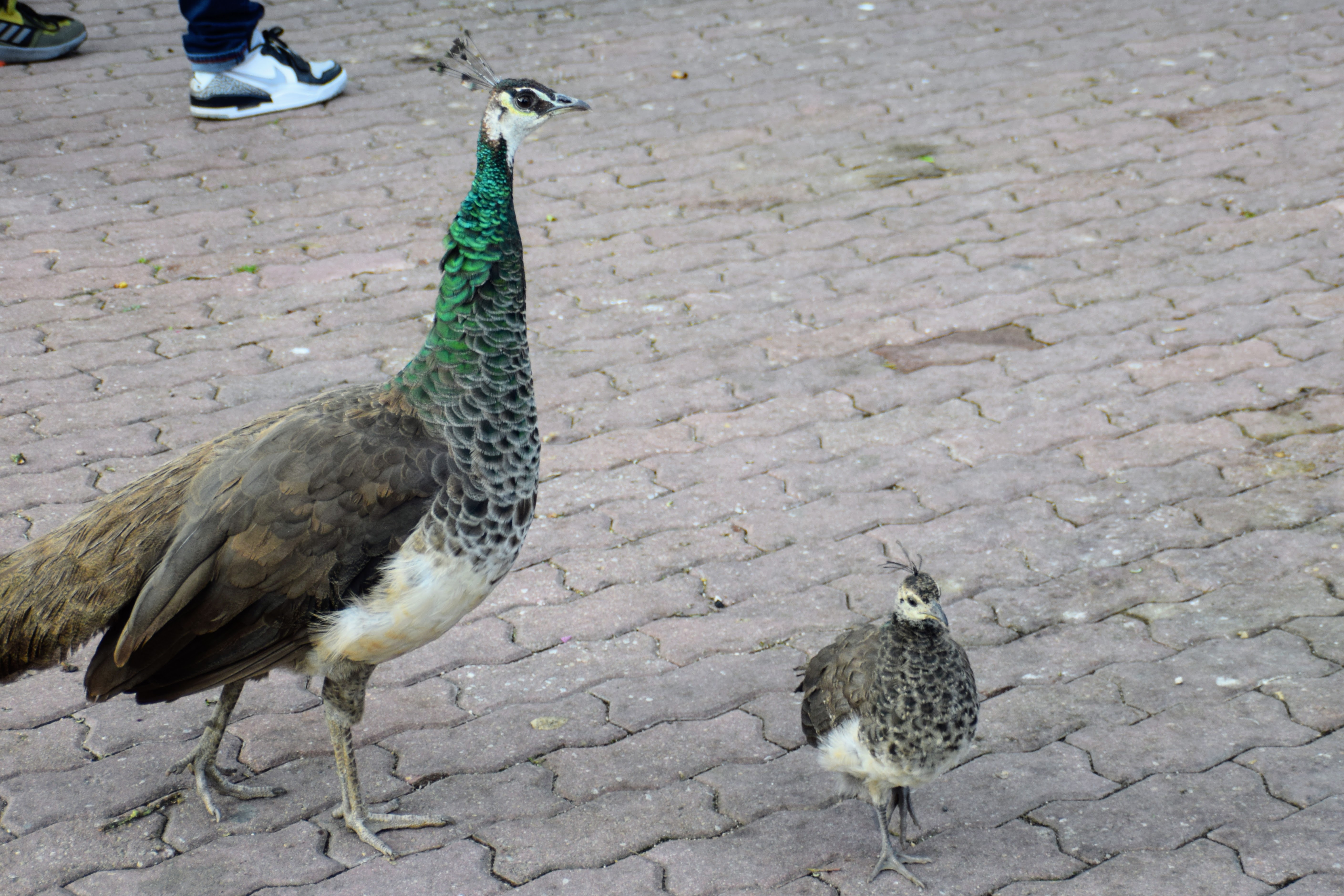
This peahen was escorting her single chick all around the zoo on foot, as if they were enjoying the exhibits too.

Like at home, House Sparrows were common both in the city and in the wild. However, they’re native to the Old World, so I don’t have to be bothered by their presence here.
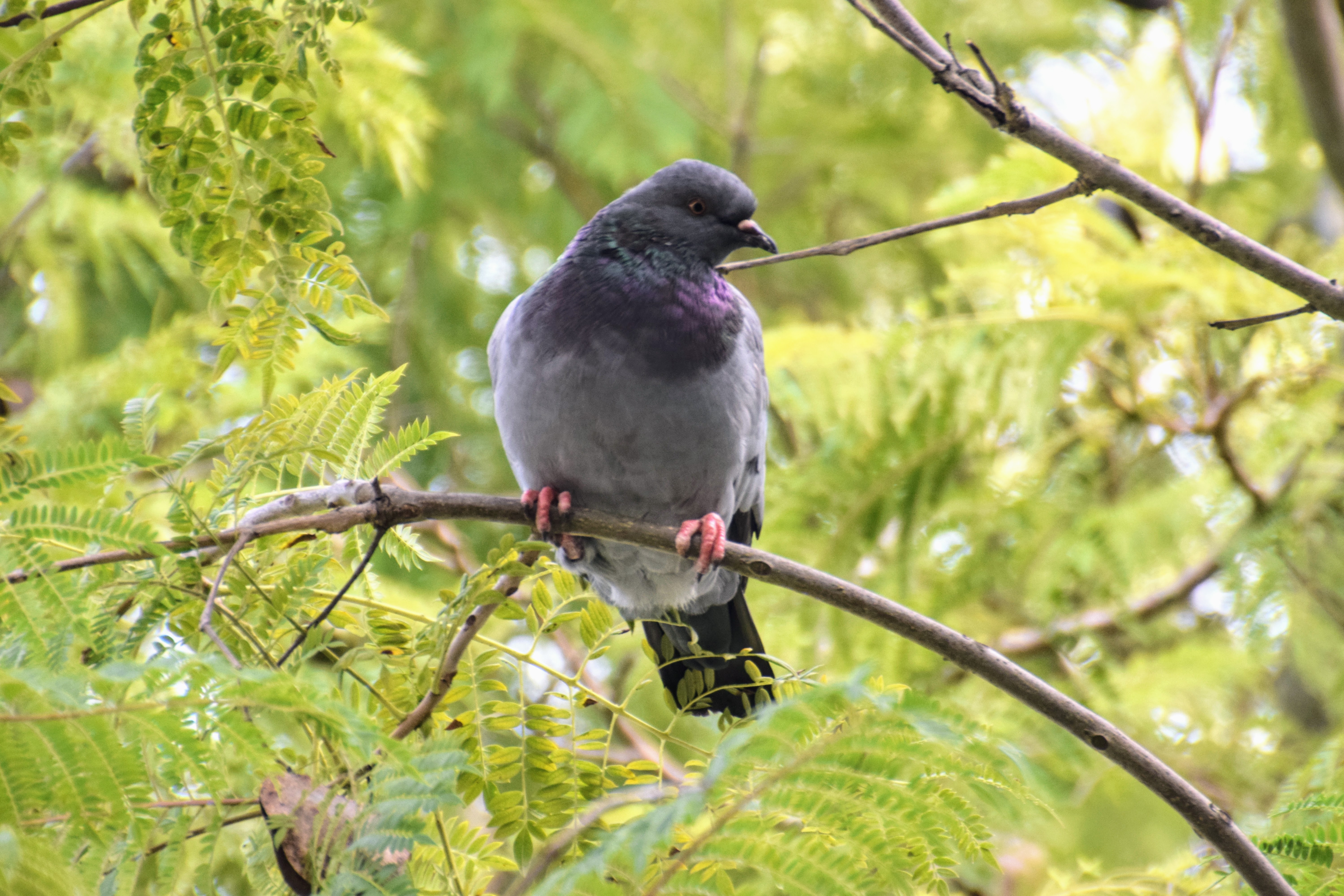
Also similar to home, Rock Pigeons were everywhere in the cities. This one was perched in a tree in the park, looking way more natural than your average pigeon.
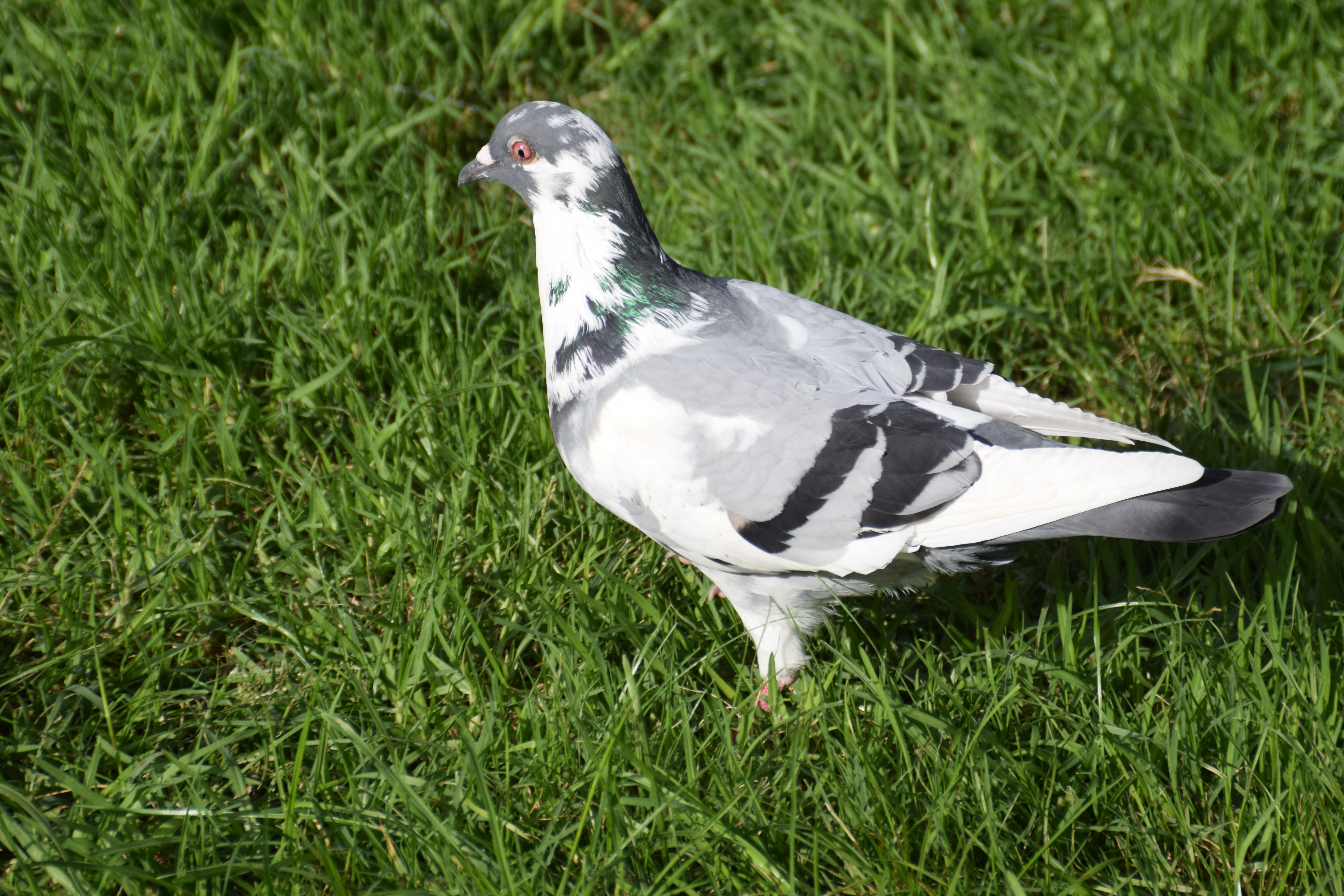
This pigeon also had partial albinism. I wonder if partial albinism is really common in birds, but the ones that aren’t synanthropes get picked off by predators. Or maybe there’s something in the bread we’re feeding the pigeons, peacocks, and ducks that turns them white.
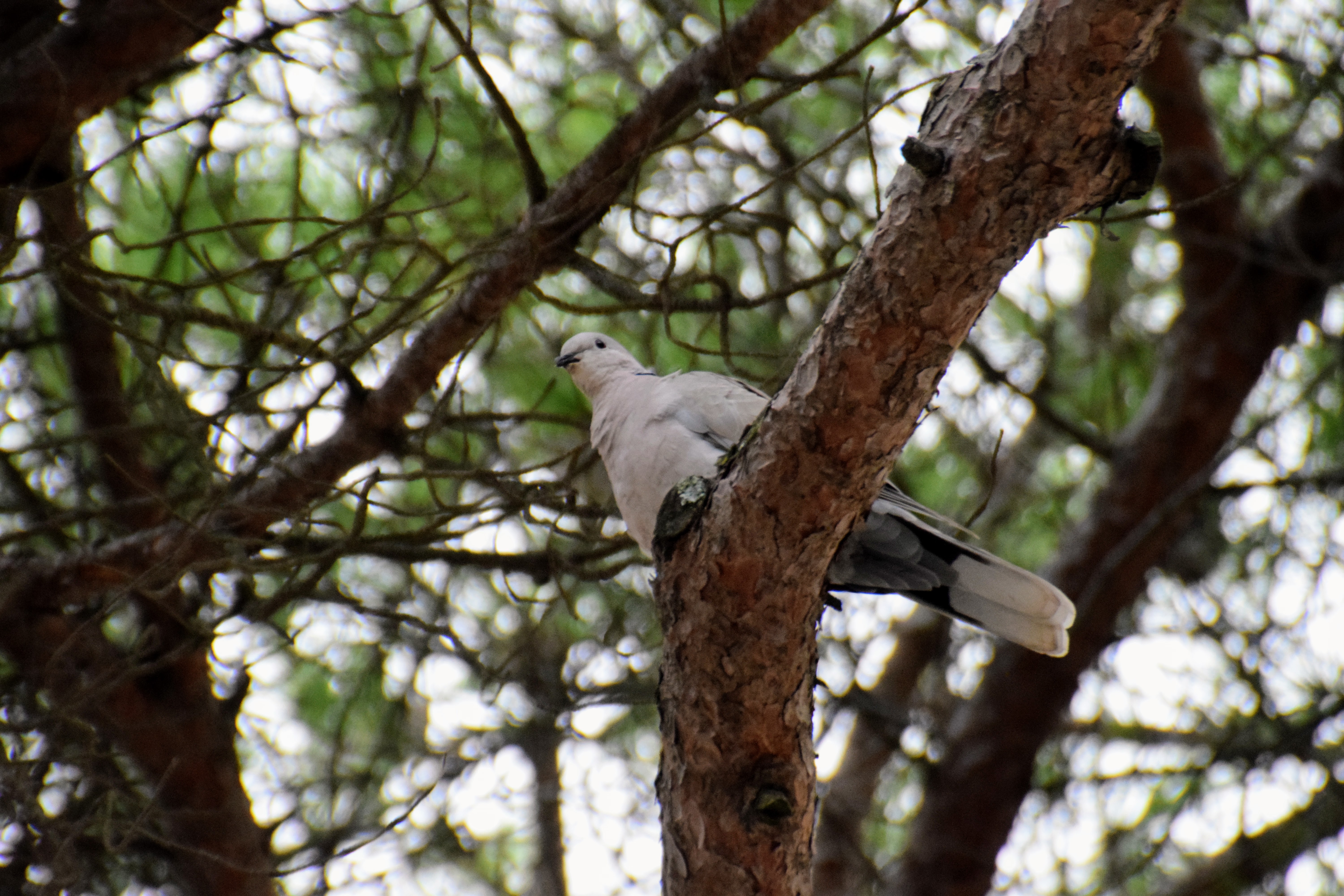
This is a Eurasian Collared Dove, which I’ve seen before as an introduced species in Florida. Here, they’re in their native range.
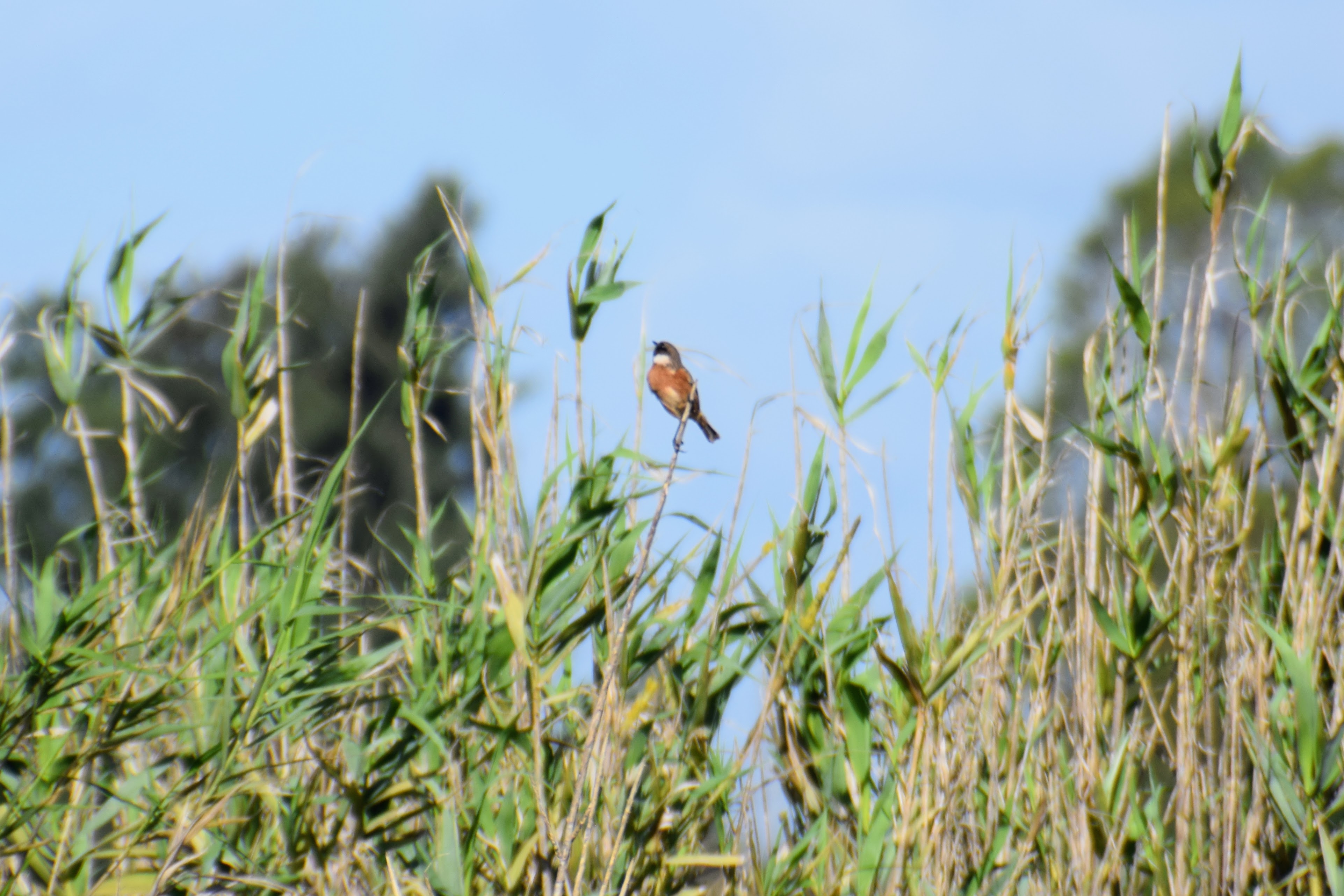
Here’s a European Stonechat, a type of flycatcher.
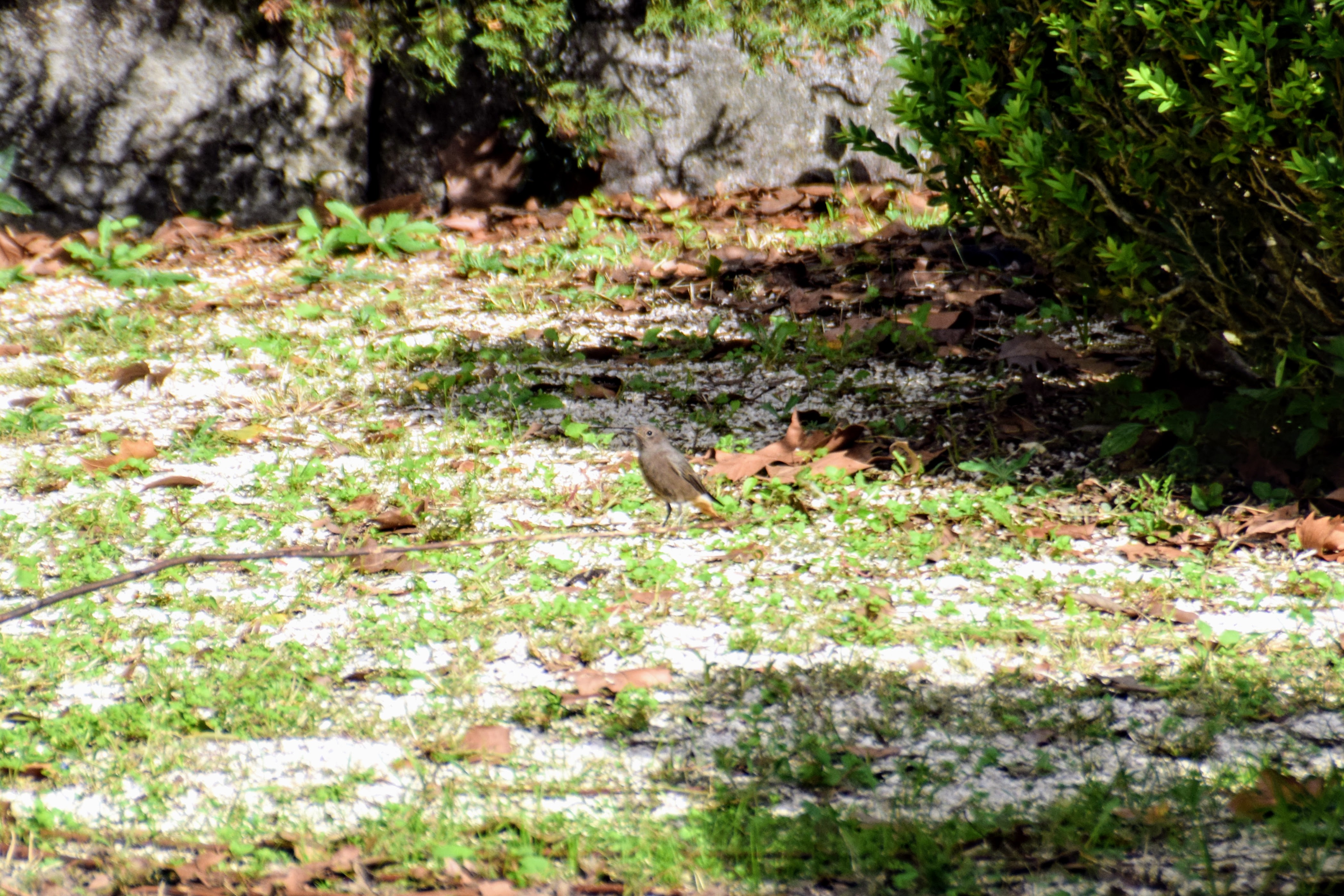
This little brown bird looks just like a female blackbird, but r/whatsthisbird on Reddit assured me that it’s a juvenile or female Black Redstart. How can something be simultaneously black, red, and brown?
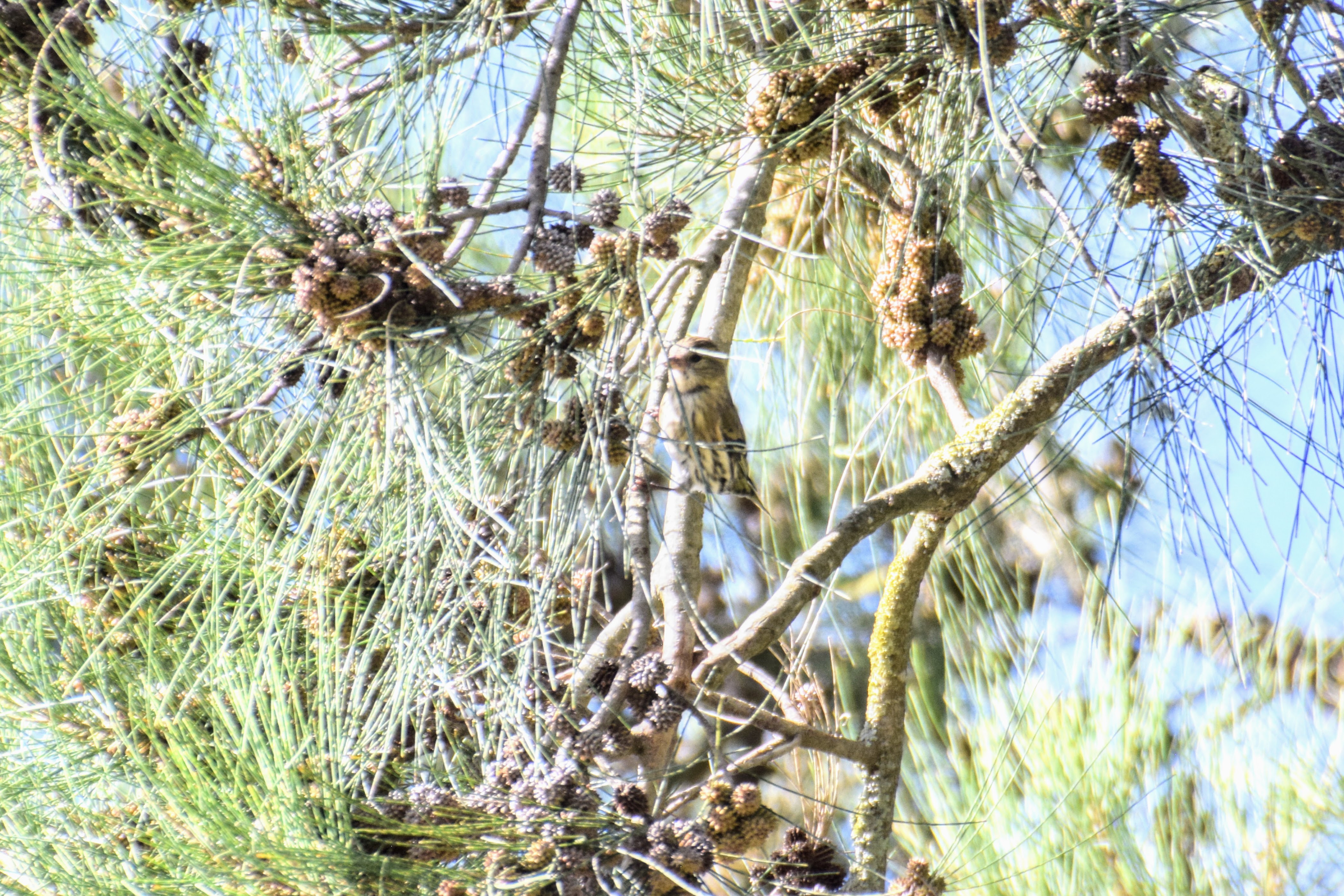
This is a European Serin, a tiny finch that looks intermediate between other finches and canaries (which are also a type of finch).
Madeira Birds
I took a day trip to the island of Madeira, an hour and a half flight off the coast of Portugal. It’s known as “the Hawai’i of Portugal” (or maybe Hawai’i is the Madeira of America) and is a bit more southerly, and thus more tropical, than the mainland. It has a smaller variety of birds than the mainland, but some are endemic (only found here).
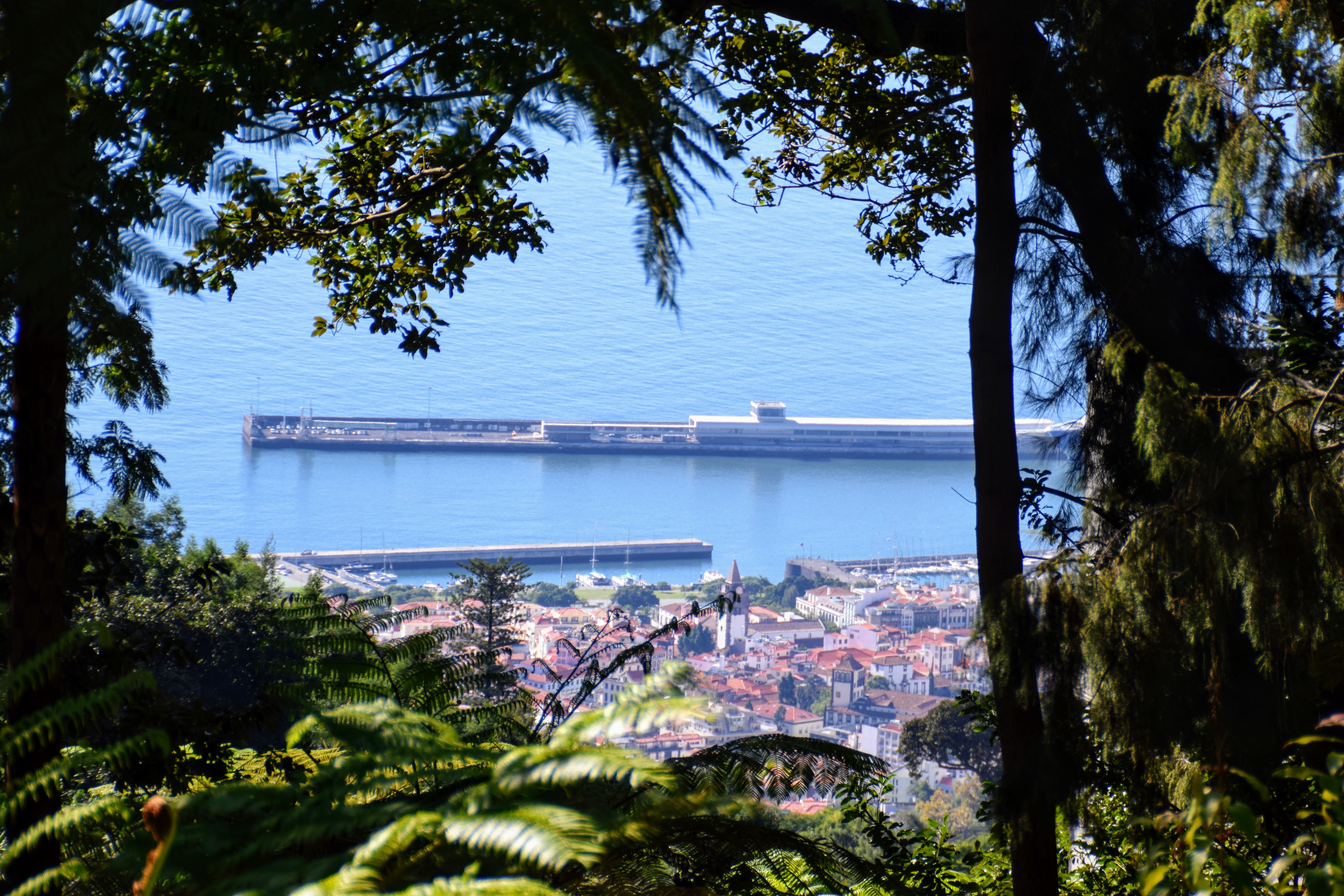
This is what the island looked like, from within the Botanical Gardens on the top of the mountain. The terracotta roofs are similar to those in Lisboa.
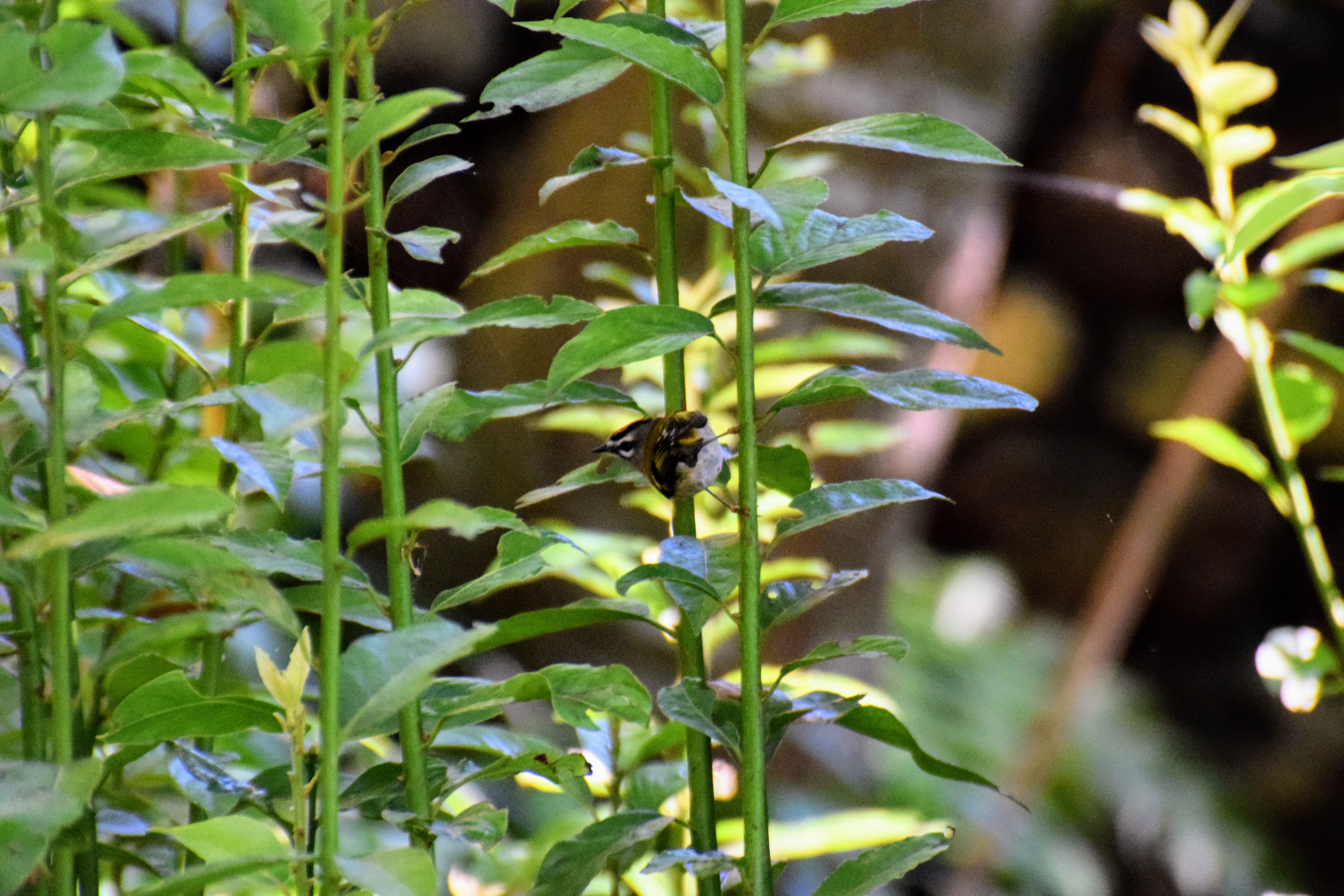
This is a Madeiran Firecrest, a type of kinglet endemic to Madeira. It’s closely related to the Common Firecrest found on the mainland, but found to be a separate species through genetic study.
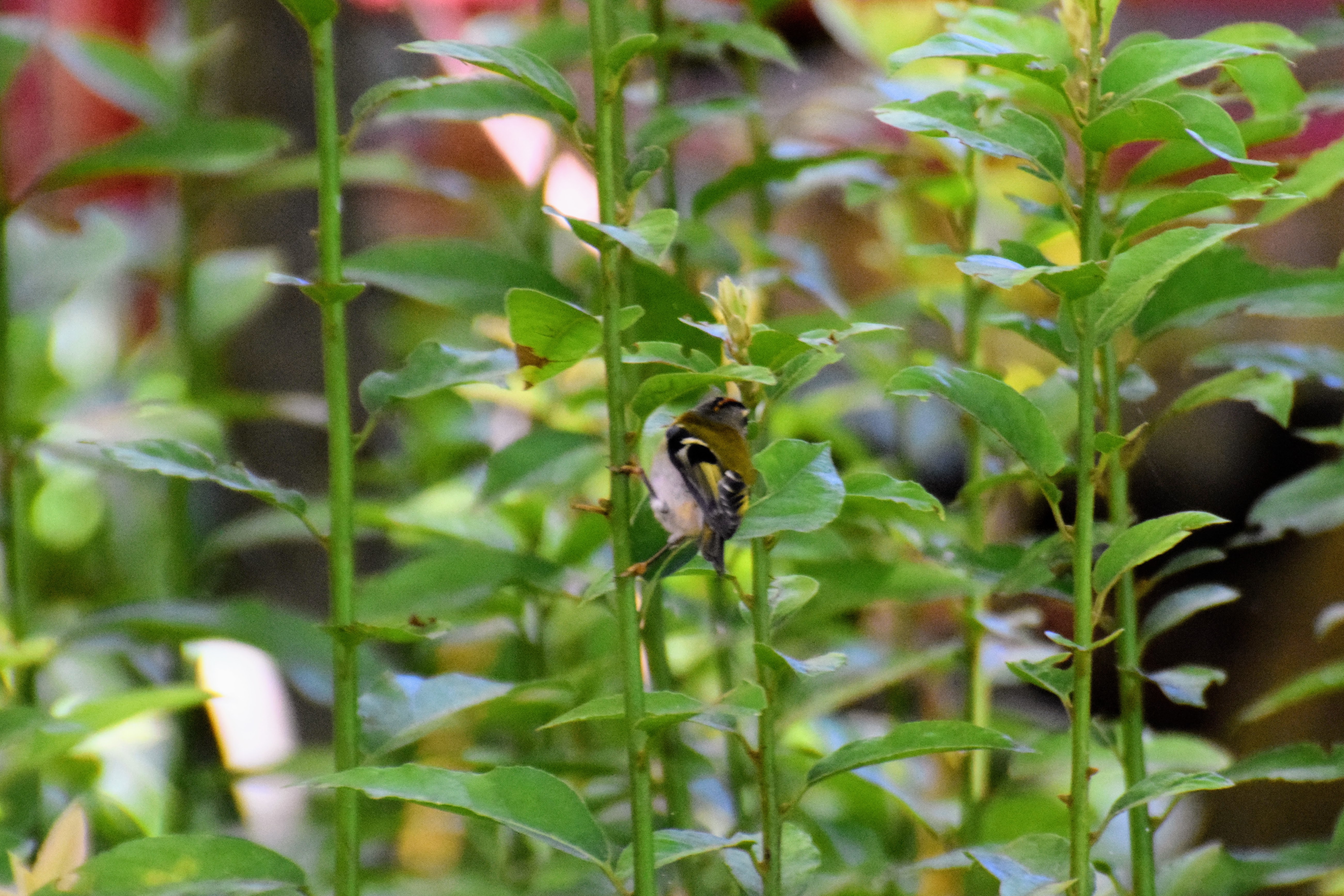
Here, you can see its fiery crest a bit better.

This is a Plain Swift, an aerobatics expert related to hummingbirds. Swifts are even more aerial than swallows, and are less able to take off from the ground, preferring to perch on vertical surfaces.
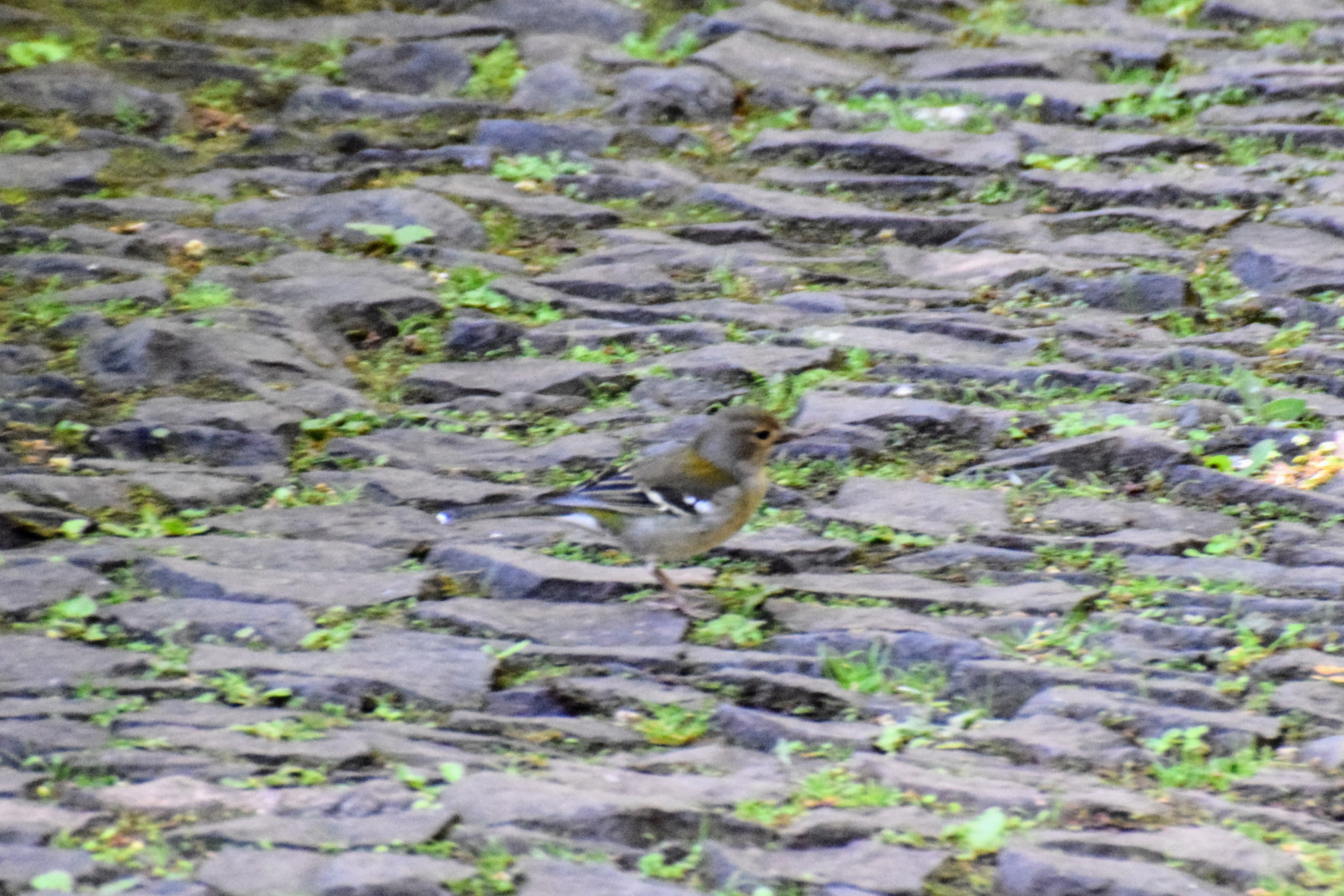
This is a Madeira Chaffinch, spotted on the path in the Botanical Gardens.

This is an Atlantic Canary, a small finch native to the Canary Islands (naturally), the Azores, and Madeira. It’s closely related to the European Serin, above.
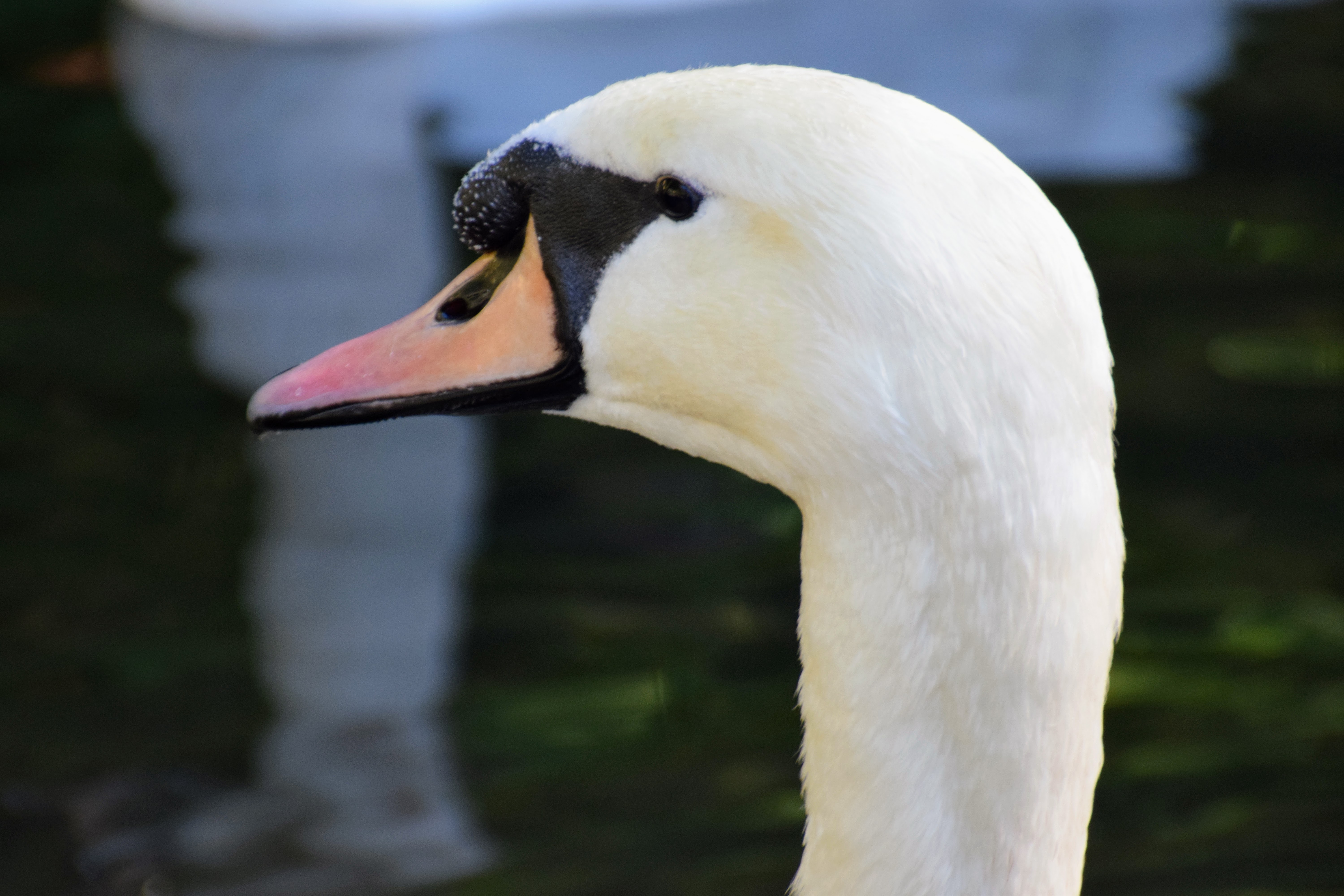
The Botanical Gardens were home to a few Mute Swans, which were impressively large and placid.

Swan necks are so ridiculous. They seem a similar relative length to sauropod necks. Unlike flamingoes, which have long necks to be able to reach the ground without bending their legs, and giraffes, which have long necks to scan the terrain and eat leaves from tall trees, it’s not clear to me what swans’ necks are for.
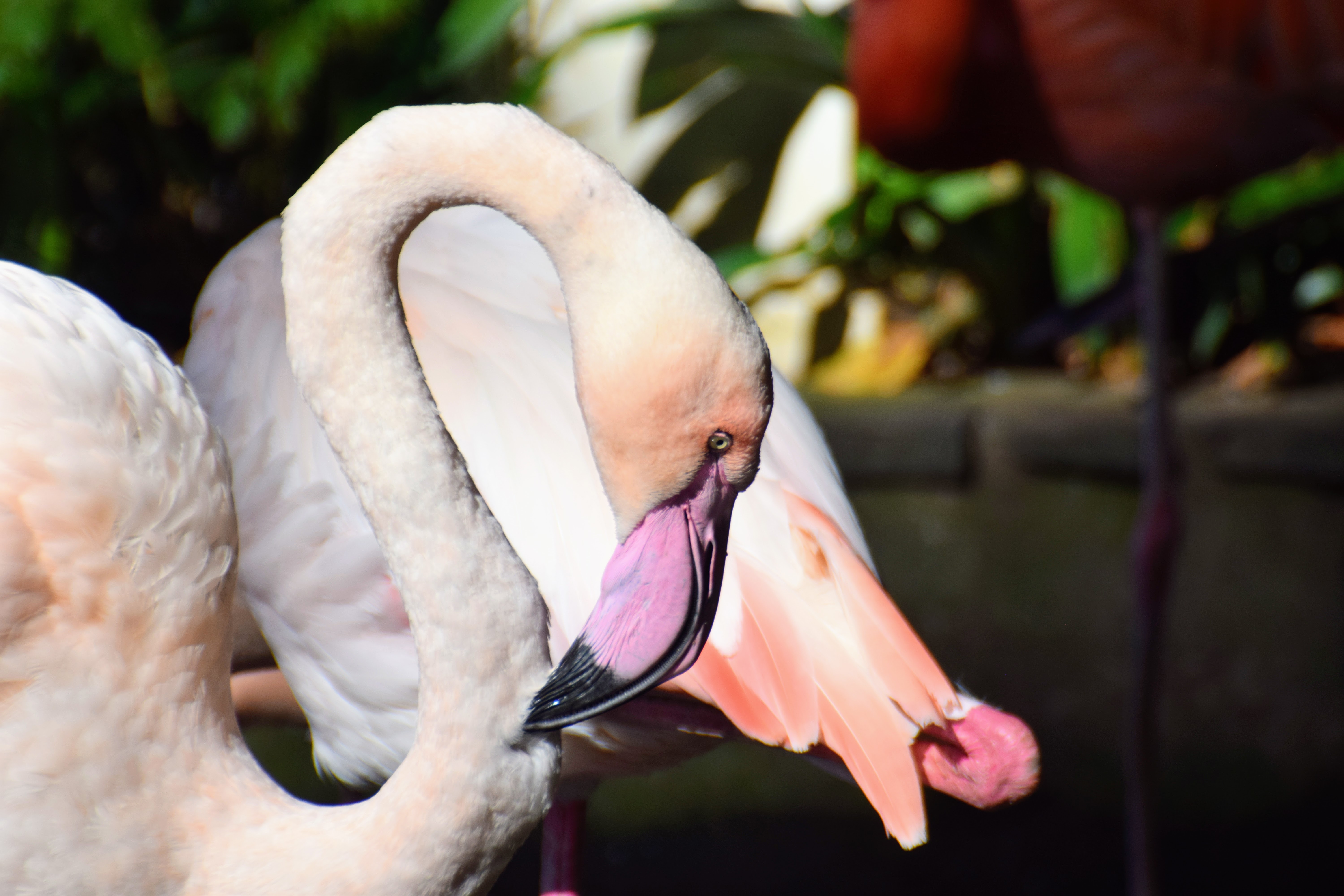
Speaking of flamingoes, there was a population of about a dozen at the Botanical Gardens. You can see each vertebra in its neck. Look at that beak. Does it remind you of anything? Imagine a whale tail attached to it, upside-down. Flamingoes are basically upside-down baleen whales, since they filter-feed with their heads inverted! But hold on… what’s that thing in the background?

Hmm. The flamingo’s leg is so long that when its leg is tucked up, the heel sticks out beyond the bird’s tail. I don’t like it.
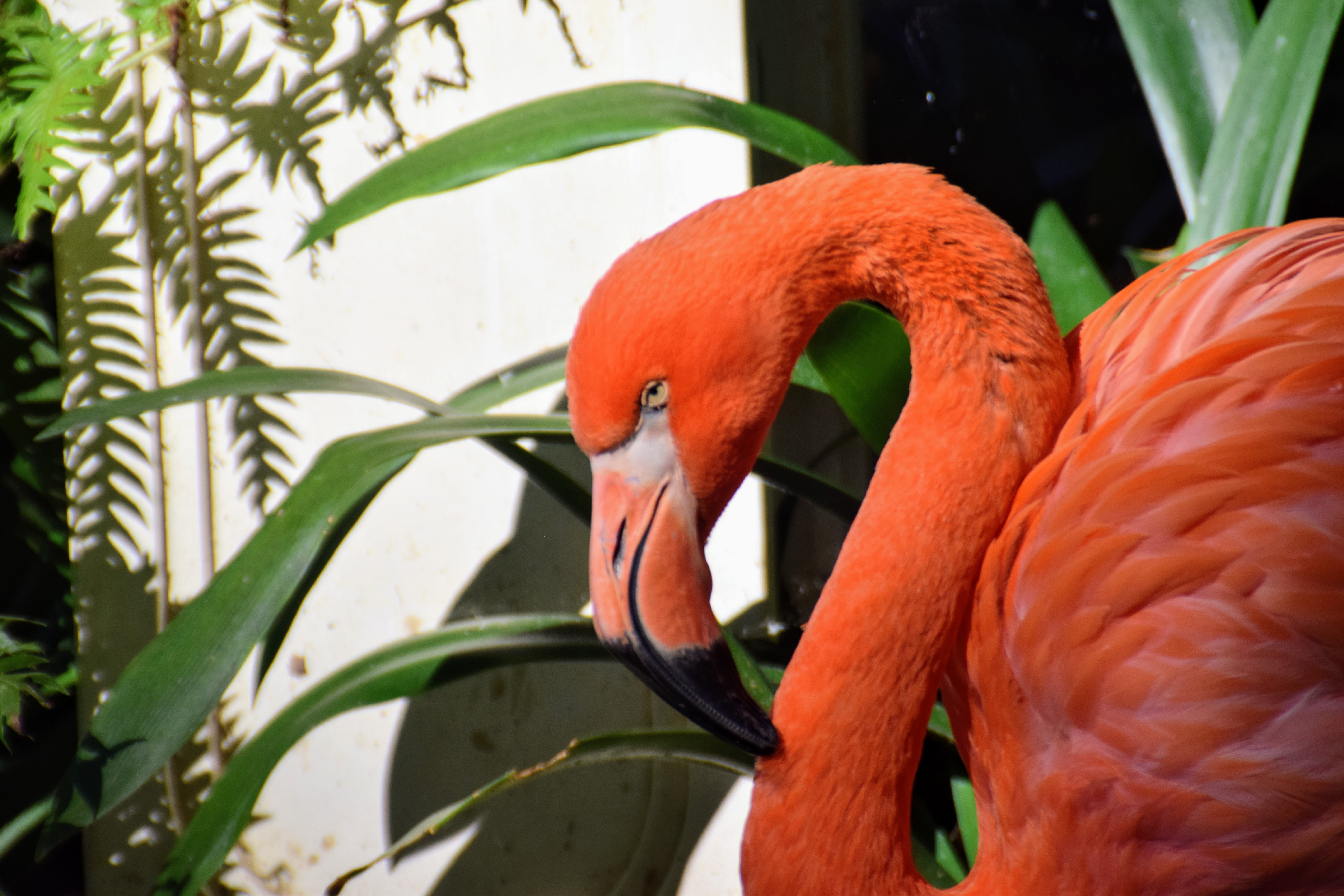
Some flamingoes in the flock were much more vibrantly colored than others. I don’t know why that would be, especially since the dozens of flamingoes in the zoo were all a uniform, medium pink, with no one as pale or as bright as the extreme individuals in the Botanical Gardens.
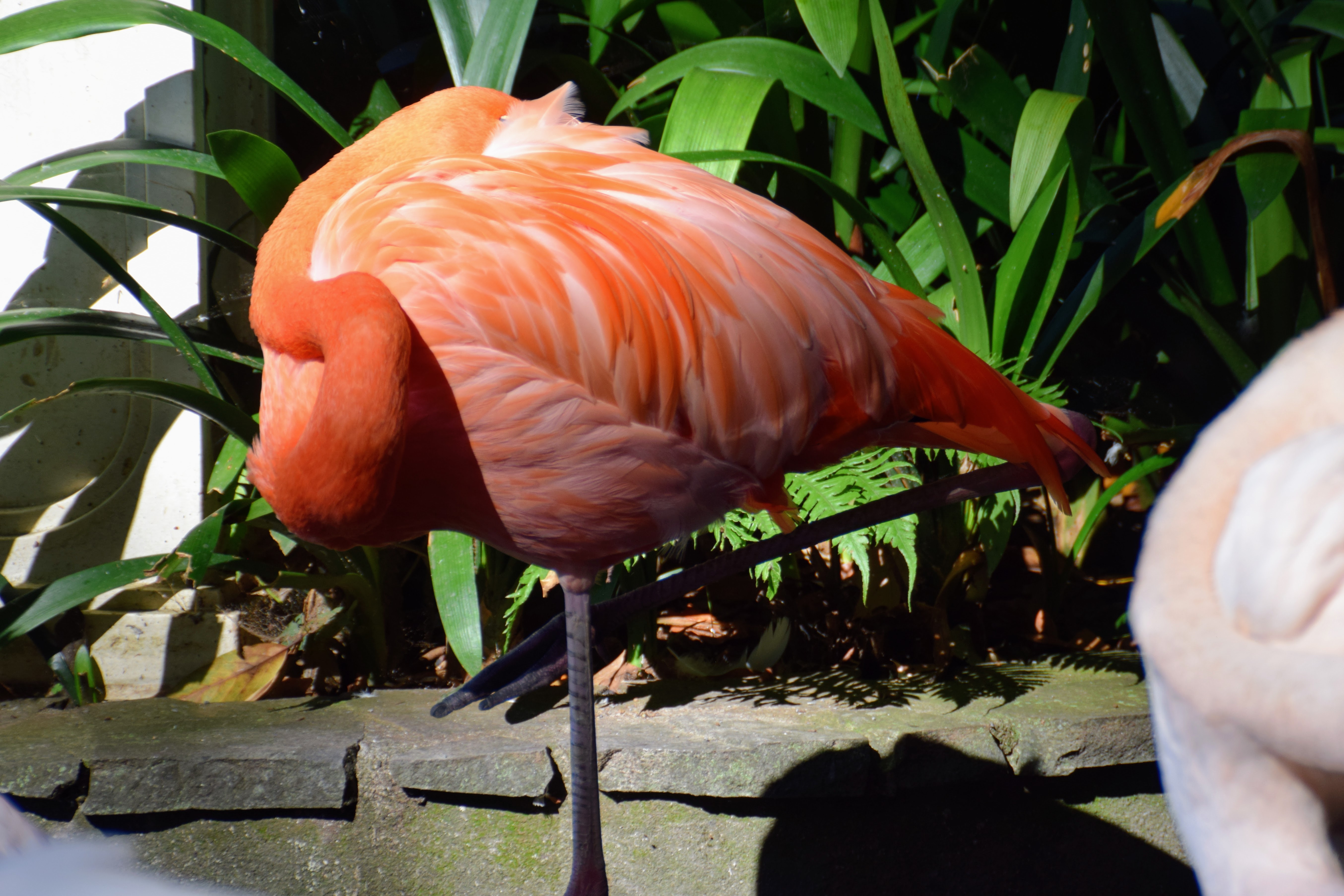
Do you think there are left- and right-necked flamingoes, that tuck their heads under the opposite wing? All the ones in this flock seemed to show the same handedness.
Zoo Birds
The Lisboa Zoo is located on the outskirts of the city, but has its own metro stop, which made it super easy to get to. While the zoo also had all the usual big impressive animals, like elephants, hippos, and tigers, it also had a wide variety of monkeys and parrots, and many of its animals were present in fairly large numbers. There were about twenty chimpanzees, which is by far the biggest number I’ve seen in a zoo, and over fifty of this one type of deer.

These White Cockatoos were very loud and active. We whistled the theme from “The Addams Family” to them, because for some reason it’s very popular among parrots, and they seemed to be into it, headbanging along to the rhythm.

This Timneh Parrot (a smaller and less-sexy cousin of the African Grey) was not paying attention to our whistling at all. He was making all sorts of his own noises and seemed to be having a great time.

This Salmon-Crested Cockatoo was enormous, and I think its enclosure was too small for it, unfortunately. It was pacing back and forth on a branch like a prisoner. It looked to be in good health though.

This Long-billed Corella looked like a serial killer in prison, sharpening its shiv compulsively with a nails-on-chalkboard sound.
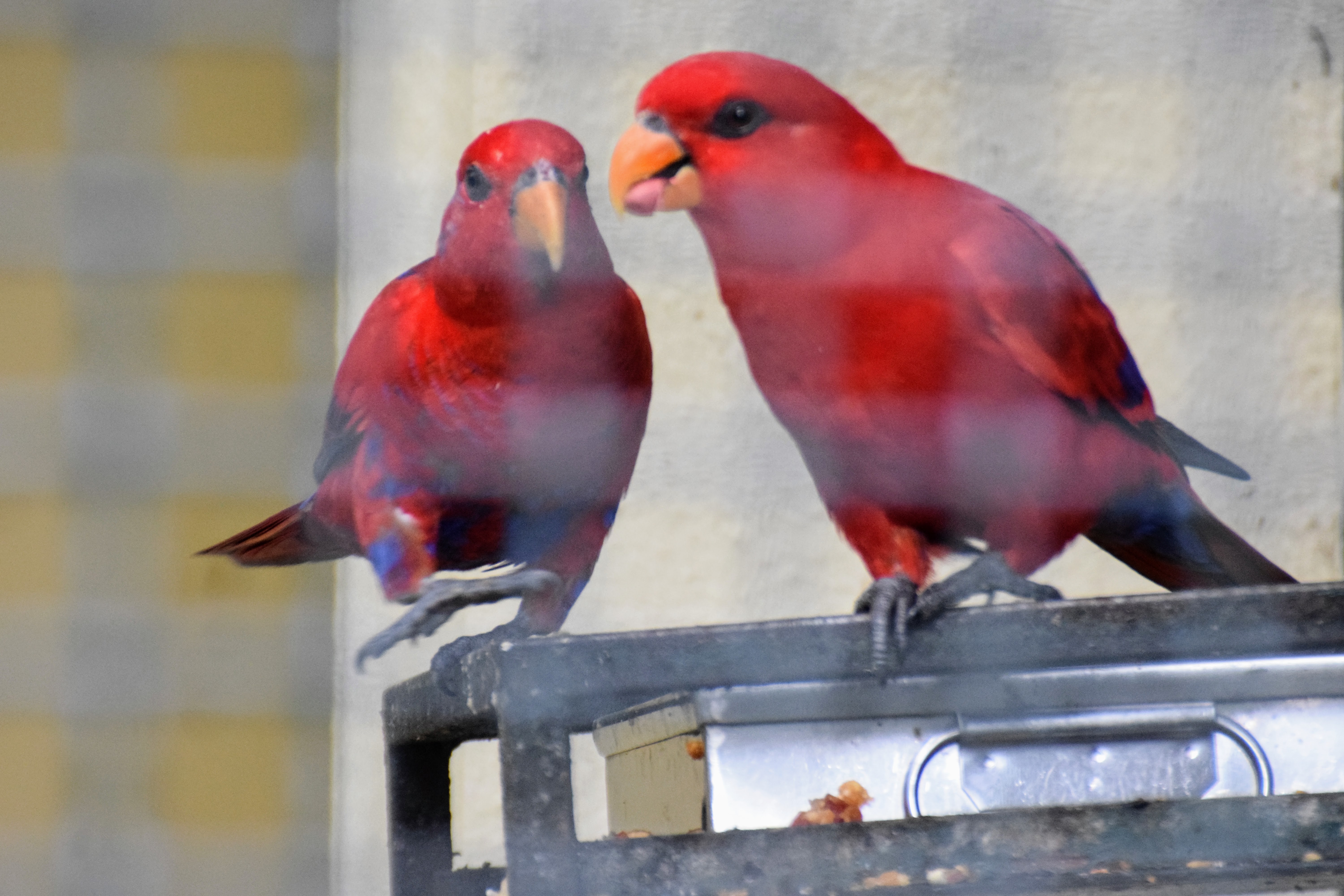
These are Red Lories. For most of the zoo animals, I had to manually focus the camera because the autofocus kept focusing on the cage bars. Sometimes I didn’t get it quite perfect.
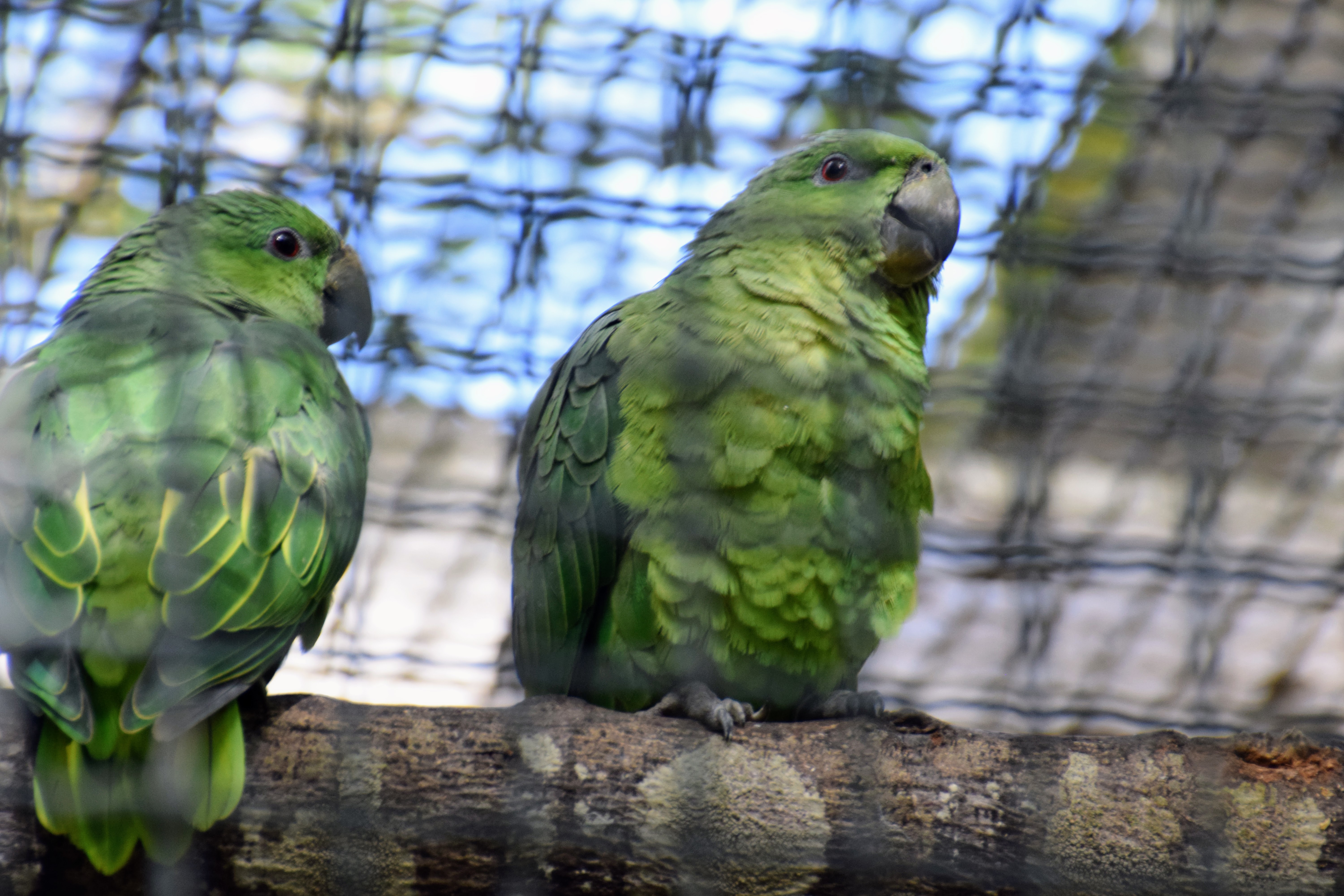
These Black-billed Amazons look like the most generic parrot. The “stereotypical Barbie” of parrots, if you will.
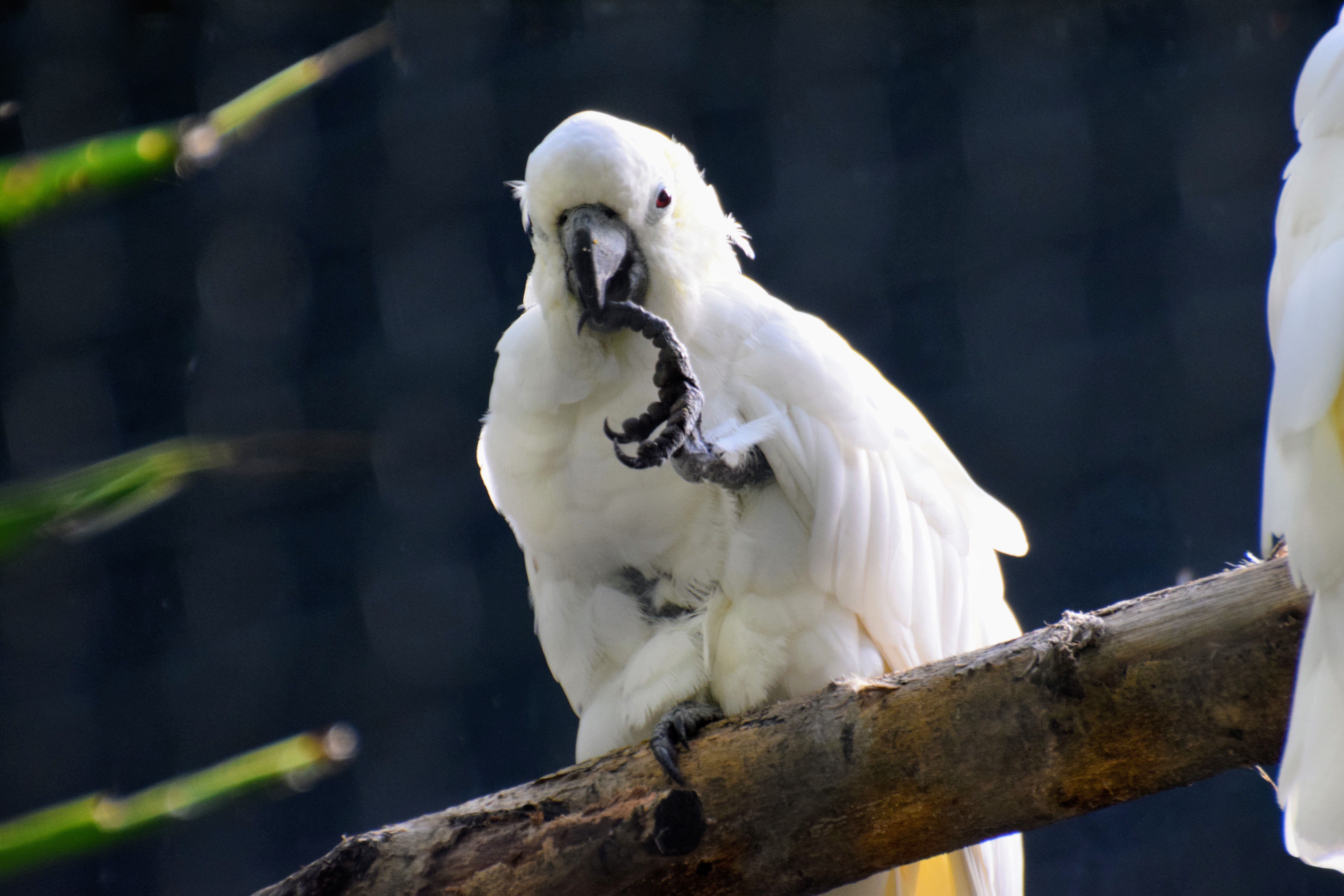
These Sulfur-Crested Cockatoos’ enclosure wasn’t directly adjacent to those of the other parrots, and the birds seemed a bit calmer as a result.
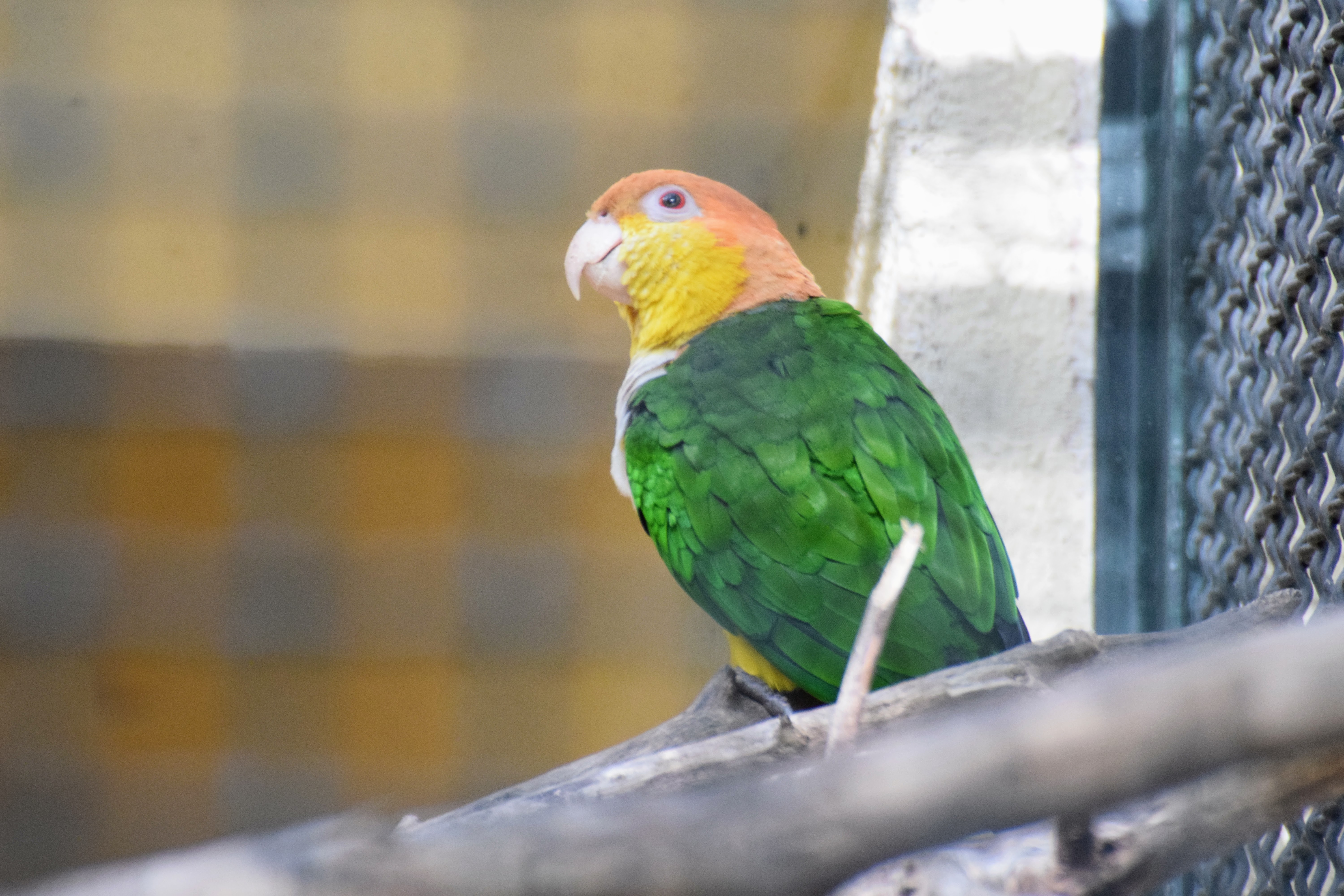
White-bellied Parrots (caiques) always look very formal to me, like they’re wearing a green sport coat over a white dress shirt.
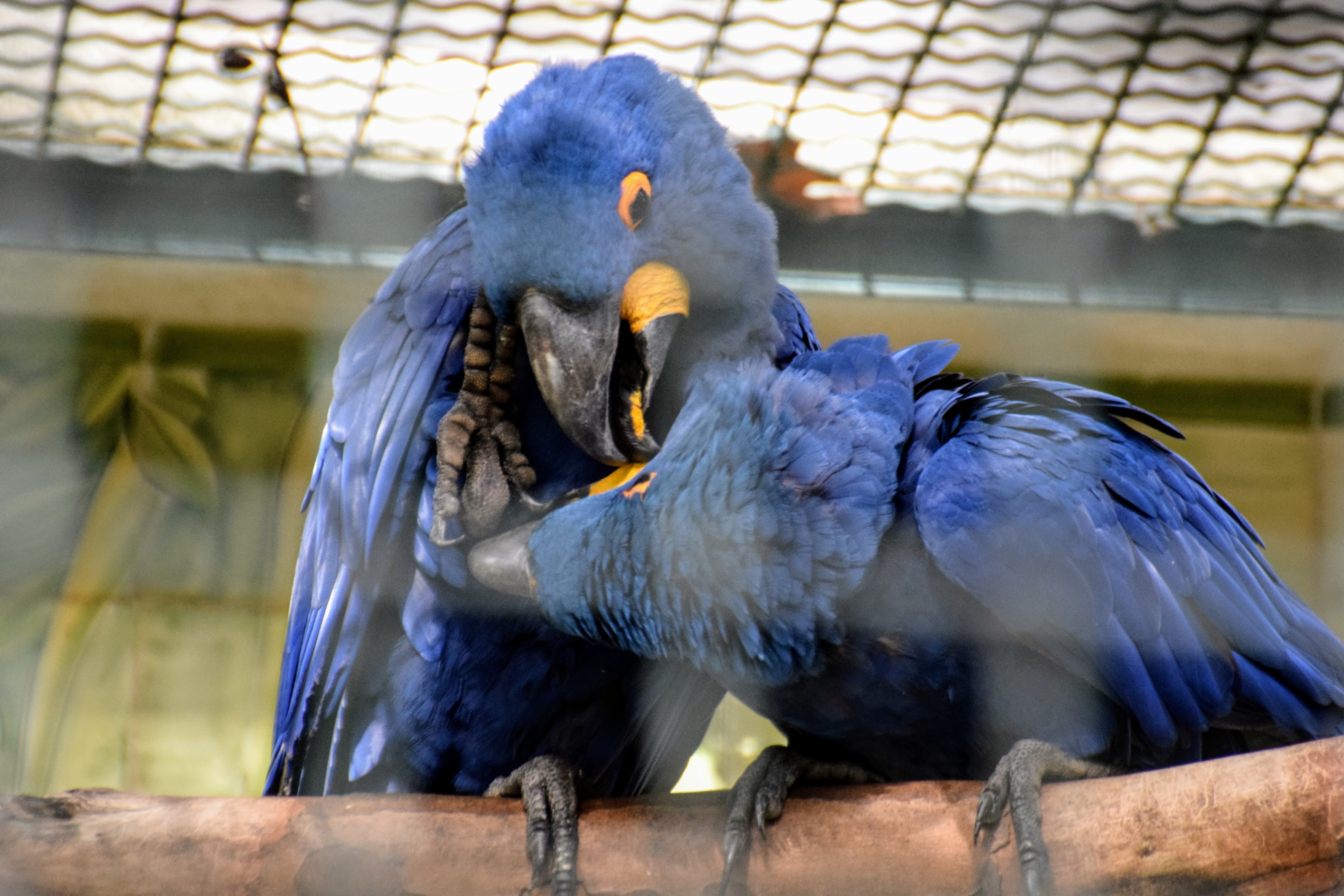
These Hyacinth Macaws were doing some kind of very acrobatic mutual preening. This species is the largest flying parrot (the flightless Kakapo is heavier), and are known to be “gentle giants”, somewhat calmer and sweeter than most parrots. Don’t they look like Cookie Monster?
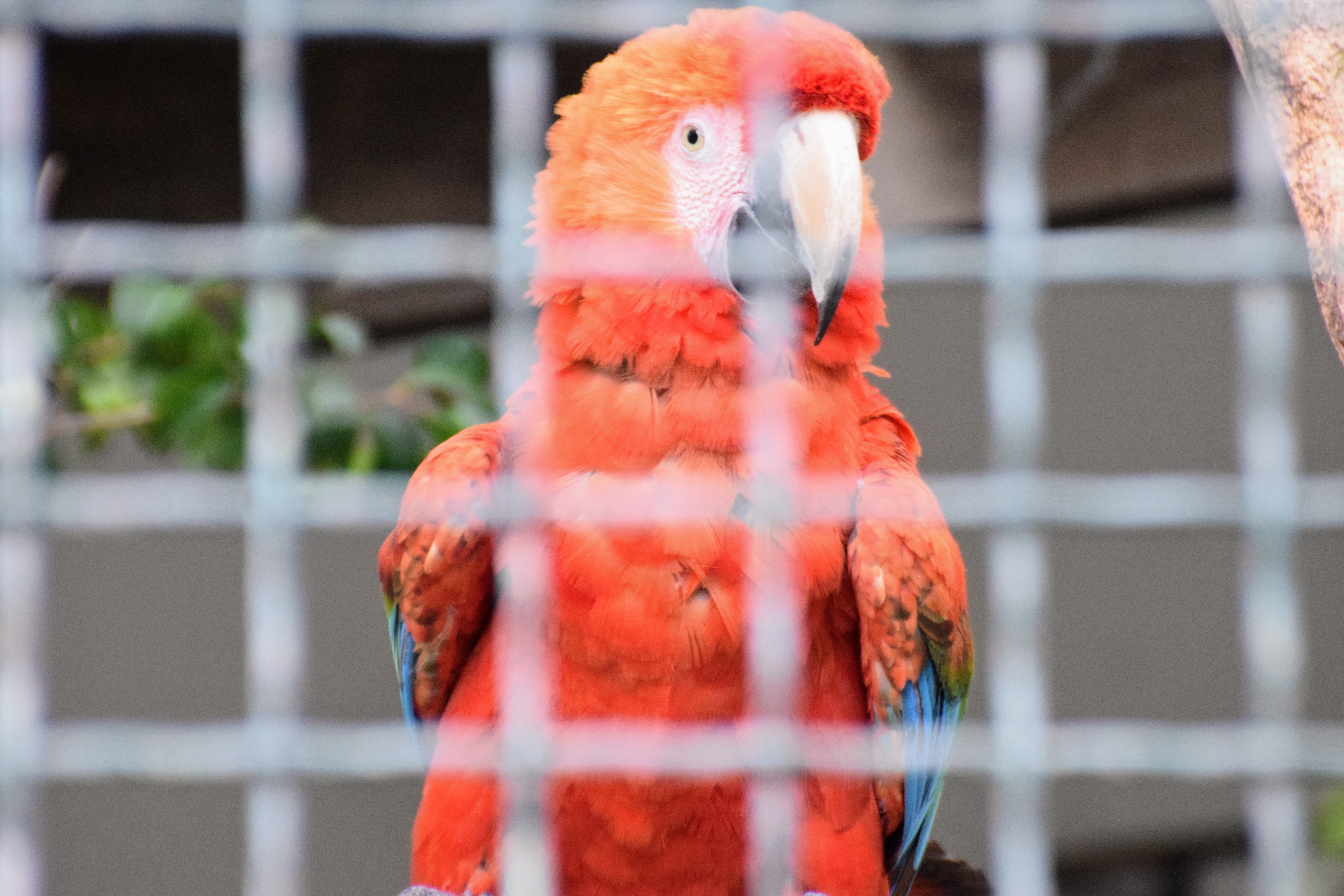
Finishing off the Sesame Street crew, here’s Elmo, the Red-and-green Macaw.
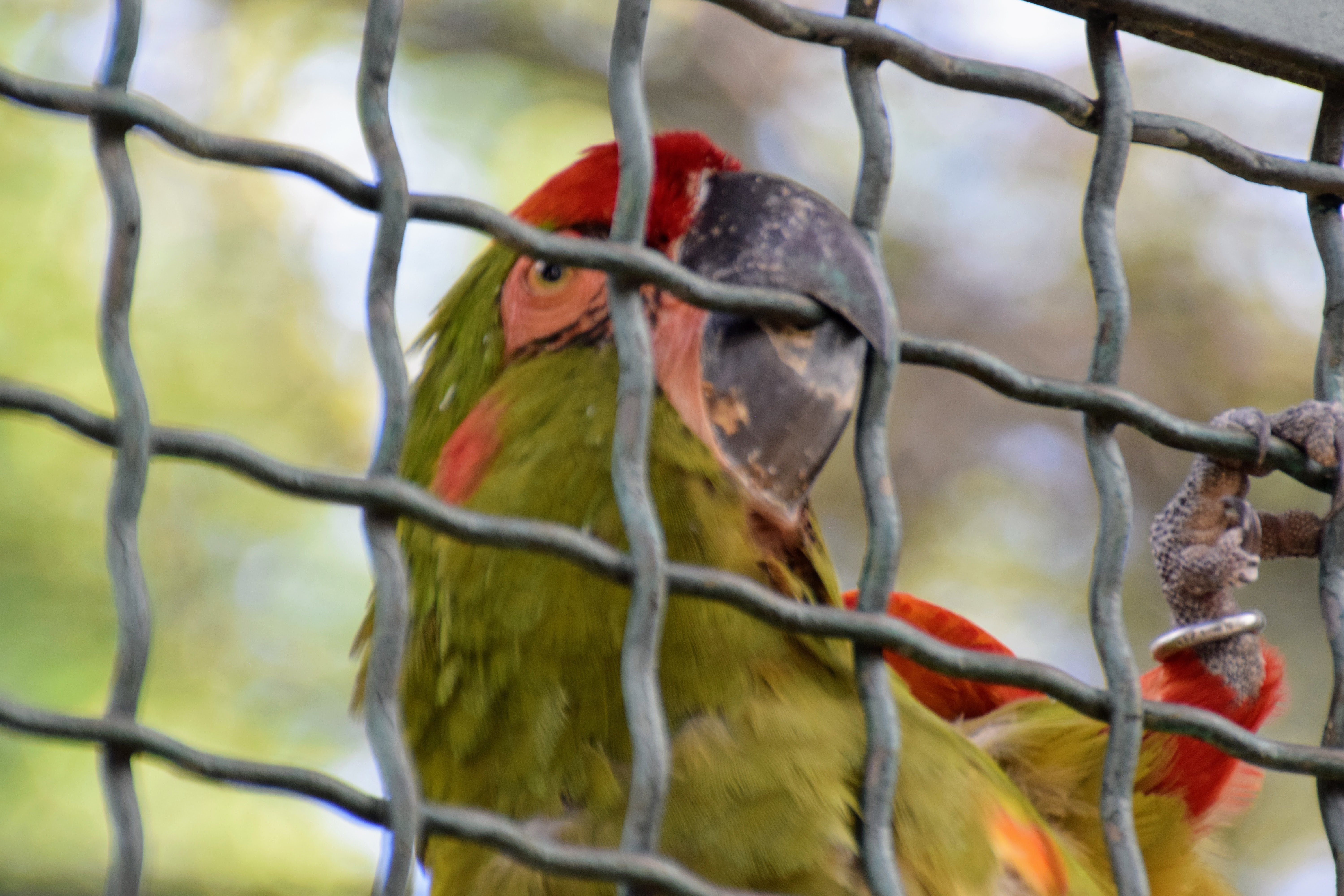
This Military Macaw was climbing up the side of its cage determinedly, like an army rappeller. Its name comes from its olive green uniform with red cap brim.

The Scarlet Macaw looks almost identical to the Red-and-green Macaw and the Green-winged Macaw.
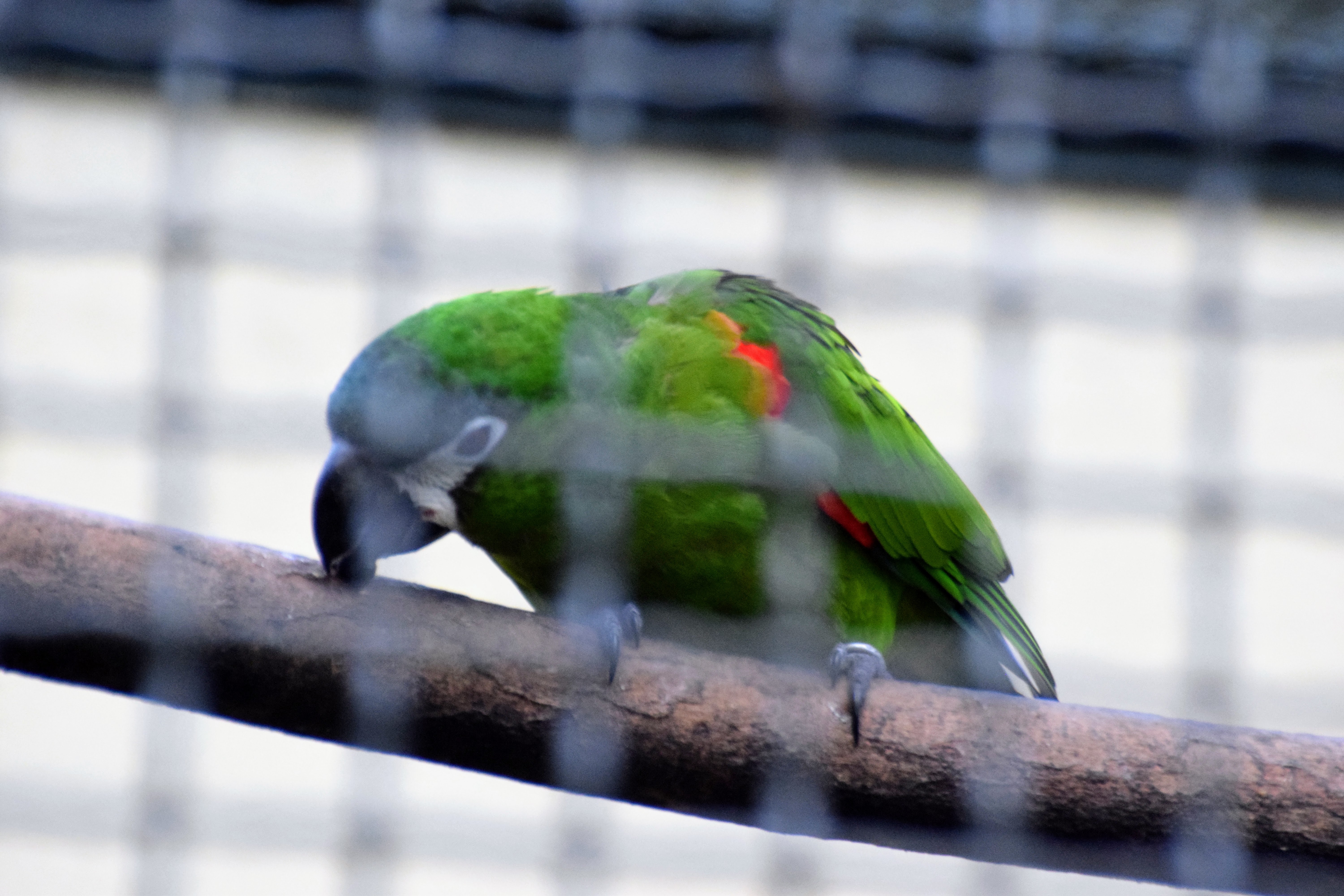
Last but not least of the parrots, the Red-shouldered Macaw, also known as mini macaw! Macaws aren’t a true clade but just describe any parrot that has prominent bare skin on its face.
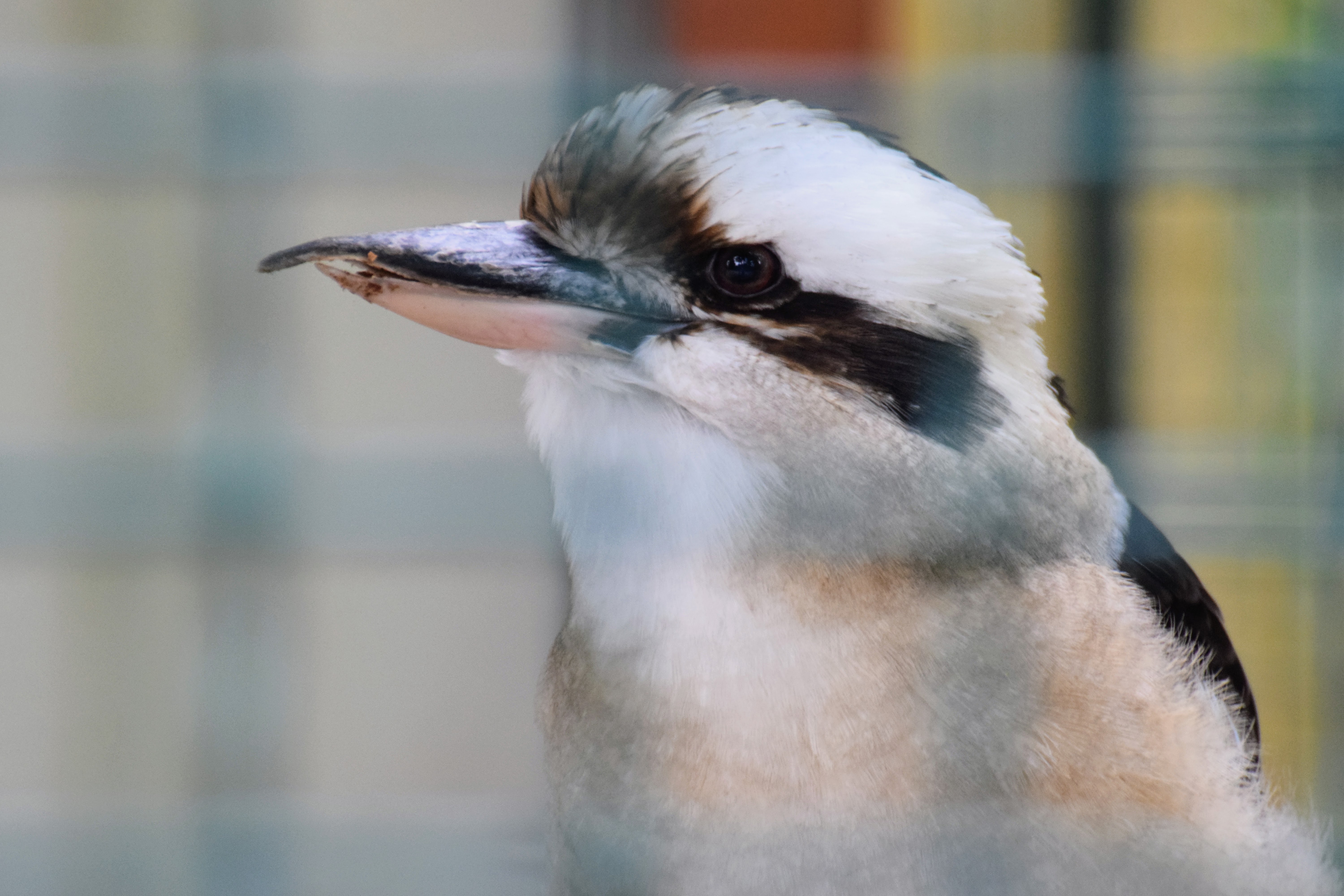
This Laughing Kookaburra has the aspect of a bird of prey, but is actually a kingfisher.
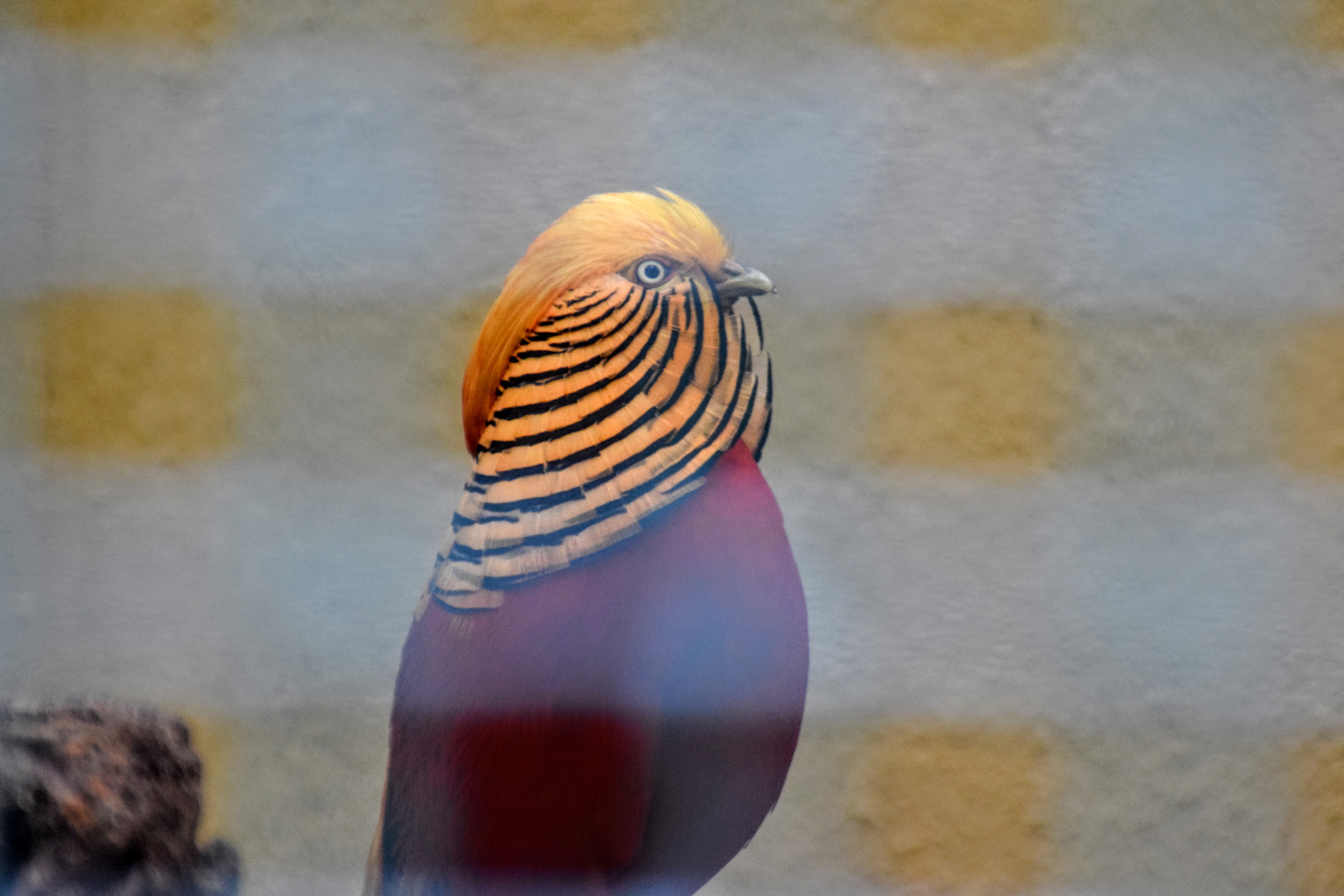
This male Golden Pheasant looks like a pharaoh. These birds are native to China, which makes me wonder if they had something to do with the Chinese obsession with red and gold.

This is a Hamerkop, a bird I included in my deck of bird playing cards. It’s a smaller relative of the famous Shoebill Stork. Its name means “hammer head”, referring to the feather crest on the back of its head that makes it look symmetrical.
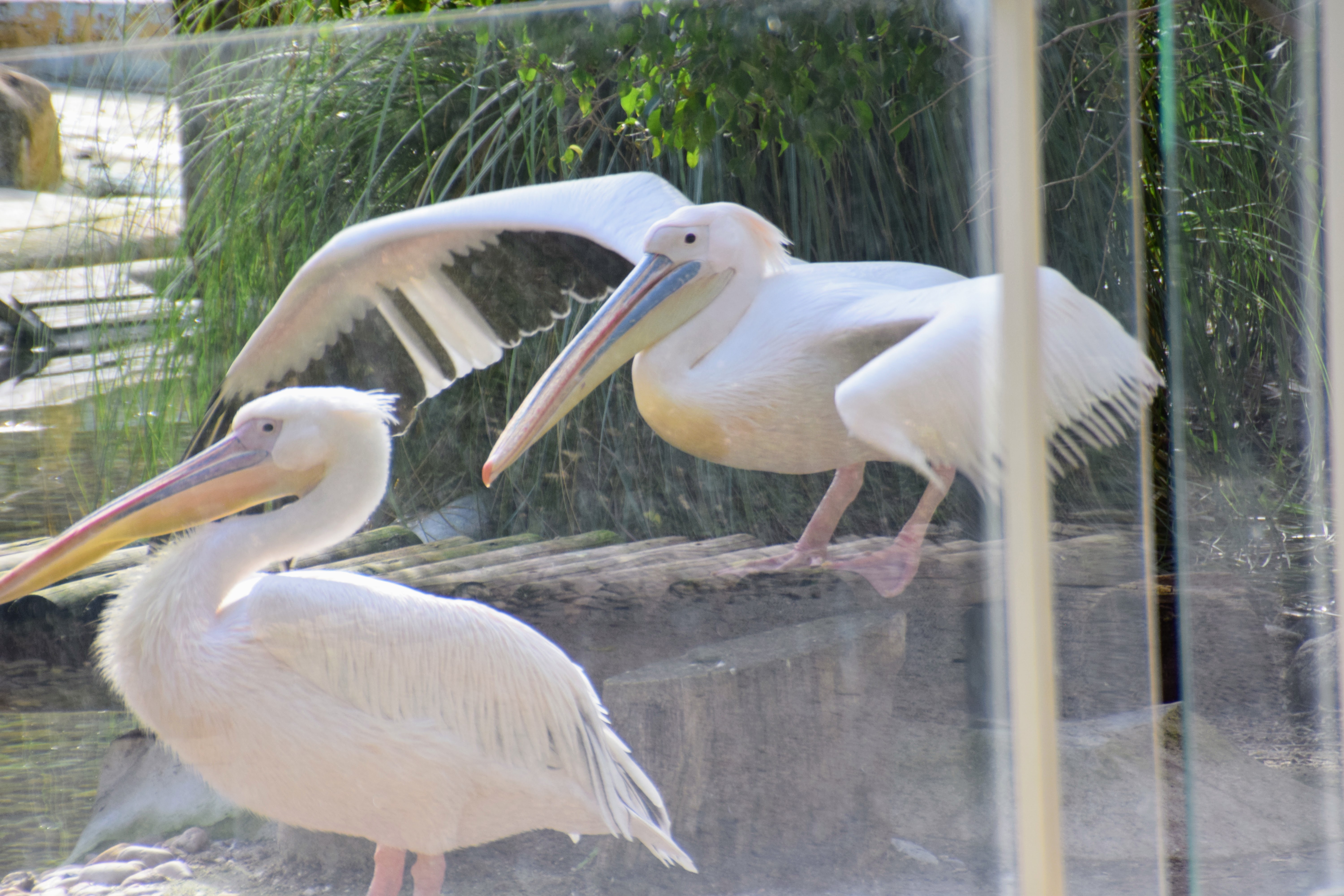
These are Great White Pelicans, a huge bird weighing up to 15kg native to Africa and some parts of the Middle East. You can see that this one is pinioned, meaning the finger on its left wing has been cut off to render it permanently flightless. This was common practice with birds imported as decoration, with most swans on English estates in the 19th and 20th centuries being pinioned to prevent the decorations from escaping. I’m not sure if this zoo pinioned this bird or if it’s in the zoo because it wouldn’t survive in the wild.
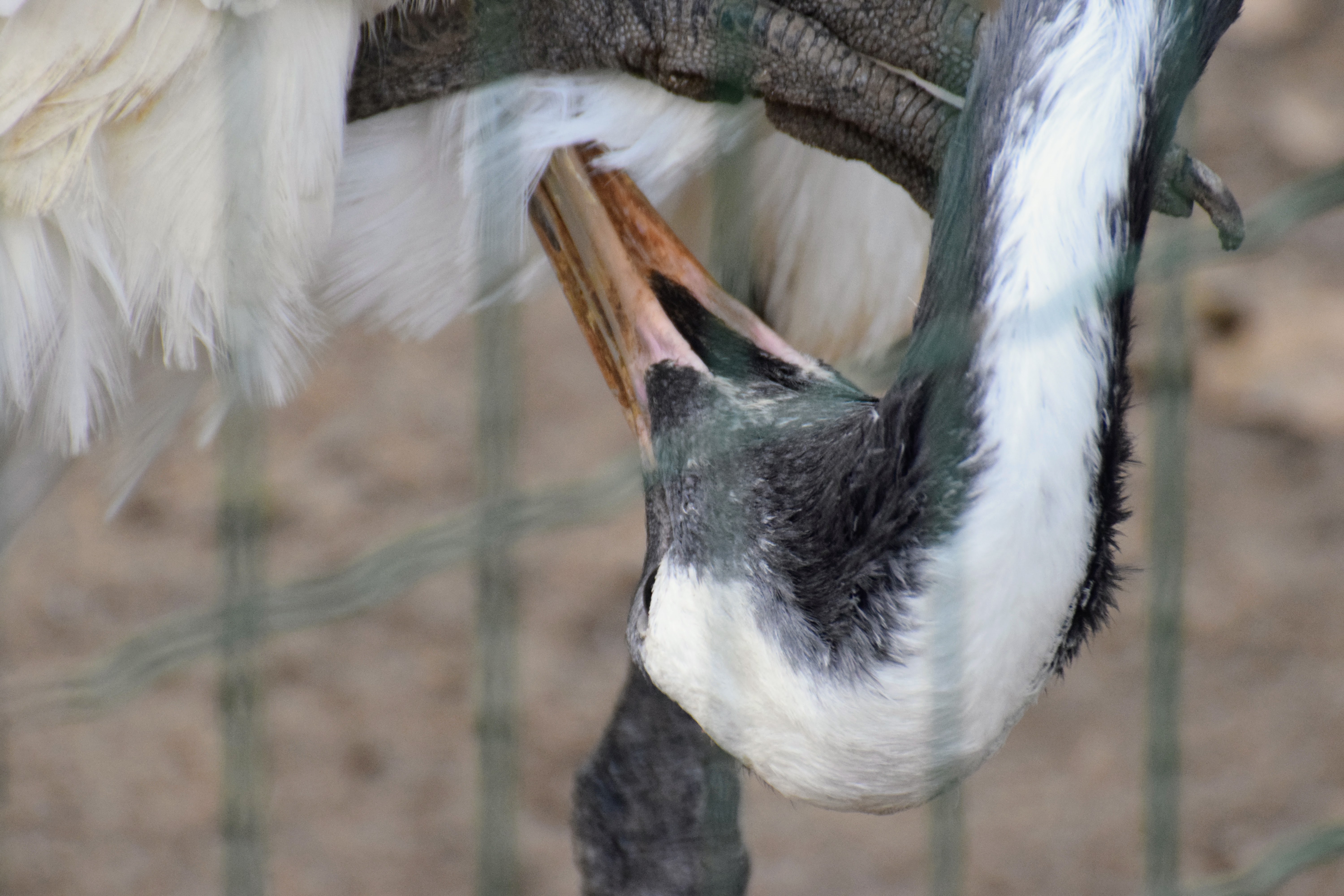
This Common Crane, which occurs naturally in parts of Portugal, was very busy preening.
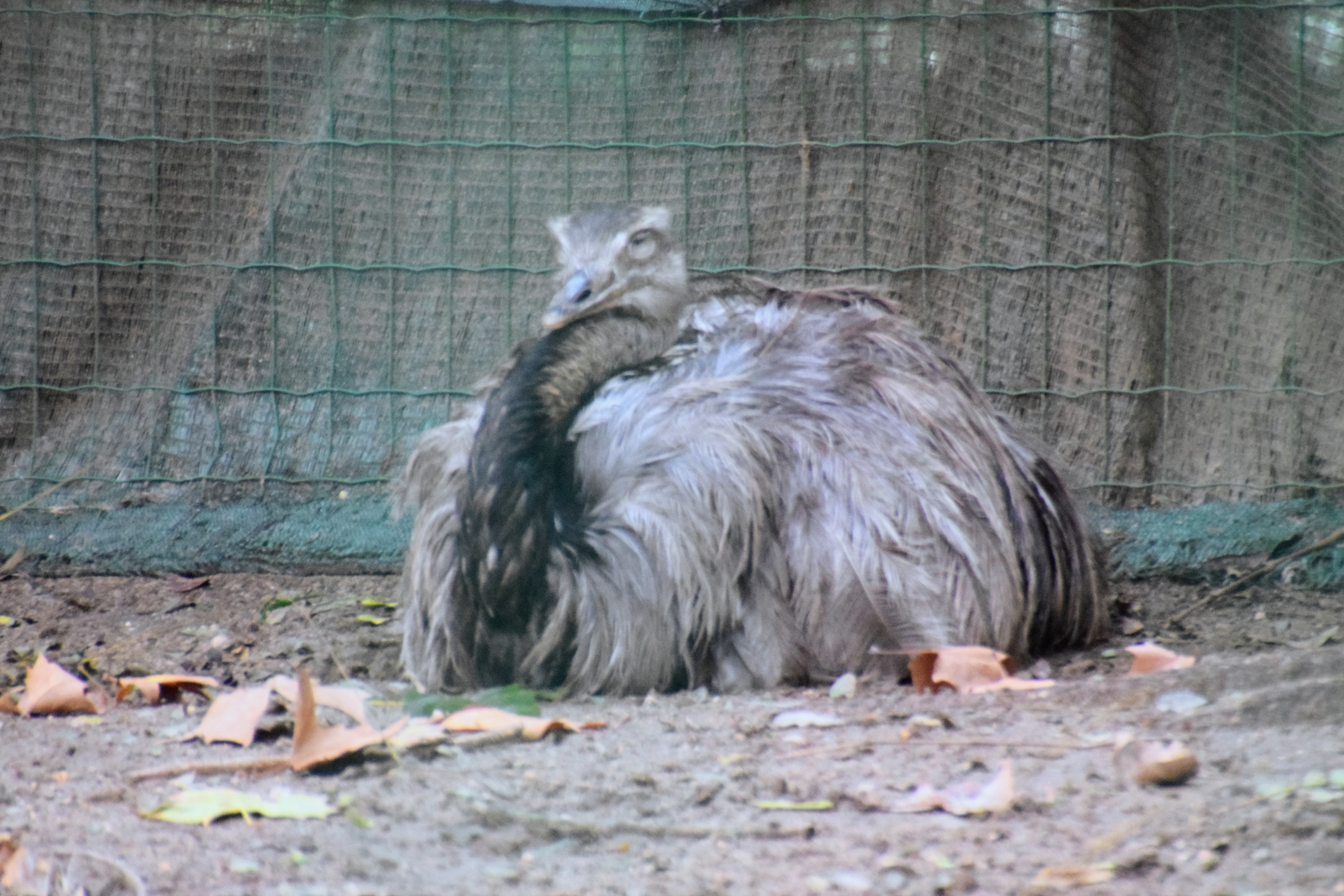
While this may look exactly like an emu, it’s actually a rhea, a ratite from South America. In Europe they call them nandus.
Zoo Primates

This chimp looks like it’s plotting something. The chimp colony in the zoo was impressive, and it is (I think) more than were in the Arnhem Zoo in the ’80s, the colony made famous by Frans de Waal in Chimpanzee Politics. They had an indoor-outdoor space next to the gorillas and colobus monkeys. (Those two species could share an enclosure because gorillas are peaceful herbivores. If there were monkeys in the chimp enclosure, the chimps would torture and eat them.)
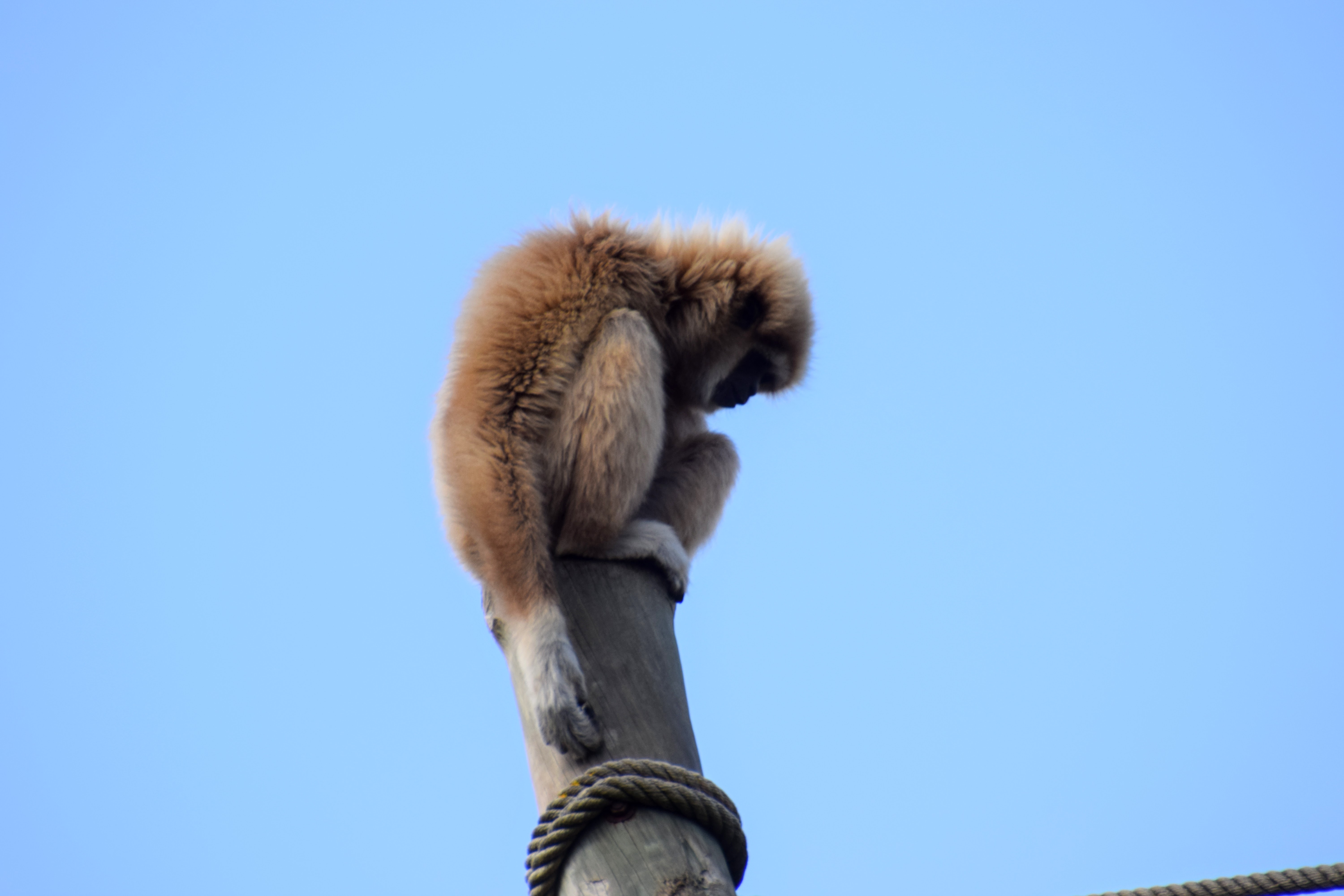
This Lar gibbon was making a bunch of noise at the top of this post. “Wooooooooop woop woop!”
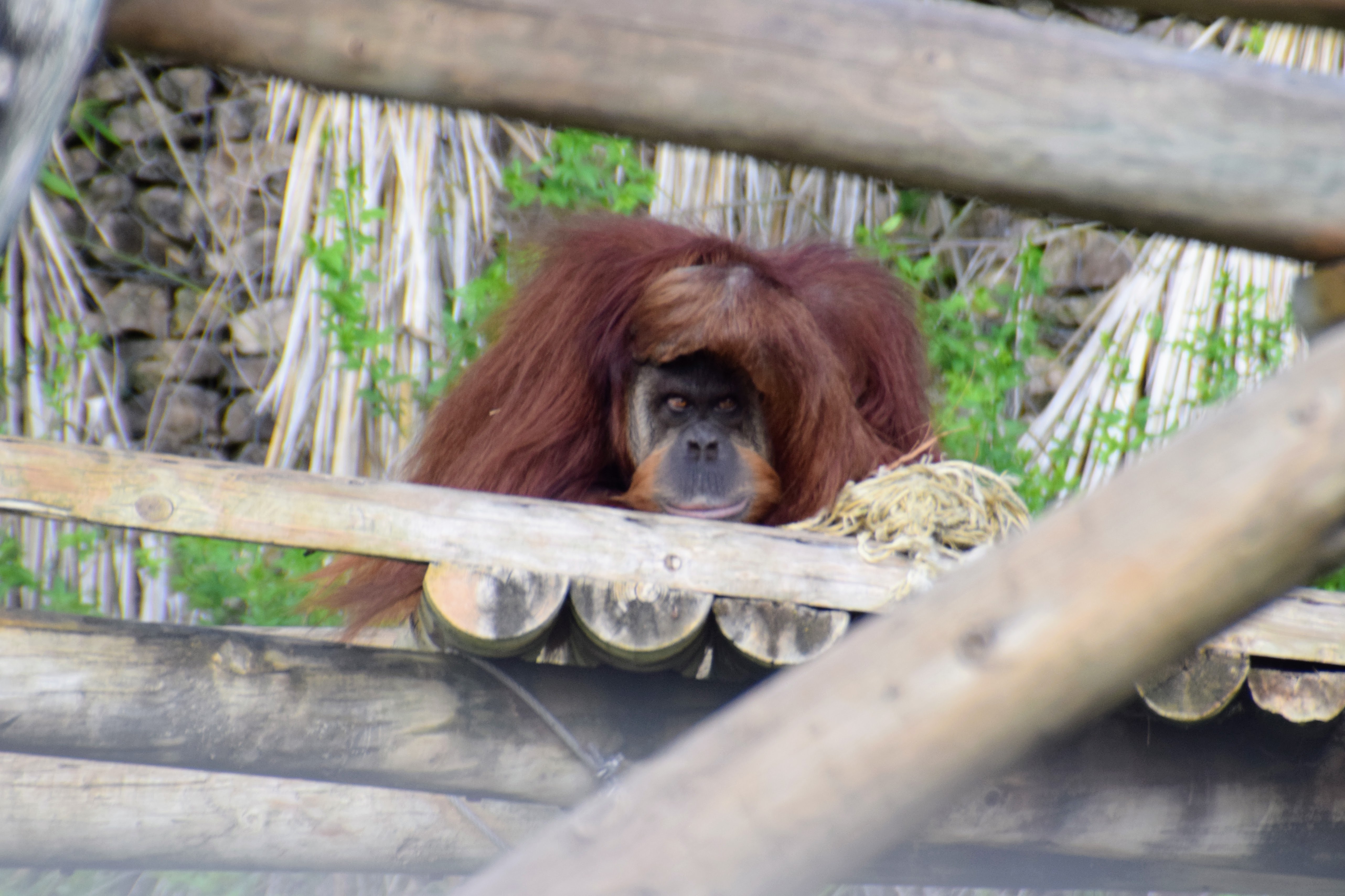
And this orangutan, which shared its enclosure, didn’t look too happy about the racket.
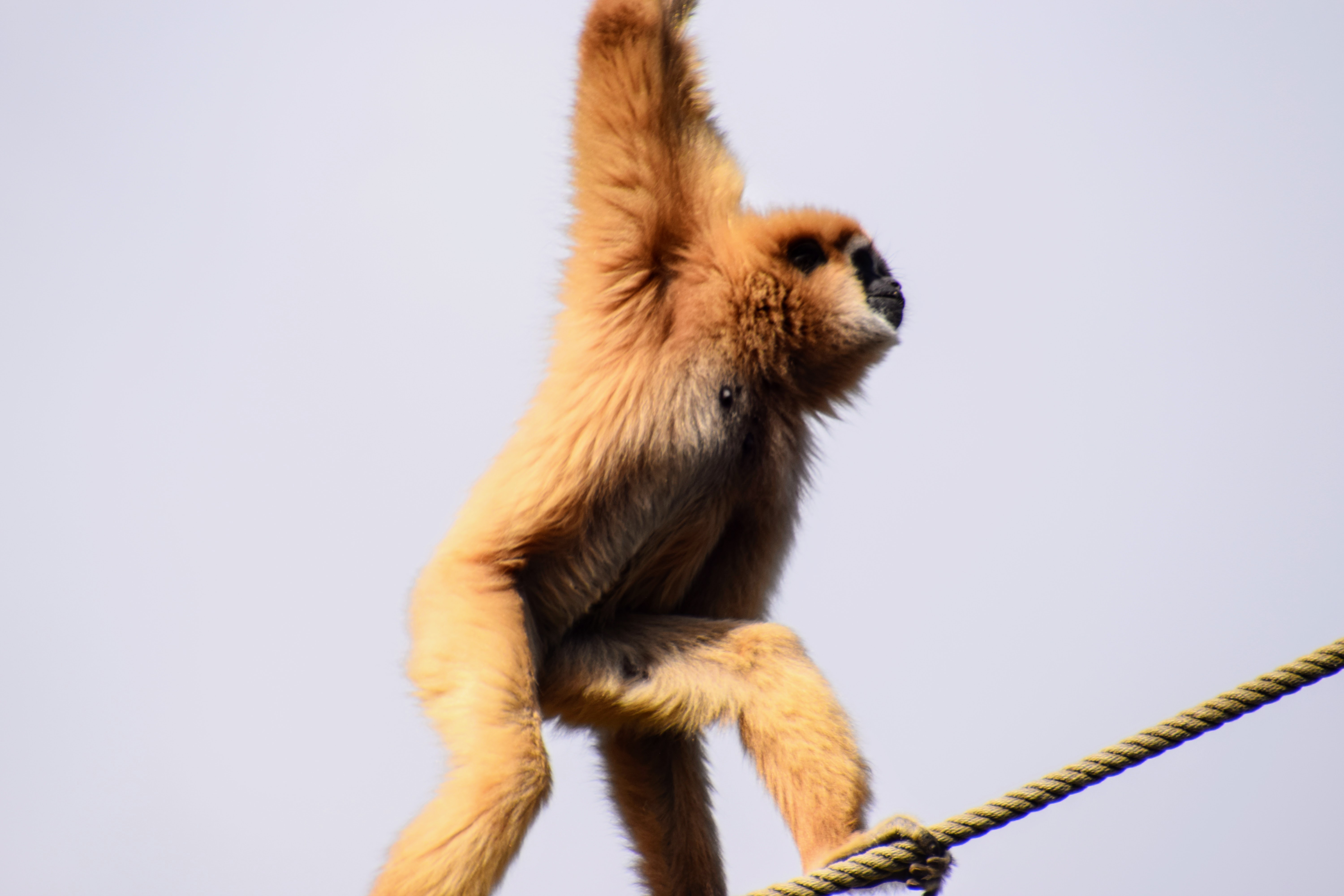
This Lar gibbon was doing a highly acrobatic exercise circuit, which included tightrope walking, flinging itself feet-first between a platform and a cactus, and swinging up onto platforms and between ropes.
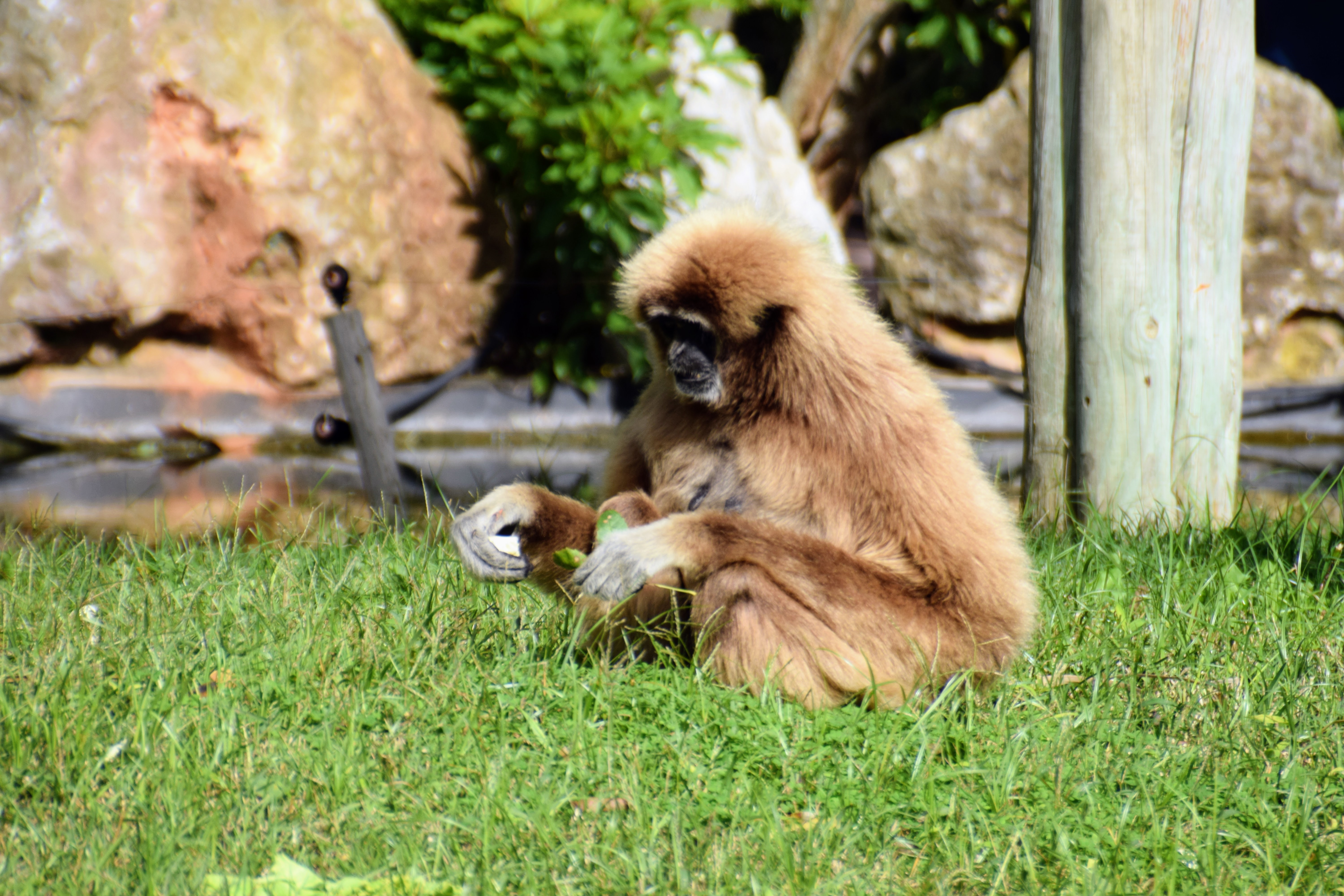
While this Lar gibbon just sat in the grass, eating a snack.
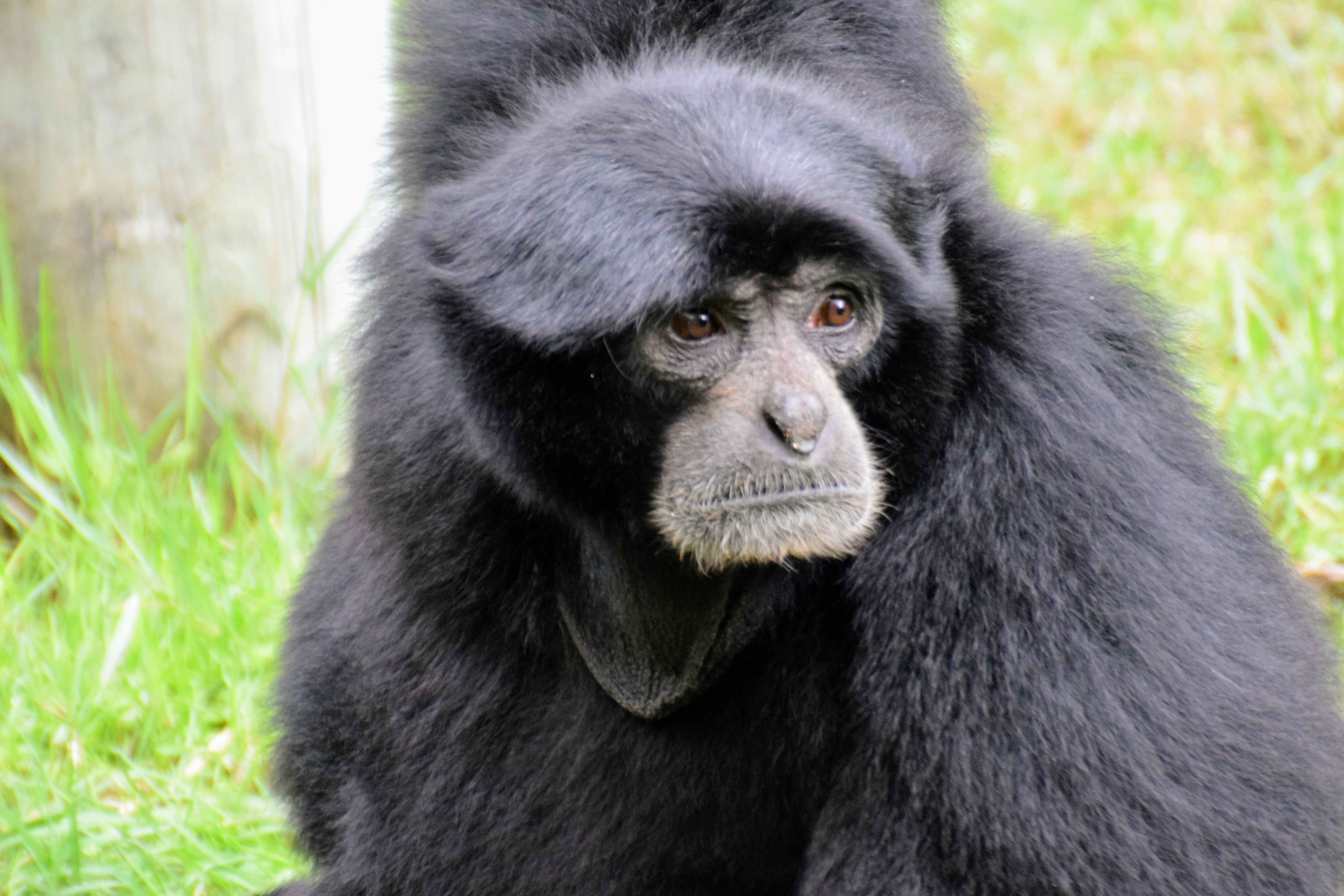
This siamang, while not as acrobatic as the Lar gibbon, brachiated smoothly and effortlessly between ropes. Its arms were longer than the entire rest of its body.

There were Javan langurs with either red or black coats in this enclosure, but the black ones seemed much more active while the ginger ones were more reserved. The sign said while all juveniles start out red, adults can be either red or black.
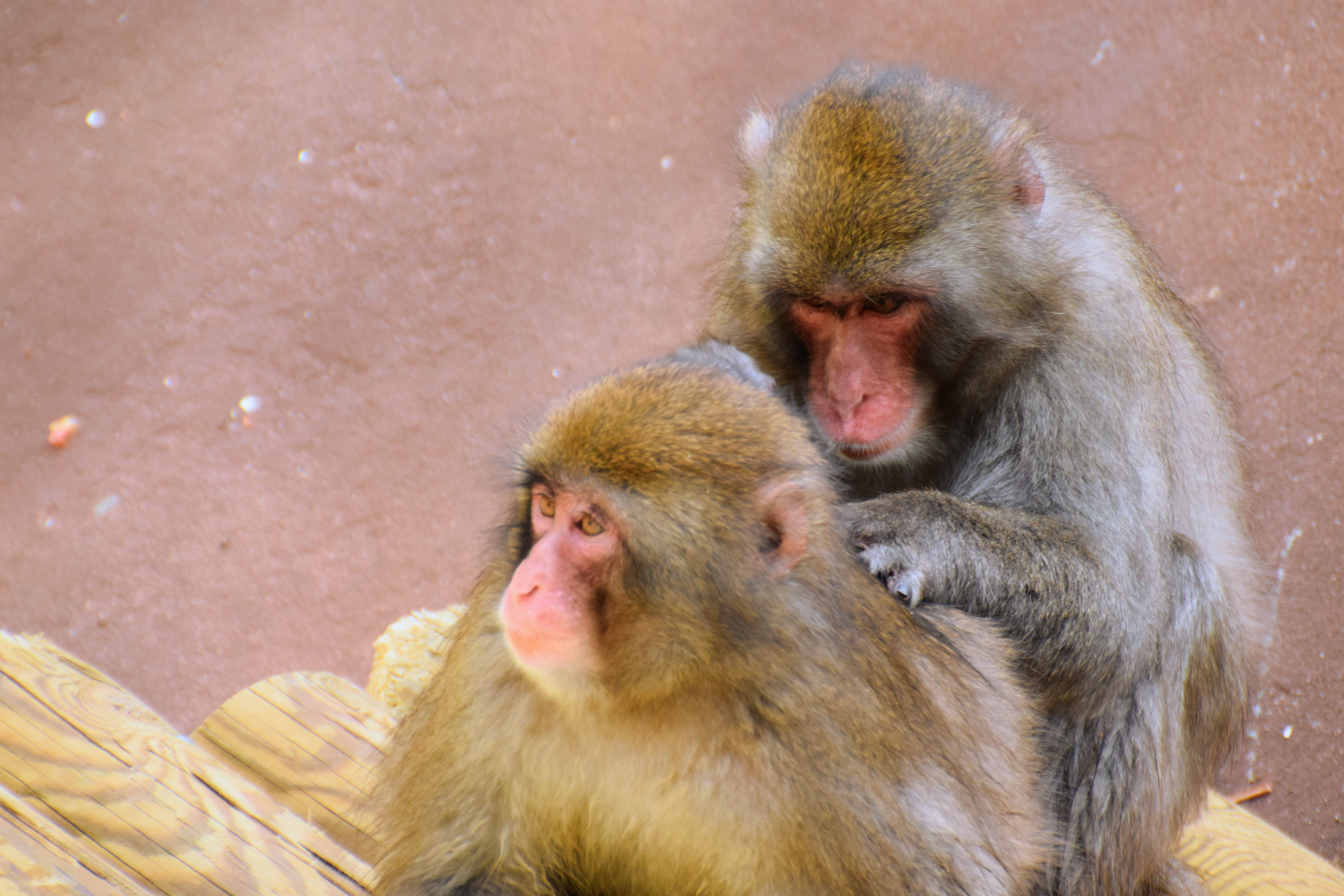
These Japanese macaques (snow monkeys) had very short arms, as primates go, and lived in quite a large colony at this zoo. They spent a lot of time grooming each other. The largest, most impressive male was being shadowed at a distance of five or so feet by a smaller, less impressive male, who was trying to look like he wasn’t following. Every time the big male sat down, the other male sat too, but tried to act nonchalant, picking at his nails or whatever.
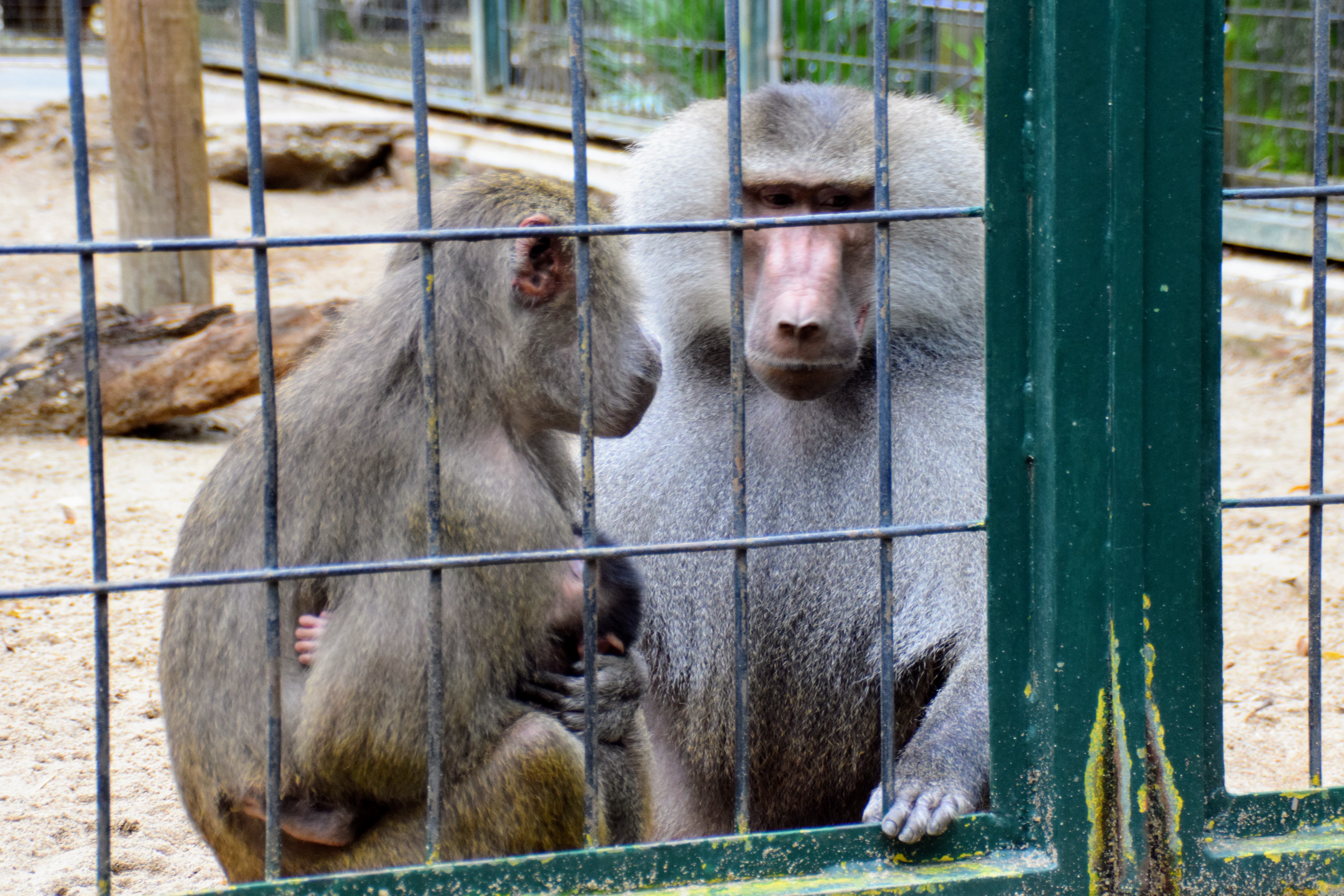
Here’s a family of Hamadryas baboons. The mom was wanting to do her own thing, but everywhere she went the overprotective dad would follow.
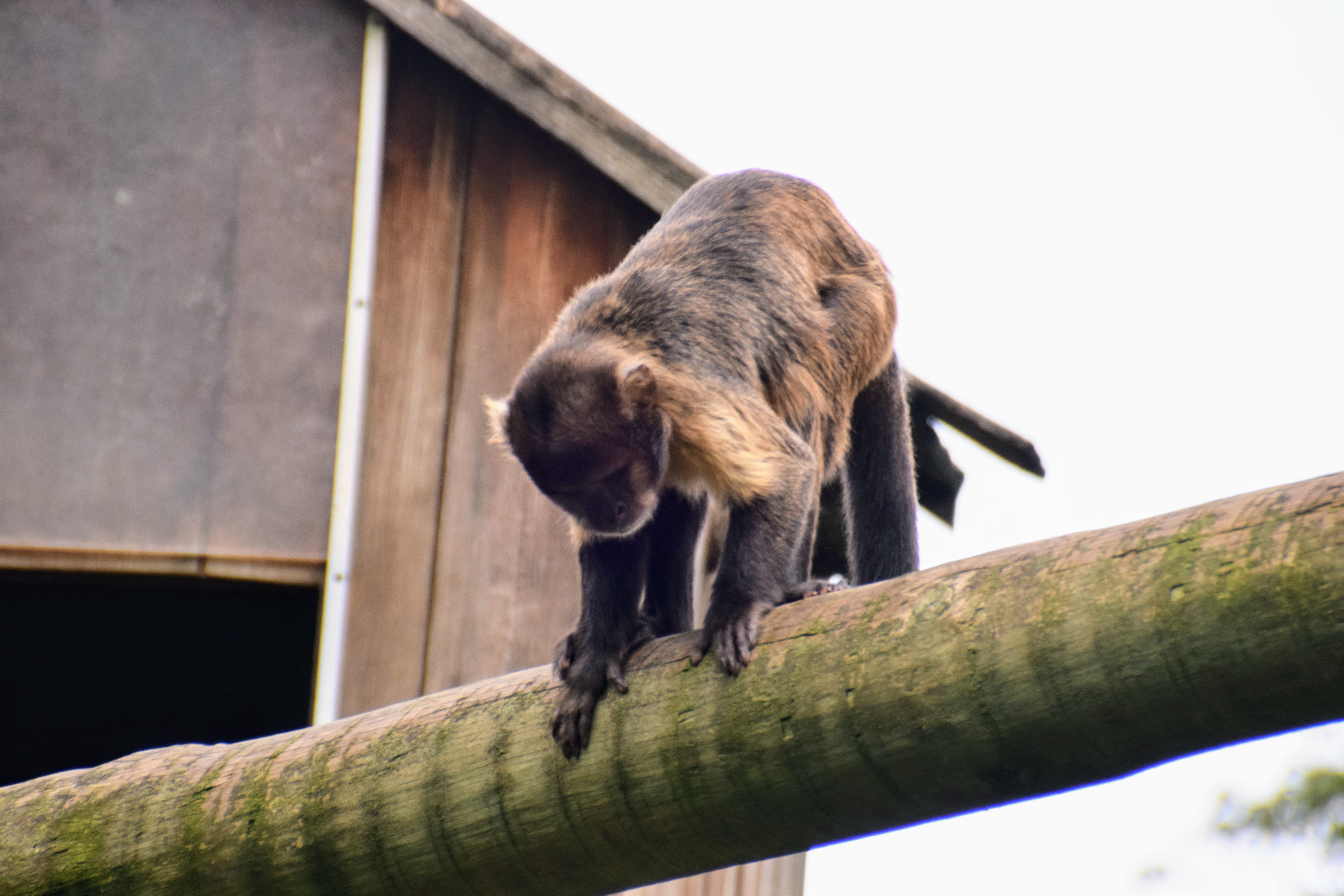
Here’s a cute capuchin, a New World monkey. You can tell Old World monkeys like baboons and colobi from New World monkeys by their tails: New World monkeys have prehensile tails, while Old World monkeys have lame tails. Capuchins are very smart, but evolved this intelligence independently from apes, as the last common ancestor of these two groups lived a long time ago and was probably not very smart.

Bonus: here’s some kind of ox that I thought was very photogenic.
